












Dmitri
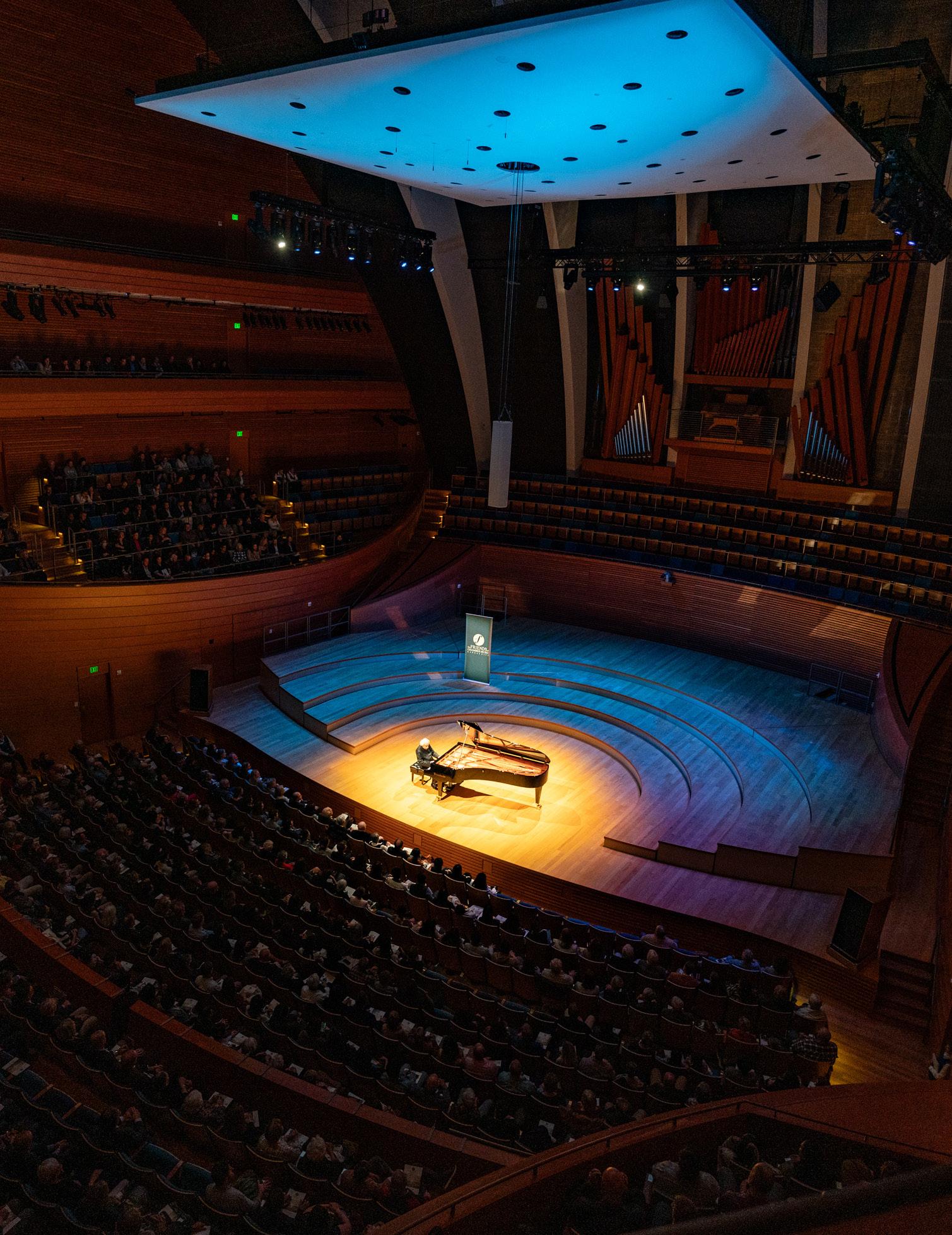
BOARD OF DIRECTORS
Dwight
Albert
Jennifer
Alietia Caughron,
Nancy
Cindy
Patricia Cleary
Tom
John Stroh
Isabel Kramer, Finance Committee PAST
William
David
Steven
Nancy
Jerome

Engaging, enchanting, enthralling ...



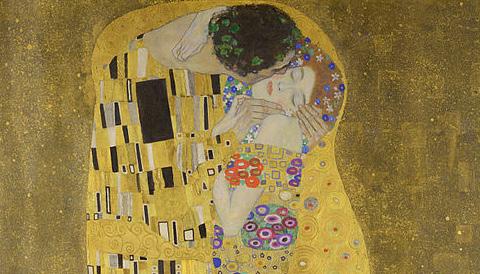






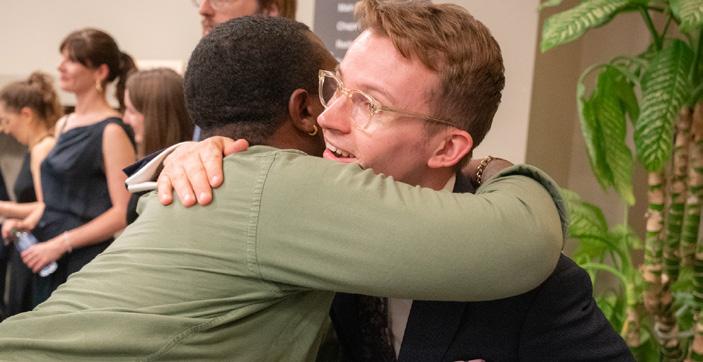


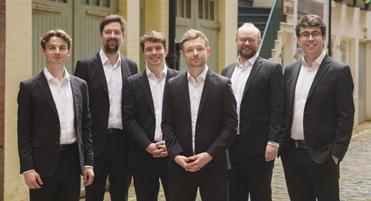


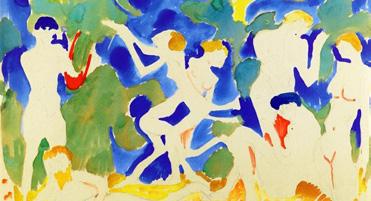
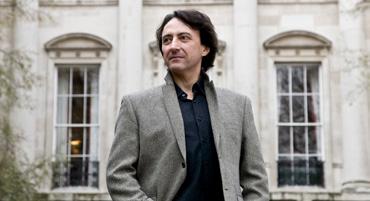
Dear Friend of Chamber Music,
Welcome to “Voyages” — our Forty-Ninth Season, a season of extraordinary chamber music for all! Incredibly diverse and exciting repertoire in the hands of some of the world’s foremost artists, many of whom will be visiting Kansas City for the very first time. What makes us particularly excited about this season are the journeys – voyages, if you will – that we will take you on from concert to concert across the rich tapestry of repertoire. The whole season then becomes one grand voyage of discovery, and you simply cannot afford to miss a single concert!
Organized in three series – International Chamber Music, Master Pianists, and Early Music – our season will begin on September 13th with “Voyage of Love.” That day will mark Schoenberg’s 150th and Clara Schumann’s 205th birthdays and in the company of virtuosos Jennifer Frautschi, Oliver Neubauer, Hsin-Yun Huang, Che-Yen Chen, and Nicholas Canellakis, joined by the two of us, we will present the magnificent Verklärte Nacht alongside music by Clara Schumann and Brahms. Four more performances will complete the International Chamber Music Series. Two award-winning quartets – one American (Isidore String Quartet) and one European (Leonkoro String Quartet) – will make their KC debuts. Adventure and excitement await our audience in their hands: Berg and Schulhoff resonating with Schoenberg, Dutilleux echoing Ravel, and Shaw and Childs trailblazing the American sound. Two more concerts – the Chamber Music Society of Lincoln Center’ “Poulenc’s Hommage to Winds” and our own curated “Voyage de passion” with Martin Beaver and Ettore Causa – will enrich the picture of Ravel’s music with the likes of Poulenc’s Sextet for Winds and Fauré’s fervent Piano Quartet in G minor.
Consisting of three concerts, the Master Pianist Series begins by juxtaposing the old and the new in the hands of Christina and Michelle Naughton – with a particular emphasis on American music. The great Nikolai Lugansky will share a magnificent tour through the music of Felix Mendelssohn, Robert Schumann, and even his own transcriptions of Richard Wagner. The phenomenal Jean-Efflam Bavouzet will present a monumental feat – the complete works of Maurice Ravel for piano in one single evening in celebration of the composer’s 150th anniversary of birth.
The Early Music Series will present one of Bach’s most foundational works – the St John Passion – with Dunedin Consort. Also, we will hear one of the most unique of Handel’s works – the operatic and theatrical cantata Apollo e Dafne – with Twelfth Night Ensemble, Nola Richardson (soprano) and Roderick Williams OBE (baritone). We will explore the legacy of Josquin des Prez with The Gesualdo Six, an ensemble composed of some of the UK’s finest consort singers. And lutenist Thomas Dunford will take us on an exciting journey from the depths of the Renaissance to the music of Erik Satie.
In addition to this thrilling line-up, we are once again presenting New Horizons — a program exploring the rich world of chamber music of today — in the company of the Garibaldi Trio, a unique clarinet-viola-piano collaboration of stellar musicians, José Franch Ballester, Marina Thibeault and David Fung. Staying at the forefront of our art form, while championing our multiple education initiatives, is what keeps The Friends thriving!
We cannot wait for you to join us on this wondrous voyage!
Yours,


Dmitri Atapine & Hyeyeon Park Artistic Directors



Visit the Eisenhower Presidential Library and Museum to experience Ike and Mamie’s story in their own words.


“Thethinproudest g I can claim is that I am from Abilene.”
- Dwight D. Eisenhower
Best U.S. Small Town to Visit TravelAwaits (2023)
Top 10 True Western Town of the Year True West Magazine (2023)
Best Historic Small Town USA TODAY (2023)

Dear Friends,
Welcome to the Friends of Chamber Music Kansas City’s Forty-Ninth Season “Voyages!” The mission of Friends of Chamber Music Kansas City (FCMKC) is to inspire lives through beautifully presented music. Our Artistic Directors, Dmitri Atapine and Hyeyeon Park, bring a wealth of experience and a keen artistic vision to this season. They have curated a beautiful season that will take you on an inspired journey as each piece of music and concert builds upon each other. One of their many gifts is knowing how to assemble a cohesive musical story that unfolds from our first concert in September to our last in May. You will not want to miss a single concert!
At FMCKC, we not only present twelve to thirteen concerts each season performed by the world’s finest musicians, but we also seek to enhance the work of our music educators through collaboration and partnership. We have an ambitious schedule of education and community outreach this season. With the help of our donors and partners, we continue to improve and grow the impact we are making in our local schools. This season, we are partnering with the Kansas City Public Schools, Heartland Chamber Music, Kansas City Young Chamber Musicians, KC Fieldtrips, and many more organizations to inspire the next generation of chamber music lovers and patrons. Most of you are here tonight because of a transformational moment you experienced listening to or performing a great piece of music. Our vision at FMCKC is to provide access and opportunities to these transformational moments to as many students and community members as possible.
We are grateful you chose to join us this evening and hope you will continue to be our Friend for years and seasons to come. You won’t want to miss a moment of the Forty-Ninth Season’s incredible journey, or Voyage, of inspired music in the hands of these extraordinary artists. Please let me know if there is anything we can do to improve your experience.
Your Friend,

Brett Robison, DMA, MBA Executive Director



When Stanislav loudenitch first started the Park International Center for Music, he began with a simple concept. Find exceptional music teachers, and give them the time, tools, focus, and dedication needed to transform exceptional students into masters themselves. An internationally-recognized Van Cliburn gold medalist, Ioudenitch assembled a team that shared his world-class skills and his passion for teaching. Other outstanding programs have great master instructors. But no other American conservatory lets those masters devote the time to their students like they do at Park ICM.
“These featured soloists from Park University’s International Center for Music represent not only the quality of performance in Kansas City, but the future of it, too.”
– THE KANSAS CITY STAR





Come experience the birth of our international stars. Visit ICM.PARK.EDU for our concert schedule today.
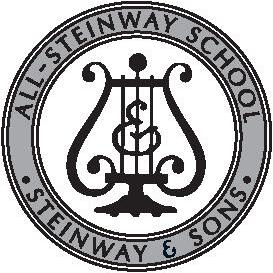










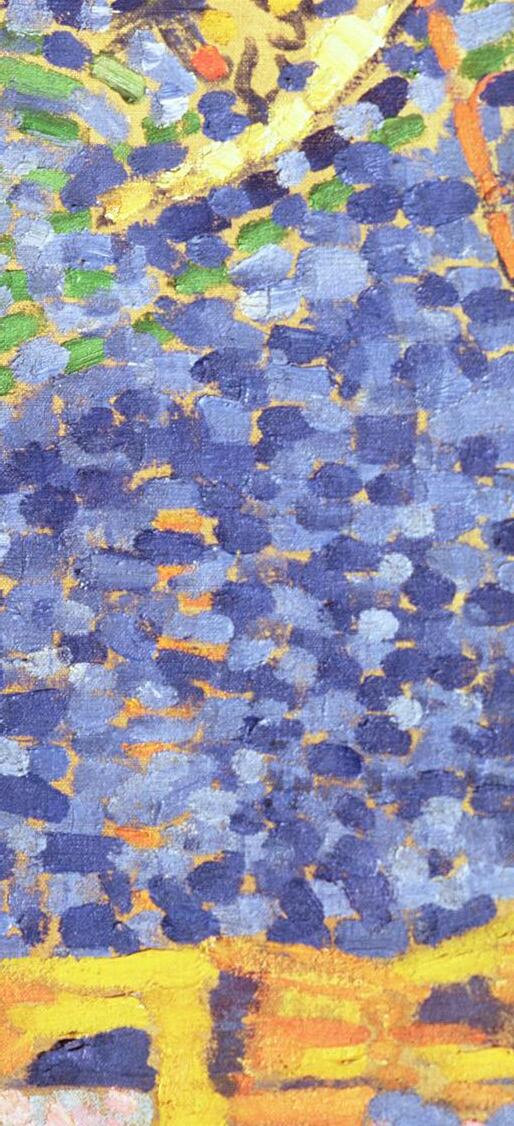

September 13, 2024 | The Folly Theater
Jennifer Frautschi, violin
Oliver Neubauer, violin
Che-Yen Chen, viola
Clara SCHUMANN (1819-1896)
Hsin-Yun Huang, viola
Dmitri Atapine, cello
Nicholas Canellakis, cello
Hyeyeon Park, piano
Three Romances for Violin and Piano, Op. 22 (1853)
Andante molto
Allegretto
Leidenschaftlich schnell
Neubauer, Park
Arnold SCHOENBERG (1874-1951)
Verklärte Nacht for String Sextet, Op. 4 (1899)
Frautschi, Neubauer, Huang, Chen, Canellakis, Atapine
Johannes BRAHMS (1833-1897)
String Sextet No. 2 in G major, Op. 36 (1864-65)
Allegro non troppo
Scherzo: Allegro non troppo - Presto griocoso
Adagio
Poco allegro
Frautschi, Neubauer, Chen, Huang, Atapine, Canellakis - intermission -
The Friends of Chamber Music is grateful for the generous support of our Concert Underwriter, Patricia Cleary Miller

Clara SCHUMANN
Three Romances, Op. 22
Composed: 1853 Duration: 10 minutes
It happens that today is the birthday of the first two of tonight’s featured composers. Clara Schumann, born on September 13, 1819, was one of the great pianists of her time, with a career extending over six decades and more than 1,300 concerts. She also composed piano pieces, chamber music, songs, and other works. Both of her parents were pianists and piano teachers, and her father Friedrich Wieck guided her career from early on. After several years as a well-known piano prodigy, Clara Wieck, despite her father’s strong objections, married Robert Schumann the day before her twenty-first birthday. They had eight children, and documented their musical lives together in diaries, musical compositions, and more. After Robert’s mental collapse, institutionalization, and early death in 1856, Clara’s career as a pianist continued, including over 200 concerts with the famous violinist, and longtime friend, Joseph Joachim. She also became an influential teacher.
Clara and Robert Schumann maintained a long, close friendship with Johannes Brahms. It was just after a visit from the twentyyear-old Brahms, and in advance of a tour with Joachim, that Clara composed the Op. 22 Romances. She dedicated them to Joachim, and they played the pieces often in concert. More often than not, the violin takes the melodic lead in these pieces. The first Romance is lyrical, almost Chopin-like in its melodic unfolding, with just a hint of the Hungarian music that was much in vogue at the time. The second is somewhat more lively and intense, but still with a song-like impulse at its heart. The third Romance, the longest of the three, is marked “passionately quick.” Blending grace and intensity, it features graceful violin melodies over a rippling piano accompaniment.
Arnold SCHOENBERG
Verklärte Nacht, Op. 4
Composed: 1899 Duration: 30 minutes
Along with Clara Schumann, also celebrating a September 13 birthday is Arnold Schoenberg – in fact, today is the 150th anniversary of his birth. Certainly one of the most influential, but also controversial, composers of the twentieth century, Schoenberg became famous for his gradual abandonment of conventional tonality and his embrace of the serial, or twelve-tone, method to structure his musical materials. Many saw Schoenberg as a radical, but Schoenberg himself felt that he was simply leading the musical traditions of the past to their logical end.
But these innovations came later in Schoenberg’s life. In 1899, the year he composed Verklärte Nacht, Schoenberg was just twenty-five years old, had written relatively little music, and had only published three sets of songs. In terms of musical style, Schoenberg at this point continued to embrace the model of his teacher Alexander von Zemlinsky, employing a highly chromatic, but still tonal, musical language within a logical formal structure featuring the variation and development of musical ideas. This could be thought of as something of a combination of the ideals of Richard Wagner and Johannes Brahms, still the two major figures in Viennese musical life many years after their passing.
Composing his early songs, Schoenberg turned frequently to the poetry of Richard Dehmel. He did so again for Verklärte Nacht
(Transfigured Night), probably the first descriptive tone poem for chamber ensemble – pairs of violins, violas, and cellos. (Schoenberg also arranged the work for full string orchestra in 1917, revising that version in 1943.) Composed in a mere three weeks during a September vacation in the Austrian countryside, the work was controversial – drawing hisses and even inspiring fistfights – at its Vienna premiere on March 18, 1902. This response was due to both the work’s sensual and sensitive theme and harmonic adventurousness. But still, Verklärte Nacht proved in the end to be a success, and won Schoenberg his first fame.
In Dehmel’s poem Verklärte Nacht, drawn from the 1896 collection Weib und Weit (Woman and World), a young woman tells her lover, during a moonlight walk in the forest, that she is pregnant by another man, a man she never loved. The lover replies gently that the strength of their feelings for one another will make the soon-to-be-born child their own. Schoenberg was able to draw on his own feelings for Mathilde von Zemlinsky (whom he would later marry), the sister of his teacher Alexander von Zemlinsky, in composing the highly-charged Verklärte Nacht. While Schoenberg’s music – which can stand on its own even as it captures the events and emotions of the poem – is chromatic and does turn dissonant in spots, there is no sign yet of the twelve-tone technique that later made Schoenberg famous, or infamous.
Although presented as a continuous stretch of music, the work can be seen as being in five sections corresponding to the five stanzas of Dehmel’s poem. They fall into something like an ABACA form, with A representing the two protagonists walking. The opening, in D minor, unfolds tentatively and throbs quietly with emotion. In a barren wood and under a cloudless sky, the moon seems to follow the two lovers as they walk. The intensity of the scene is depicted in music that ebbs and flows, with passionate, striving melodic phrases and haunted tremolos. It is music “suggestive of deep sorrow,” in the words of Schoenberg’s student Anton Webern. After a time, the tone shifts, becoming very dramatic. The texture grows very dense and contrapuntal, and the tonality more uncertain, as the woman reveals her secret: “I am walking here with you in a state of sin … I despaired of happiness, and yet I still felt a grievous longing for life’s fullness, for a mother’s joys.”
After the man takes some time to assess the woman’s words, in music that is uncertain and transitional in character, the second half of the work moves fairly firmly into D major. The warmth of the music – almost hymn-like at times, ardent and passionate at others – and its more focused tonality reflect the man’s reply to the woman’s revelation, a combination of forgiveness and acceptance: “See how brightly the universe gleams! There is a radiance on everything.” More extended melodic phrases move from instrument to instrument over a gentle harmonic backdrop. Quiet arpeggios and harmonics mark the work’s conclusion as the melodies return, in Schoenberg’s words, “modified anew, so as to glorify the miracles of Nature that have changed this night of tragedy into a transfigured night.”
There are two other major works with nocturnal themes coming up this season: Ainsi la nuit by Henri Dutilleux, to be played by the Isidore String Quartet on December 6, and Maurice Ravel’s Gaspard de la nuit, part of Jean-Efflam Bavouzet’s all-Ravel recital on May 9, 2025.
Zwei Menschen gehn durch kahlen, kalten Hain; der Mond läuft mit, sie schaun hinein.
Der Mond läuft über hohe Eichen; kein Wölkchen trübt das Himmelslicht, in das die schwarzen Zacken reichen.
Die Stimme eines Weibes spricht:
Ich trag ein Kind, und nit von Dir, ich geh in Sünde neben Dir. Ich hab mich schwer an mir vergangen. Ich glaubte nicht mehr an ein Glück und hatte doch ein schwer Verlangen nach Lebensinhalt, nach Mutterglück und Pflicht; da hab ich mich erfrecht, da ließ ich schaudernd mein Geschlecht von einem fremden Mann umfangen, und hab mich noch dafür gesegnet.
Nun hat das Leben sich gerächt: nun bin ich Dir, o Dir, begegnet.
Sie geht mit ungelenkem Schritt.
Sie schaut empor; der Mond läuft mit. Ihr dunkler Blick ertrinkt in Licht.
Die Stimme eines Mannes spricht:
Das Kind, das Du empfangen hast, sei Deiner Seele keine Last, o sieh, wie klar das Weltall schimmert! Es ist ein Glanz um alles her;
Du treibst mit mir auf kaltem Meer, doch eine eigne Wärme flimmert von Dir in mich, von mir in Dich. Die wird das fremde Kind verklären, Du wirst es mir, von mir gebären; Du hast den Glanz in mich gebracht, Du hast mich selbst zum Kind gemacht.
Er faßt sie um die starken Hüften. Ihr Atem küßt sich in den Lüften.
Zwei Menschen gehn durch hohe, helle Nacht. Richard Dehmel
Two people walk through a bare, cold grove; the moon accompanies them, they gaze into it. The moon moves above tall oaks; not a cloud blurs the heavenly light, into which the black spikes reach. The voice of a woman speaks:
I am carrying a child, and not from you, I walk in sin beside you. I have greatly wronged myself. I no longer believed in happiness and yet I had a great longing for the substance of life, for a mother’s joy and duty; so I dared, shuddering, I let myself be embraced by a stranger, and even blessed myself for it. Now life has taken revenge: now I have met you, oh you.
She walks with clumsy steps. She looks up; the moon accompanies her. Her dark gaze drowns in light. The voice of a man speaks:
The child you have conceived, let it be no burden to your soul, oh see how clearly the universe glimmers! There is a radiance around everything; we drift together on a cold sea, yet a unique warmth shimmers from you into me, from me into you. It will transfigure the stranger’s child, you will bear it to me, from me; you have brought radiance into me, you have made me into a child myself.
He grasps her strong hips. Their breath kisses in the air. Two people walk through a tall, bright Night.
Translated by D.A.

Johannes BRAHMS
String Sextet No. 2 in G major, Op. 36
Composed: 1864-65 Duration: 38 minutes
Johannes Brahms’s Sextet No. 1 was published in 1862 to such great success that, two years later, he embarked on a second. This new work was largely composed during a summertime stay, with Clara Schumann and her children, at the wooded country setting of Lichtenthal, near the Baden-Baden spa resort. Completed the following May, the Sextet No. 2 was published in 1866 and given its first performance in Boston on October 11 of that year, with the European premiere taking place the following month in Zurich.
It is interesting, and perhaps revealing, that Brahms chose the unusual sextet form for his first strings-only chamber works. (Brahms, a pianist, had always included a piano in his chamber music up until the two Sextets.) Sextets were not yet, and still aren’t, commonplace. Perhaps the first were the nine string sextets, Op. 23, by Luigi Boccherini, composed in 1776. There were a mere handful of subsequent such works before Brahms’s two. Soon after, though, string sextets multiplied, with major works by Antonín Dvořák, Piotr Tchaikovsky (his Souvenir de Florence, Op. 70), and of course Schoenberg’s Verklärte Nacht, coming in the decades after Brahms’s works.
In Brahms’s case, knowing his reverence for, and fear of comparison with, the great masters of the past, perhaps he was as yet deliberately avoiding the form of the string quartet, where there were so many masterworks by the likes of Mozart and his beloved Beethoven. Brahms was in fact writing string quartets during this period of time, to all accounts quite a few of them. But he apparently destroyed them all, only publishing his first quartets, the two of Op. 51, in 1873 (you may have heard the Apollon Musagète Quartet perform the Quartet in A Minor, Op. 51 No. 2 in this series this past February).
Around the time of the Sextet No. 2, Brahms was in the middle of one of the big romances in his life, with the singer Agathe von Siebold. Many of their friends, in fact, felt that an engagement was on the way. But Brahms wasn’t ready to commit, and wrote her that while he wanted to continue their relationship, he didn’t wish to “wear fetters.” They soon parted ways, and the composition of the Sextet No. 2 was to some extent cathartic for Brahms: after completing the work, he wrote to a friend, “Here I have freed myself from my last love.” But she was constantly on his mind. In fact, at three points in the Sextet’s first movement, one can hear the violins playing her name in notes: A-G-A-D-H-E
(with the “D” replacing the “T,” and the “H” designating the note B natural in German – you will encounter this turning of names into notes and musical themes again later this season).
The melodic material of all four movements is related through the use of rising fourth and fifth intervals – sometimes in the melody itself, sometimes within the accompaniment. The first movement, the longest of the four, opens with a murmuring drone in the viola, over which the first violin, echoed by the other instruments, presents the poignant first melody. This theme is repeated by the cello, with the violins taking up the murmuring accompaniment. After another lovely, waltz-like theme is heard in the violin, fragments of the first are developed at some length and in intricate counterpoint, before the expected restatement of the main ideas.
The Scherzo – here the second movement, rather than the third as is often the case – features a lyrical, somewhat wistful main melody in duple meter over pizzicato notes. The rhythms and contrapuntal interplay, while seeming to flow easily, are in fact rather complex and sophisticated. The more gentle mood of this section is soon broken by a rousing folk dance in triple meter. This is but a brief interruption, though, before the delicate sounds of the opening idea reappear.
As was the case in the First Sextet, the slow movement is a theme and variations, among the forms of which Brahms was a master. Here there are five variations, in which the contrapuntal layering of the instruments once again becomes fairly complex. Initially, the mood is one of longing and melancholy, focusing on the violins and violas, with musical sighs and descending scales. The cellos soon join in, providing the backdrop for pizzicati from the other strings. The music grows intense, even stormy in one variation, and meanders gently in another. Eventually, though, the minor key is abandoned for a major key as the tone lightens and the string textures become rich and full.
In the stormy Finale, a nervous introduction quickly leads to a song-like theme. These two moods alternate throughout the movement – moving from sprightly perpetual-motion passages that call to mind some of the music of Felix Mendelssohn, to music of an almost radiant warmth – as the main ideas are developed, culminating in an exciting, joyous coda.
Program notes by Chris Morrison

Two-time GRAMMY nominee and Avery Fisher career grant recipient Jennifer Frautschi has garnered worldwide acclaim as a deeply expressive, musically adventurous violinist with impeccable technique and a wide-ranging repertoire. Equally at home in the classic and contemporary repertoire, her recent seasons have featured performances and recordings of works ranging from Robert Schumann and Lili Boulanger to Barbara White and Arnold Schoenberg. She has also had the privilege of premiering several new works composed for her by prominent living composers. Critics have described her performances as ‘electrifying,’ ‘riveting’ and ‘mesmerizing’, lauding her ‘staggering energy and finesse’ and ‘fierce expression.’
After a recent performance of the Brahms Violin Concerto, Cleveland Classical wrote: ‘We witnessed the most magnificent performance by a guest soloist in recent memory. From the outset of the Brahms Concerto, she was a stunning presence, her playing a breathtaking conflation of grace and grit, and at times downright ferocious.’
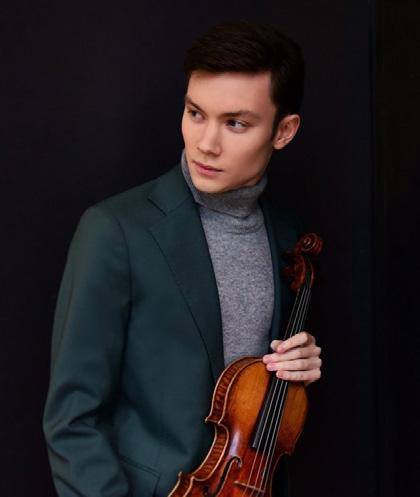
Praised for his uniquely beautiful playing and mature artistry, 24-year-old violinist Oliver Neubauer is quickly establishing himself as one of the most exciting young artists of his time. First prize winner of the 2023 Susan Wadsworth Young Concert Artists International Auditions, Oliver is a YCA Jacobs Fellow and is managed worldwide by Young Concert Artists.
Highlights of the 2023-24 season include Oliver’s debut with the Springfield Symphony Orchestra playing the Korngold Concerto (as first prize winner of the 26th Hellam Competition), a concert and video-audio recording in Rome (as third prize winner of the ArsClassica International Competition), and a performance of the Mozart Sinfonia Concertante along with his father, Paul Neubauer, and an orchestra comprised of members of the Metropolitan Opera Orchestra. Oliver will also be making appearances at Jupiter Chamber Players (NY), Apex Concerts (Reno, NV), PMP Suncoast (FL), Mostly Music (NJ), Parlance Chamber Concerts (NJ), and will perform recitals at Lincoln Center’s Bruno Walter Auditorium and The Juilliard School’s Paul Hall. During the summer of 2024, Oliver will attend the Marlboro Music Festival.
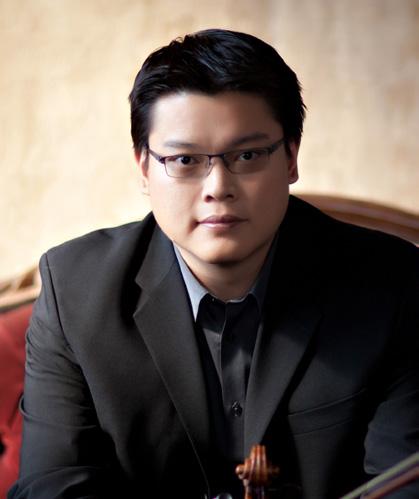

Taiwanese-American violist Che-Yen Chen has established himself as an active performer and educator. Since winning First Prize in the 2003 Primrose International Viola Competition and the “President Prize” of the Lionel Tertis International Viola Competition, he was described as a musician whose “most impressive aspect of his playing was his ability to find not just the subtle emotion, but the humanity hidden in the music.”
As the founding and former member of the Formosa Quartet, he won the first prize in the 2006 London International String Quartet Competition, founded the Formosa Chamber Music Festival in Taiwan, and has released recordings on EMI, Delos, New World, and Bridge Records. Chen was the principal violist of the San Diego Symphony and Mainly Mozart Festival Orchestra for eight years and has appeared as guest principal with Los Angeles Philharmonic, Los Angeles Chamber Orchestra, San Francisco Symphony, Cincinnati Symphony Orchestra, National Arts Centre Orchestra, and Toronto Symphony. A former Lincoln Center Chamber Music Society Two member, Chen frequently performs and teaches at music festivals across North America and Asia.

Violist Hsin-Yun Huang has forged a career by performing on international concert stages, commissioning and recording new works, and nurturing young musicians. Ms. Huang has appeared as soloist with leading orchestras in Beijing, Taipei, and Bogota, amongst others. Inspired by authentic folk elements, the focus and highlight of Ms. Huang’s 2022-23 season is the program “Strings of Soul”, in collaboration with composer Lei-Liang and pipa virtuoso Wu Man. Additional performances this season include chamber and solo recitals in New York City, Philadelphia, and more.
She was the first solo violist to be presented in the National Performance Center of the Arts in Beijing and was featured as a faculty member alongside Yo-Yo Ma in Guangzhou. She has commissioned compositions from Steven Mackey, Shih-Hui Chen, and Poul Ruders. Her 2012 recording for Bridge Records, titled Viola Viola, won accolades from Gramophone and BBC Music Magazine. Her most recent release is the complete unaccompanied sonatas and partitas of J.S. Bach, in partnership with her husband, violist Misha Amory.

Nicholas Canellakis has become one of the most sought-after and innovative cellists of his generation, praised as a “superb young soloist” (The New Yorker) and for being “impassioned ... the audience seduced by Mr. Canellakis’s rich, alluring tone” (The New York Times). A multifaceted artist, Canellakis has forged a unique voice combining his talents as soloist, chamber musician, curator, filmmaker, and composer/arranger.
Canellakis is an artist of the Chamber Music Society of Lincoln Center, with which he performs regularly in Alice Tully Hall and on tour internationally, including London’s Wigmore Hall, The Louvre in Paris, the Seoul Arts Center in Korea, and the Shanghai and Taipei National Concert Halls.
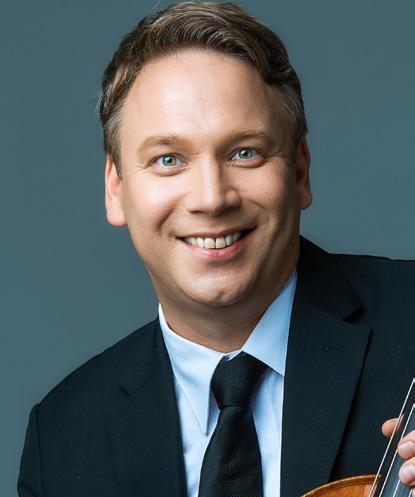
Described as a cellist whose “playing is highly impressive throughout” (The Strad), Dmitri Atapine has appeared at leading venues such as Alice Tully Hall, Zankel and Weill Halls at Carnegie Hall, Chicago Cultural Center, and the National Auditorium of Spain. He regularly preforms with The Chamber Music Society of Lincoln Center and is a frequent guest at festivals including Music@Menlo, Chamber Music Northwest, La Musica Sarasota, Cactus Pear, Pacific Music Festival, Aldeburgh, and Aix-en-Provence.
Mr. Atapine’s many awards include top prizes at the Carlos Prieto International Cello, and the Premio Vittorio Gui chamber competitions. His recent engagements included collaborations with such distinguished musicians as Cho-Liang Lin, Paul Neubauer, David Finckel, Ani and Ida Kavafian, Wu Han, Bruno Giuranna, David Shifrin, the Emerson, St. Lawrence and Miró quartets. Mr. Atapine’s recordings, including a world-premiere of works by Lowell Liebermann, can be found on the Naxos, Albany, Urtext Digital, BlueGriffin and Bridge record labels. Mr. Atapine holds several directorships, among them Friends of Chamber Music Kansas City, Apex Concerts, Young Performers at Music@Menlo and Ribadesella Festival. Cello professor at the University of Nevada, Reno, Mr. Atapine holds a doctorate from the Yale School of Music where he was a student of Aldo Parisot.
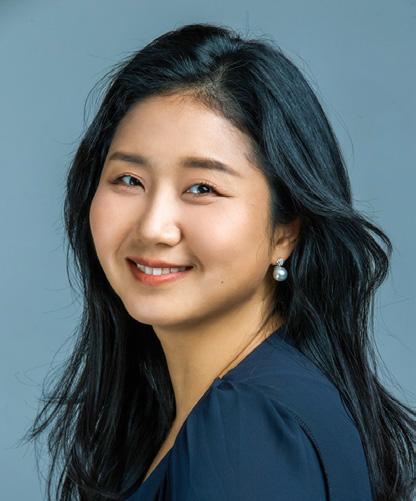
Described as “a pianist with power, precision, and tremendous glee” (Gramophone Magazine) and praised for her “very sensitive” (Washington Post) and “highly nuanced” (Lucid Culture) playing, Hyeyeon Park has appeared as a soloist and chamber musician on major concert stages throughout the United States, Canada, Mexico, Germany, Austria, Italy, Spain, Japan and her native Korea. An avid chamber musician, Park has collaborated with such musicians as David Shifrin, Ani Kavafian, Ida Kavafian, Paul Neubauer and many others appearing frequently at Yellow Barn Festival (Vermont), Santander Music Festival (Spain), Great Mountains Festival (Korea), Music@Menlo Festival (California),and Chamber Music Northwest (Oregon).
Park holds a bachelor’s of music degree at Korea National University with Professor Daejin Kim, master of music degree and artist diploma from Yale School of Music with Professor Peter Frankl, where she was a post-graduate artist associate following her graduation. She holds the doctor of musical arts degree from Peabody Conservatory with Professor Yong Hi Moon. Park has been recently appointed as co-director of Friends of Chamber Music Kansas City, and already serves as the co-director of Young Performers Program at Music@Menlo Chamber Music Festival and Institute. She is the associate professor of piano at the University of Nevada, Reno, where she also is the artistic director of the Apex Concerts.

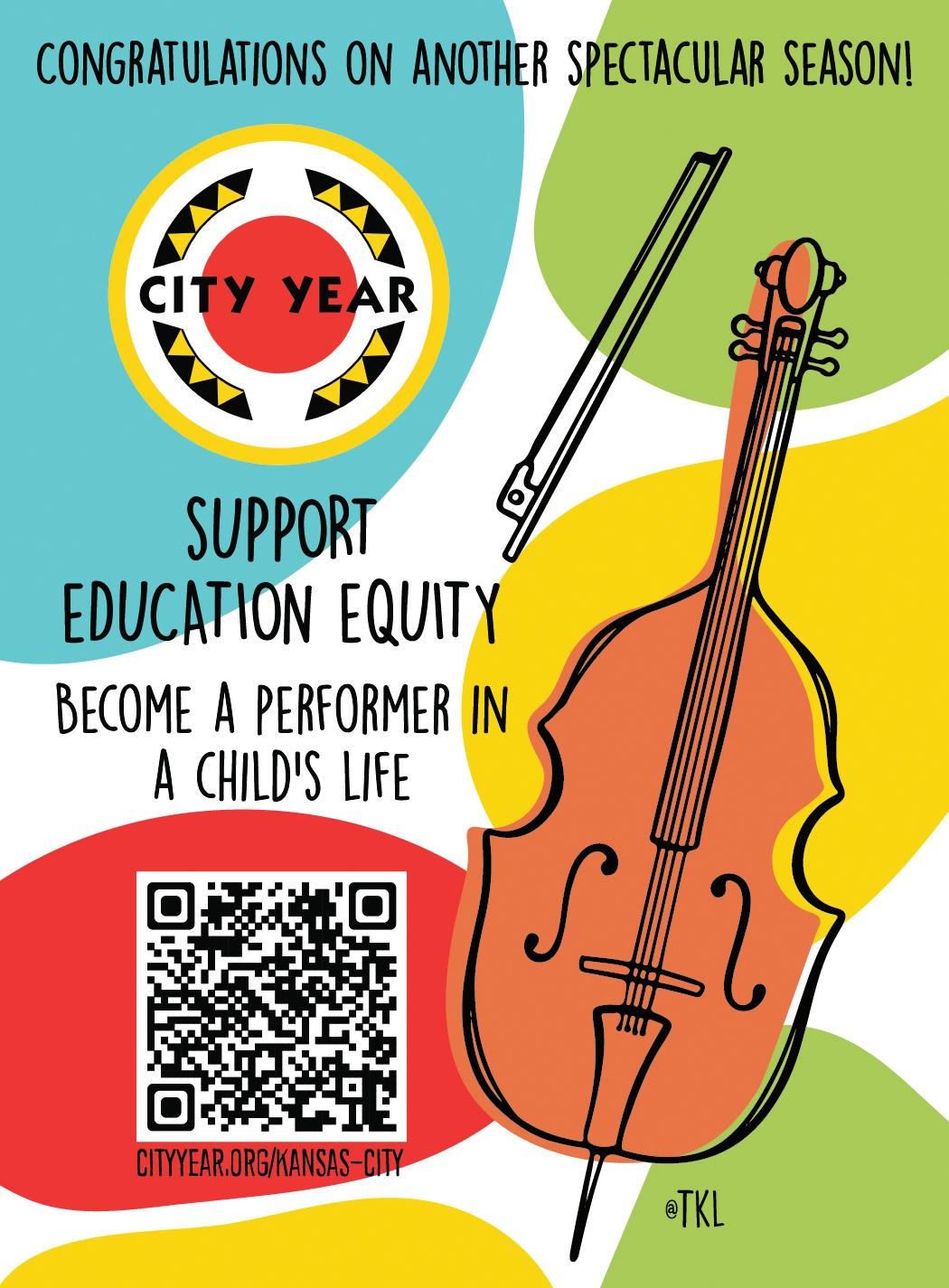




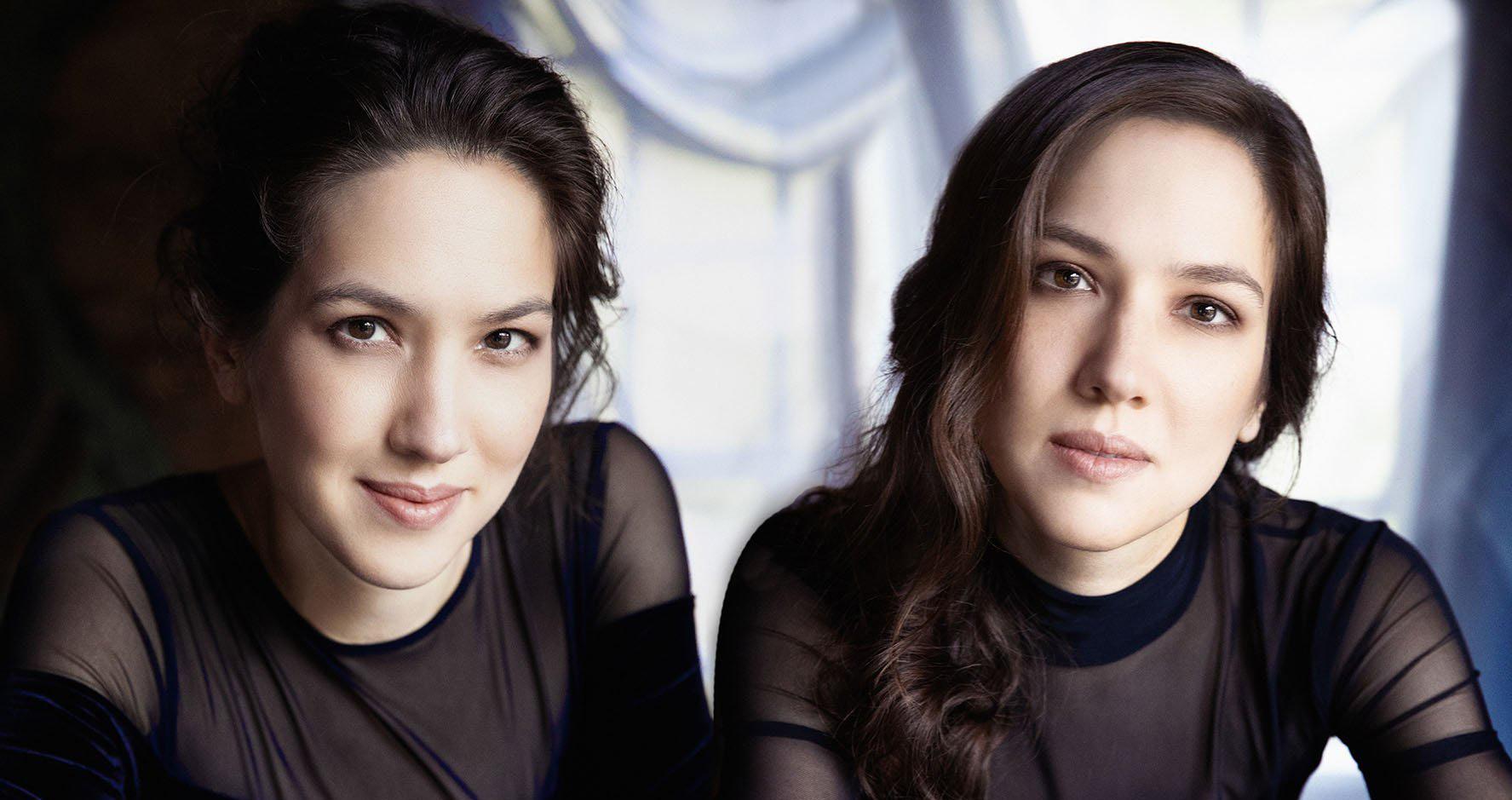

September 28, 2024 | The Folly Theater
Wolfgang Amadeus MOZART (1756-1791)
Sonata for Piano Four-Hands in D Major, K. 381 (1772)
Allegro
Andante
Allegro molto
Claude DEBUSSY (1862-1918)
Six épigraphes antiques for Piano Four-Hands (1914)
Pour invoquer Pan, dieu du vent d’été
(“To invoke Pan, god of the summer wind”)
Pour un tombeau sans nom
(“For a nameless tomb”)
Pour que la nuit soit propice
(“In order that the night be propitious”)
Pour la danseuse aux crotales
(“For the dancer with crotales”)
Pour l’égyptienne
(“For the Egyptian woman”)
Pour remercier la pluie au matin
(“To thank the morning rain”)
Jennifer HIGDON (b.1962)
Tania LEÓN (b.1943)
Satiné for Two Pianos (2000)
Entrada Satin
Ellen Taaffe ZWILICH (b.1939)
Snoopy Does the Samba (1997)
Jumble Dance from Dance Card for Piano Four-Hands (2017) - intermission -
Leonard BERNSTEIN (1918-1990)
Overture to Candide (1956)
Sergei RACHMANINOFF (1873-1943)
Suite No. 2 for Two Pianos in C Major, Op. 17 (1901)
Introduction: Alla marcia
Valse: Presto
Romance: Andantino
Tarantelle: Presto
The Friends of Chamber Music is grateful for the generous support of our Concert Underwriters, Irv and Ellen Hockaday
Wolfgang Amadeus MOZART
Sonata in D Major, K.381
Composed: 1772 Duration: 14 minutes
Mozart was a youth of fifteen when he wrote the first three of his five sonatas for piano duet. Those early three were composed for himself and his sister Nannerl to play in the concerts they were presenting throughout Europe, accompanied by their father Leopold. There is a well-known painting from around 1780 of Mozart and Nannerl sitting at the keyboard together, their father leaning against the instrument with violin in hand, and a painting of their recently-deceased mother hanging prominently on the wall behind them.
The present Sonata in D major was composed in the middle of the year 1772, while Mozart was in Italy with his father Leopold, supervising the premiere of the opera Lucio Silla. An onrush of scales opens the playful first movement Allegro, the two pianists sometimes playing in unison, sometimes answering one another. In the central development, the music moves to the minor and briefly becomes stormy before the return of the opening themes, with some further variation and returns of the minor key. The slow second movement, the longest of the three, moves steadily, with a feeling of nobility. On a couple of occasions, the melody descends to the bass, with filigree unfurling above. By contrast, the third movement is lively, opening with and regularly punctuated by a trio of assertive chords.
Claude DEBUSSY Épigraphes antiques
Composed: 1914 Duration: 16 minutes
A lot of the material for the six Épigraphes antiques was drawn from the music Debussy created for his Chansons de Bilitis, a work of 1901 that featured musical accompaniments, scored for pairs of flutes and harps along with celesta, for recitations of poems (evocative of ancient Greece and the poetry of Sappho) by Debussy’s friend Pierre Louÿs. That unusual piece was abandoned after a single performance. Thirteen years later, Debussy, in need of some ready cash, took about half of the Chanson de Bilitis music, six of its twelve pieces, and arranged them for piano duo for the Épigraphes antiques. He later also arranged the pieces for solo piano, and there is an orchestral version by conductor Ernest Ansermet. Many of Debussy’s musical trademarks – including the use of modal melodies and harmonies as well as whole-tone, chromatic, and octatonic scales – are present in the Épigraphes antiques.
The first piece, Pour invoquer Pan, dieu du vent d’été (To invoke Pan, god of the summer wind), employs the Dorian mode and is gentle and stately, some of its figuration evoking the movement of the wind. In Pour un tombeau sans nom (For a nameless tomb), a wandering line, by itself in the upper range of the piano, is answered by a similar line in the bass. The wandering melody is soon filled in by stately chords that might call to mind a funeral procession. The third piece, Pour que la nuit soit propice (In order that the night be propitious), features delicate figuration accompanying the occasionally troubled nocturnal mood, with its frequent tolling single notes.
Pour la danseuse aux crotales (For the dancer with cymbals) is an evanescent dance, sensuous, flowing, and sometimes playful. In the fifth piece, Pour l’égyptienne (For the Egyptian woman), a slow repeating bass figure accompanies a tentative series of decorative melodic figures and rich chords. Then the bass figure becomes more active and dance-like, before slowing again. In the concluding Pour remercier la pluie au matin (To thank the morning rain), we hear the falling of rain drops in the middle of the keyboard, with melodic figures above and below it.
Jumble Dance from Dance Card
Composed: 2017 Duration: 4 minutes
Jennifer Higdon is one of America’s most acclaimed and frequently performed living composers. She received the 2010 Pulitzer Prize in Music for her Violin Concerto, a 2010 Grammy for her Percussion Concerto, and a 2018 Grammy for her Viola Concerto. Most recently, Higdon received the Nemmers Prize from Northwestern University, given to contemporary classical composers of exceptional achievement who have significantly influenced the field of composition. Higdon enjoys several hundred performances a year of her works, and blue cathedral is one of today’s most performed contemporary orchestral works. Dr. Higdon holds the Rock Chair in Composition at The Curtis Institute of Music in Philadelphia.
The orchestral suite Dance Card was commissioned by the New Century Chamber Orchestra in San Francisco, the River Oaks Chamber Orchestra in Houston, and the Chicago Sinfonietta. The third piece in the suite, Jumble Dance, alternates measures of four and three beats, giving the dance what Higdon calls “a certain lopsided feel.” Higdon made the arrangement featured in this concert specially for Christina and Michelle Naughton, saying that it “grew out of the excitement of hearing these two pianists make thrilling music, infused with energy and verve.”
Satiné
Composed: 2000 Duration: 7 minutes
Tania León was born in Cuba of mixed French, Spanish, Chinese, African, and Cuban heritage. She started playing piano at age four. After studies in Cuba, she moved to New York in 1967. In 1969, León became a founder and the first musical director of Arthur Mitchell’s Dance Theater of Harlem. Along with establishing its music department, school, and orchestra, she composed several works for that troupe. In 1994 she co-founded the American Composers Orchestra Sonidos de las Americas Festivals as their Latin American Music Adviser. Since 1985, she has taught at Brooklyn College, and in 2006, she was named Distinguished Professor Emeritus by the City University of New York. León won the 2021 Pulitzer Prize for Music, the first African-American woman to win the award, for her orchestral work Stride. Commissioned by Mirta Gomez and Gustavo Romero, Satiné is an exciting work that combines dissonant riffs, repeating ideas that hint at minimalism, and jazzy dance rhythms, with virtuoso passages for both pianists throughout.
Ellen Taaffe ZWILICH
Snoopy Does the Samba from Peanuts Gallery
Composed: 1997 Duration: 3 minutes
Ellen Taaffe Zwilich was the first woman ever to win the Pulitzer Prize in Music, for her Symphony No. 1 in 1983. She has also won an Academy Award, four Grammy nominations, and a host of other prizes and recognition. She got her doctorate from the Juilliard School, and, along with her composing career, is currently a professor in the college of music at Florida State University. At one point, Zwilich’s music came to the attention of Charles M. Schulz, the creator of the Peanuts comic strip and an avid classical music fan. In 1990 he even wrote her into a Peanuts strip. Zwilich and Schulz subsequently became friends, and, a few years later, Zwilich repaid his tribute to her by writing the Peanuts Gallery for piano and orchestra, dedicated to Schulz, for a 1997 Carnegie Hall children’s concert. In the work’s third movement, Snoopy Does the Samba, Zwilich decided to have Snoopy dance, as he so often did in Peanuts cartoons. She chose the samba because it is both “hot” and “cool,” sophisticated and “a lot of fun.” This music, here arranged for two pianos, imitates the percussion of the orchestral original with its infectious rhythms, spiced with plenty of syncopation, jazzy riffs, and memorable melodies.
Leonard BERNSTEIN
Overture to Candide
Composed: 1956 Duration: 5 minutes
Leonard Bernstein – conductor, composer, pianist, author, and educator – became well-known as a composer with musicals like On the Town and West Side Story, as well as symphonies, ballets, and other works, all written while also conducting around the world. Two years before he became Music Director and Conductor of the New York Philharmonic in 1958, he collaborated with librettist Lillian Hellman in turning Voltaire’s famous 1759 novella Candide into an operetta. That first production was a dismal failure, but successful revivals in the 1970s helped establish Candide as one of Bernstein’s most vital scores. The novella tells of a handsome and optimistic young man, Candide, through whose adventures Voltaire takes shots at religion, government, war, love, and other hot topics. The Overture to Can-
dide has become one of Bernstein’s most familiar pieces. While it does make references to some of the tunes found elsewhere in the score, the Overture is structured as a short sonata-allegro form, complete with a Rossini-like crescendo at the end.
Sergei RACHMANINOFF
Suite No. 2, Op. 17
Composed: 1990-01 Duration: 23 minutes
One of Sergei Rachmaninoff’s earliest musical memories was of playing piano duets with his grandfather Arkady. When Rachmaninoff entered the Moscow Conservatory as a precocious twelve-year-old, he often played two-piano transcriptions of symphonies and other works at the home of his teacher Nikolai Zverev. These transcriptions were often the only way to become familiar with music in the days before radio, recordings and the internet. The Suite No. 2 and the contemporaneous Piano Concerto No. 2 were the composer’s comeback from the depression and creative impasse he had experienced since the terrible reception given his Symphony No. 1 at its 1897 premiere. According to one writer, the Suite for Rachmaninoff “always remained symbolic of the renewal of life.”
Unlike the Suite No. 1 of seven years earlier, which took the form of Rachmaninoff’s musical impressions of four poems, the Suite No. 2 is “absolute” music that doesn’t refer to anything outside itself. The Suite No. 2 was first performed on November 24, 1901, by Rachmaninoff and his cousin (and teacher) Alexander Siloti. Often remembered is another famous performance of this piece in Los Angeles in the early 1940s, just before Rachmaninoff died, when he and Vladimir Horowitz played through the Suite at a party, possibly the only time they performed together. Strong chords, sometimes evocative of ringing bells, mark the energetic first movement Introduction, a march. The second movement is a swirling Valse (Waltz); its hypnotic rhythm continues even in the more lyrical central section. A characteristically luscious Rachmaninoff melody, with arpeggios in the accompaniment, builds to a big climax in the aptly-title Romance. Finally comes a virtuoso Tarantelle, the familiar Italian dance with its insistent, charging rhythms.
Program notes by Chris Morrison


“Indeed, I’m ready to put them on a level with some of the greatest piano duos of our time...They have to be heard to be believed” said the Washington Post of Christina and Michelle Naughton. They have captivated audiences throughout the globe with the unity created by their mystical communication, as reported by the Wall Street Journal, in Christina’s own words, “There are times I forget we are two people playing together.” The Naughtons’ work as a duo was recognized in 2019 as they became the first piano duo to receive the Avery Fisher Career Grant presented by Lincoln Center.
Christina and Michelle Naughton’s career was launched with a recital debut at Kennedy Center; and an orchestral debut at the Mann Center with the Philadelphia Orchestra, which led the Philadelphia Inquirer to characterize their playing as “paired to perfection”. Subsequently, they began their careers in Europe and Asia; at Munich’s Herkulesaal and with the Hong Kong Philharmonic respectively. These appearances were met with much critical acclaim, with the Suddeutsche Zeitung proclaiming the Naughtons an “outstanding piano duo” and the Sing Tao Daily responding by the description “Joining two hearts and four hands at two grand pianos, the Naughton sisters created an electrifying and moving musical performance”.
Especially passionate about American 20th century music, Christina and Michelle have immersed themselves in several projects devoted to this theme. 2019’s American Postcard, their second album of their exclusive signing with Warner Classics, showcases a variety of 20th century American compositions and commissions by composers such as John Adams, Aaron Copland, Conlon Nancarrow, and Paul Schoenfield. Additionally, they have done several premieres of works in capacities such as commissions by the LA Phil’s Green Umbrella series, a world premiere of John Adams’ Roll Over Beethoven at NYC’s WQXR Greenespace, a European premiere of Paul Lansky’s Shapeshifters with Solistees Europeans Luxembourg, a weeklong American chamber music residency with musicians of the New World Symphony, and several concerts devoted to 20th century American music at Germany’s Klavierfestival Ruhr.
The Naughtons discography features a wide variety of musical styles. Their first album, released on the German label ORFEO in 2012 and recorded in Bremen’s Sendesaal; focuses heavily on traditional Classic and Romantic selections. It was praised by Der Spiegel Magazine for “stand(ing) out with unique harmony, and sing(ing) out with stylistic confidence, and described by ClassicsToday as a “Dynamic Duo Debut.” In February of 2016 they released their debut record on the Warner Classics label titled Visions. The album is comprised of the music of Messiaen, Bach, and Adams and was chosen as “Editor’s Choice” by Gramophone Magazine shortly after its release.
Christina and Michelle have played as soloists with orchestras such as the Boston Symphony, Philadelphia Orchestra, Atlanta, Baltimore, Detroit, Hawaii, Houston, Milwaukee, Minnesota, Nashville, New Jersey, North Caroli-
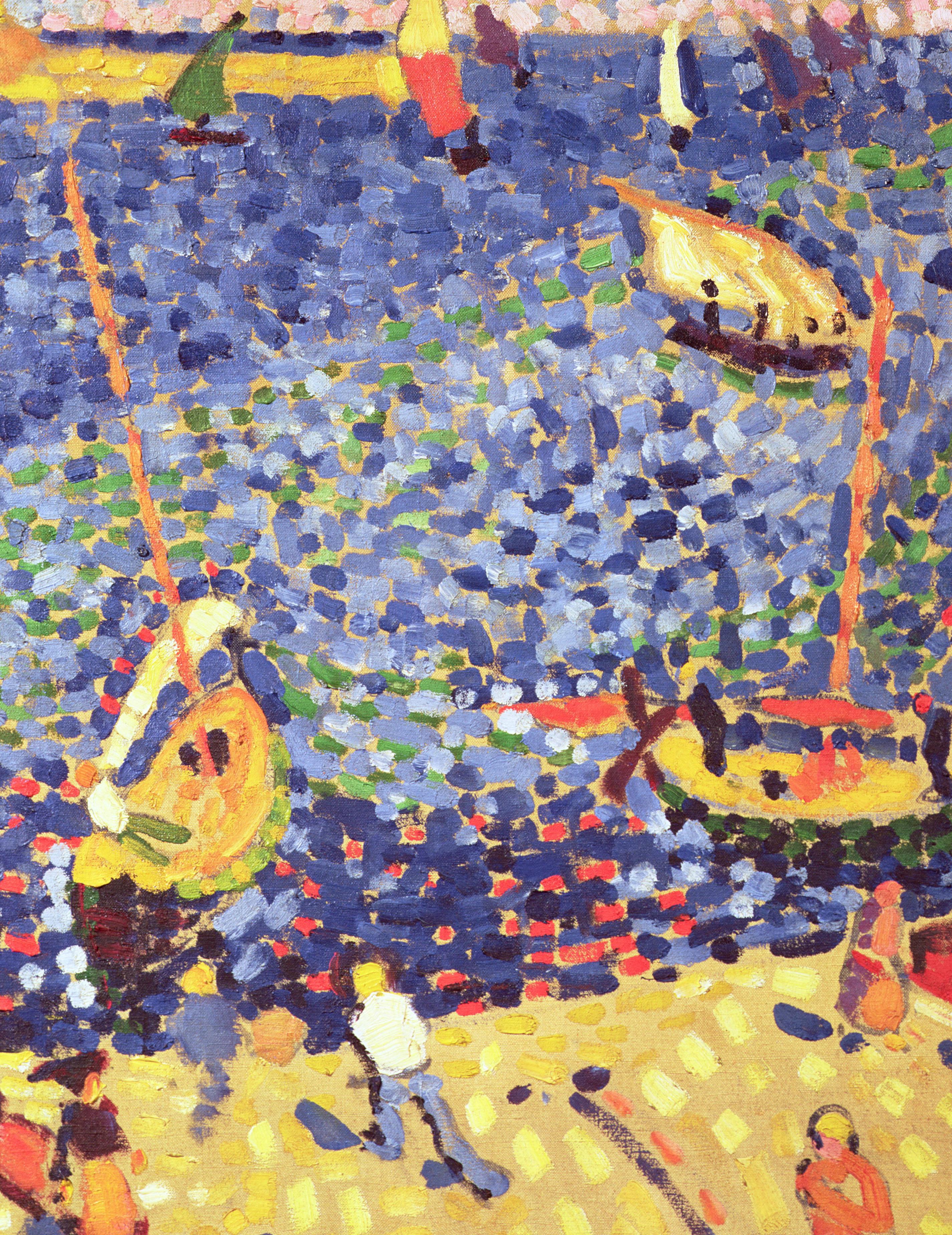
na, San Diego, St. Louis, Virginia , Pacific Symphonies; the Buffalo and Naples Philharmonics, as well as The Mahler Chamber Orchestra, Royal Scottish National Orchestra, St. Petersburg Philharmonic, Royal Flemish Philharmonic (Belgium), l’Orchestre Philharmonique de Strasbourg, the Frankfurter Opernand Museumsorchester, Hamburg Chorus, Kiel Philharmonic, Norddeutsche Philharmonic Rostock, the Netherlands Philharmonic at the Royal Concertgebouw, The Hong Kong Philharmonic, and New Zealand Symphony. Past and future seasons feature collaborations under the batons of conductors such as Stephane Deneve, Edo deWaart, JoAnn Falletta, Giancarlo Guerrero, Emmanuel Krivine, Cristian Macelaru, Andris Nelsons, Andres Orozco-Estrada, Leonard Slatkin, and Thomas Sondergaard..
Christina and Michelle Naughton are avid recitalists, performing for such notable organizations as Lincoln Center’s Great Performers, New York City’s Naumburg Orchestral Concert Series (Naumburg Bandshell at Central Park), Carnegie Hall’s Weill Recital Hall, Rockefeller Evening Concerts, le Poisson Rouge, Kennedy Center’s Terrace Theater (Washington Performing Arts), the National Gallery, the Smithsonian American Art Museum, St Paul’s Schubert Club, Los Angeles’s Walt Disney Hall, Atlanta’s Spivey Hall, Philharmonic Society of Orange County, Chamber Music San Francisco, Houston’s Cullen Theater, Fort Worth Texas’s Cliburn Series, Cornell Concert Series, Duke Performances, Boston’s Gardner Museum, Kansas City’s Harriman Jewell Series, the Kravis Center and the Society of the Four Arts in Palm Beach; and in Europe at Glasgow’s Royal Concert Hall, Amsterdam’s Royal Concertgebouw, Dusseldorf’s Robert Schumann Saal, and Frankfurter Hof.
Frequent guests at festivals around the world, the Naughtons have appeared at American venues such as the Tanglewood Music Festival, Bravo! Vail Festival, La Jolla Music Society, Ravinia Festival, Fortas Chamber Music Festival, Gilmore Festival, Portland Piano International, Grand Tetons Music Festival, and the Virginia Arts Festival. They perform regularly at Germany’s renowned Klavierfestival Ruhr, as well as the Rheingau Musik Festival, Dresden’s Musikfestpiele, Kissinger Sommer, Bremen Music Festival, France’s La Roque d’Antheron Festival (Parc Du Chateau de Florans), Annecy Classic Festival (Bonlieu Scene Nationale) Nohant Festival Chopin, Festival Berlioz La Cote de Saint Andre, Zurich’s Tonhalle, and Prague’s Strings of Autumn Festival.
Born in Princeton, New Jersey to parents of European and Chinese descent; Steinway artists Christina and Michelle are graduates of The Juilliard School and the Curtis Institute of Music, where they were each awarded the Festorazzi Prize.
Christina & Michelle Naughton appear by exclusive arrangement with Opus 3 Artists
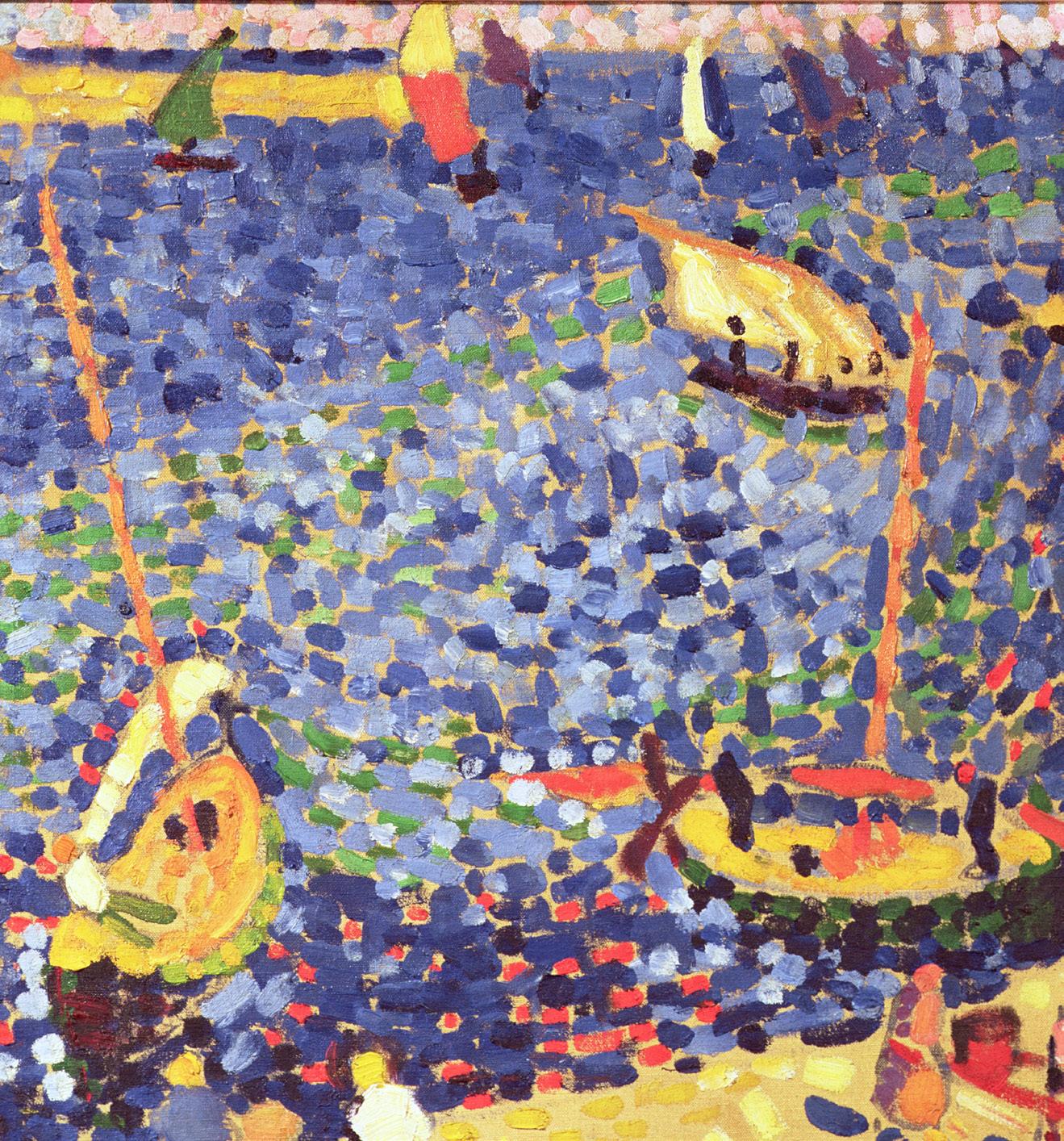
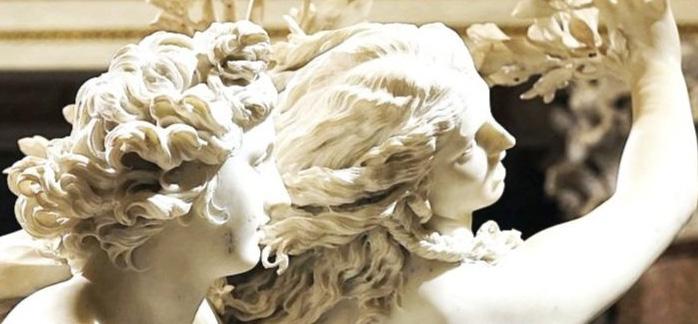
October 26, 2024 | Atonement Lutheran Church
“Love and Laurels”
Nola Richardson, soprano
Roderick Williams OBE, baritone Twelfth Night
Rachell Ellen Wong, violin and direction David Belkovski, harpsichord and direction
Carmen Lavada Johnson-Pájaro, violin
Pablo O’Connell, oboe
Georg Frideric HANDEL (1685-1759) from Partenope, HWV 27 (1730)
Overture: Largo – Allegro from Rinaldo, HWV 7 (1711)
Aria: Vieni, o cara from Radamisto, HWV 12 (1720)
Rigaudon
Georg Philipp TELEMANN (1681-1767)
Sonata à 4 in A minor, TWV 43:a5 (1730)
Grave
Allegro – Adagio
Allegro
Largo e staccato
Allegro
Georg Frideric HANDEL (1685-1759) from Partenope, HWV 27 (1730)
Aria: Qual farfalletta
- intermission -
Andrew Gonzalez, viola
Coleman Itzkoff, cello
Ben Matus, bassoon
Georg Frideric HANDEL (1685-1759) from Alcina, HWV 34 (1735)
Overture
Apollo e Dafne, HWV 122 (1709-10)
Recitativo: La terra è liberata
Aria: Pende il ben dell’universo
Recitativo: Ch’il superbetto amore
Aria: Spezza l’arco e getta l’armi
Aria: Felicissima quest’alma
Recitativo: Che voce! Che beltà!
Aria: Ardi, adore preghi in vano
Recitativo: Che crudel! Ch’importuno
Duet: Una guerra ho dentro il seno
Recitativo: Placati al fin, o cara
Aria: Come rosa in su la spina
Recitativo: Ah! Ch’un Dio non dovrebbe
Aria: Come in ciel benigna stella
Recitativo: Odi la mia ragion
Duet: Deh, lascia addolcire
Recitativo: Sempre t’adorerò
Aria: Mie piante correte
Recitativo: Che vidi, che mirai?
Aria: Cara pianta
The Friends of Chamber Music is grateful for the generous support of our Concert Underwriters, Richard and Jane Bruening
In the grassy gardens of princely Italian villas, a boisterous George Frideric Handel, then barely 20 years of age, found himself surrounded by the greatest thinkers and artists of his day. During weekend meetings suggestively called conversations, ideas would be passed around and relentlessly dissected. Love, death, loss, goodness — no concept was found to be off-limits, and the loftier the idea, the better. In this makeshift Eden, a young Handel experimented and pushed his art to the farthest reaches, where he seemed to string together musical pearls with striking rapidity. These pearls were, in the spirit of the Baroque, audacious, often misshapen, always vivid, and never without Handel’s singular attention to beauty.
The sheer brilliance of his creative outbursts during the Italian sojourn (1706-1710) resulted in immediate international acclaim and, most importantly, left him with a bottomless source of youthful musical treasures from which he could draw inspiration. The overwhelming majority of works he crafted during this time fall into the genre cantata, a highly flexible form that can be thought of as a supercharged opera in miniature. It should be mentioned that Handel was a notorious “borrower” — he lifted melodies and musical ideas from any and all composers, most often from himself, and without exception improved the source material.
From its courtly origins in Florence around 1600, to its explosive mid-century commercial success in Venice, opera grappled with the general absurdity of its fundamental premise: why should people speak in song? The quick and tidy solution to this problem was to leave the singing to immortal gods and demigods, mythical nymphs and shepherds, and to any mortals that may sing in real life (while hard at work, lamenting loss, or during divine worship). This reasoning led librettists time and time again to plumb the rich depths of Ovid’s Metamorphoses, which in its combination of pastoral settings, supernatural figures, and metamorphic transformations especially appealed to seventeenth-century sensibilities, and facilitated spectacular staging. Handel was no different, often turning to Ovid’s mythology or to sweeping Renaissance epics by Ludovico Ariosto and Torquato Tasso.
One of the most often staged and beloved stories was that of Apollo and Daphne, an ill-fated tale of hubris, desire, and unrequited love. Likely written en route from Venice to his first important position in Hanover, Handel sought to impress his new employer with his own setting of Apollo and Daphne, a cantata showcasing all of the dramatic finesse and sensitivity to the poetic word he learned during his grand tour of Italy.
Stripping the original Ovidian tale of two minor characters (Cupid and Daphne’s father, Peneus), Handel was able to focus on the tension between the two protagonists. An audacious Apollo, fresh from defeating the vile python, and the chaste nymph Daphne, who had recently sworn allegiance to Diana. From the
outset, Apollo is keen on flexing his supreme might, even insinuating that his arrow is more powerful than Cupid’s very own. The arrival of Daphne stops him dead in his tracks, as she sings an arresting, lilting ode to happiness in liberty. He accosts her with amorous intentions, invoking his divine pedigree, but she barks back with reaffirmations of her servitude to Diana. They are at a burning impasse, begging one another to cease their cruelty.
What does Apollo choose to do next? Shoot himself in the foot with one of the worst pick-up lines in the history of courtship, likening Daphne to a rose which will lose its beauty someday. His new tack went about as well as can be expected, as Daphne proclaims she would rather die virtuous than submit. Handel showcases his dramatic prowess in the next duet, more of a written out musical argument in which the two characters seem to live diametrically opposed emotional worlds — Apollo is desperately in love, reflected in his sorrowful arioso, while Daphne’s music is furious and resolute, much like the state of her heart.
The cantata’s denouement features a wild chase and Apollo’s ultimate capture of the nymph. But to his dismay, she transforms into a laurel tree in his very hands. He begins, now all alone, to grieve his loss. The story ends with Apollo watering Daphne’s roots with his tears and vowing to always honor her by wearing a laurel wreath upon his head. In addition to Handel’s youthful masterpiece, the program includes operatic excerpts from his bustling career in London, as well as a pseudo-Italian sonata by Handel’s good friend, Georg Philipp Telemann.
Program notes by David Belkovski


Described as “an absolute gift to see live” (The Nevada Sagebrush), Twelfth Night is a refreshingly new ensemble of historical performance specialists led by keyboardist David Belkovski and violinist Rachell Ellen Wong, formed with the firm belief that art is best explored as a meeting place of the past, present, and future.
Inspired by Shakespeare’s play of the same name, the ensemble strives to invoke a spirit of boundless revelry, celebration, and community in their programming. Based in New York City and founded in 2021, the two directors are regarded as key young representatives of early music: Rachell is the only baroque artist to receive an Avery Fisher Career Grant and David is the first recipient in the field of early music to receive the Levinson Arts Achievement Award. In the 2022-23 season, Twelfth Night was hosted in concert series across the country, including Arizona Early Music (Tucson), Chatham Baroque (Pittsburgh), Chamberfest Brown County (Nashville, IN), Music Before 1800 (NYC), and Apex Concert Series (Reno). This year, they were the only his-

torical performance ensemble to be featured at Chamber Music America’s national conference showcase. In addition, David and Rachell make their debut co-directing New World Symphony in Miami. Further 2023-24 concerts include works of chamber music with fortepiano in Washington state, recitals for Early Music Seattle and the Heifetz International Music Institute, and an appearance on the Chamber Music Society of Logan (Utah) series. Twelfth Night debuts at Carnegie Hall in May 2024 with their most ambitious project yet, a night of orchestral and operatic masterworks throughout the Baroque.
David and Rachell met during their time as students in the Historical Performance division of The Juilliard School. Endless hours rehearsing and performing together confirmed a special chemistry and shared vision, inspiring them to dream up an ensemble for the 21st century. Through Twelfth Night, they are eager to position historical performance as an integral part of all performance.
Twelfth Night Ensemble appears by exclusive arrangement with Suòno Artist Management

Making her mark as an “especially impressive” (The New York Times) soprano, Australian/American Nola Richardson has won First Prize in all three major American competitions focused on the music of J.S. Bach (Bethlehem Bach, 2016; Audrey Rooney Bach, 2018; Grand Rapids Symphony Linn Maxwell Keller Award, 2019). These honors have catapulted her to the forefront of Baroque ensembles and orchestras around the country, where she has been praised for her “astonishing balance and accuracy,” “crystalline diction,” and “natural-sounding ease” (Washington Post).
An Australian by birth, Nola has spent most of her life in the US. She holds a BM from Illinois Wesleyan University and dual MM degrees in Vocal Performance and Early Music from the Peabody Conservatory. She was a young artist with the Boston Early Music Festival, a vocal fellow at Tanglewood, a Marc and Eva Stern Fellow at Songfest, and most recently, a Carmel Bach Festival Virginia Best Adams Fellow in 2019. Nola attended the Institute of Sacred Music Program and in May of 2020 she was the first and only female singer to receive the prestigious DMA degree in Early Music Voice from Yale

Roderick Williams OBE is one of the UK’s most sought-after baritones and is constantly in demand on the concert platform and in recital, encompassing repertoire from the baroque to world premieres.
Opera engagements have included major roles at leading opera houses worldwide including the Royal Opera House Covent Garden, English National Opera, Dutch National Opera, Dallas Opera, the Bregenz Festival and Oper Köln. He has been involved in many world premieres including Alexander Knaifel’s Alice in Wonderland, several operas by Michel van der Aa, the title role in Robert Saxton’s The Wandering Jew, and the UK premiere of Sally Beamish’s Judas Passion with the Orchestra of the Age of the Enlightenment.
In 2016 he won the Royal Philharmonic Society’s Singer of the Year award, and in June 2017 was awarded an OBE for services to music. He also performed at the Coronation of King Charles III in 2023.

I loved the concert! An intimate journey where each note and expression creates a vivid tapestry of emotion and connection. Thank you!
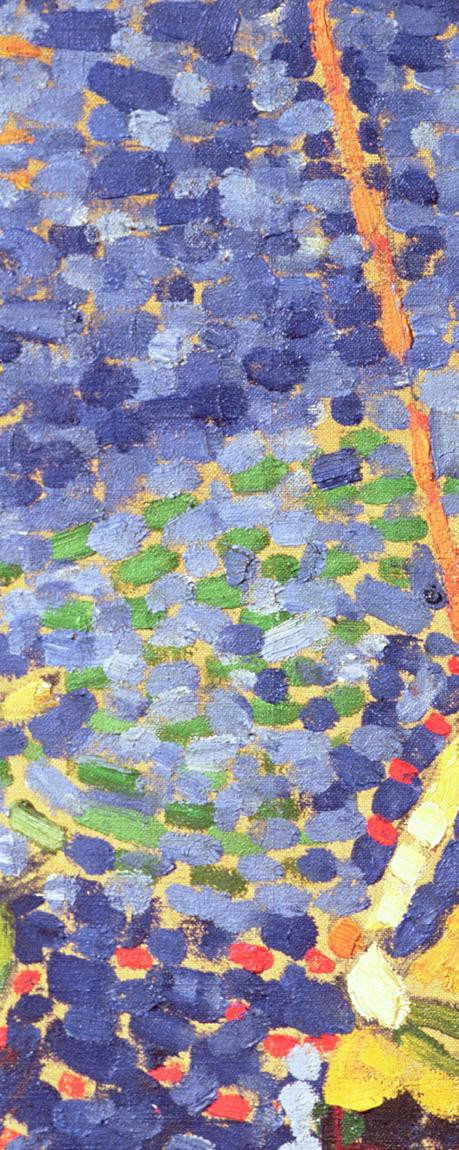

“Virtuoso Winds”
The Chamber Music Society of Lincoln Center
November 8, 2024 | Midwest Trust Center
Anne-Marie McDermott, piano
Adam Walker, flute
James Austin Smith, oboe
Ludwig van BEETHOVEN (1770-1827)
Duo for Clarinet and Bassoon No. 3 in B-flat major, WoO 27 (1790-92)
Allegro sostenuto
Aria con variazioni: Andantino con moto
Shifrin, Goldberg
Reinhold GLIÈRE (1875-1956)

Four Pieces for Horn and Piano, from 11 Pieces Op. 35 (1908)
vi. Romance
vii. Valse triste
x. Nocturne
xi. Intermezzo
Baborák, McDermott
Francis POULENC (1899-1963)
Sonata for Clarinet and Bassoon, FP 32a (1922, rev. 1945)
Allegro
Romance
Final
Shifrin, Goldberg
Bohuslav MARTINŮ (1890-1959)
Sonata for Flute and Piano (1945)
Allegro moderato
Adagio
Allegro poco moderato
Walker, McDermott
David Shifrin, clarinet
Marc Goldberg, bassoon
Radek Baborák, horn
Carl REINECKE (1824-1910)
Trio for Oboe, Horn and Piano in A minor, Op. 188 (1887)
Allegro moderato
Scherzo: Molto vivace
Adagio
Finale: Allegro ma non troppo Smith, Baborák, McDermott
Francis POULENC (1899-1963)
Sextet for Flute, Oboe, Clarinet, Bassoon, Horn and Piano, FP 100 (1932-39)
Allegro vivace
Divertissement: Andantino
Finale: Prestissimo
Walker, Smith, Shifrin, Goldberg, Baborák, McDermott - intermission -
The Friends of Chamber Music is grateful for the generous support of our Concert Supporting Sponsor, Alietia Caughron and Concert Underwriters, Cindy and Jay Longbottom
Ludwig van BEETHOVEN
Duo for Clarinet and Bassoon, WoO 27
Likely composed in 1790–92, though authorship is uncertain; see program note; 10 minutes
Beethoven’s Duos for Clarinet and Bassoon present a complex transmission history, devoid of surviving original manuscripts or sketches to indicate their provenance. We do know that, a few years after Beethoven’s death, a German publisher named Johann André released an edition of the three duos for clarinet and bassoon, drawing on earlier French editions that are now lost. Due to the absence of direct evidence linking them to Beethoven, questions about their authenticity persist. Nonetheless, these pieces are renowned for their unique instrumentation and continue to be admired and performed. Today, critical editions of these duos generally list Beethoven as their author, while also striving to reconcile available sources and admit the gaps in our knowledge.
If indeed Beethoven composed these charming works, Duo No. 3 likely dates back to his Bonn years, around 1790 to 1792, prior to his arrival in Vienna in November 1792. This period was marked by Beethoven’s early experimentation with smaller wind ensembles. The Allegro sostenuto first movement begins with the unison of the first three notes of the B-flat major scale, followed by a descending third—a motif recurring throughout the movement. Though in sonata form, it lacks the sturm und drang (storm and stress) of his later compositions. The second and final movement, a theme and variations in Classical form, bears a natural and witty Beethovenian touch, foreshadowing his use of theme and variation in his later symphonic and piano works.
Reinhold GLIÈRE
Four Pieces for Horn and Piano, Op. 35 Composed: 1908 Duration: 11 minutes
Reinhold Glière, originally spelled “Glier,” was born in 1875 in Kiev. His birth name highlights his diverse heritage: his German father, Ernst Moritz Glier, emigrated to the Russian Empire to apprentice as a wind instrument maker. Ernst married Josephine Korczak, a Pole and the daughter of his mentor, and the couple settled in what is now Ukraine. Contrary to myths suggesting Franco-Belgian origins, Glière changed the spelling of his surname as a young man while studying violin, theory, and composition at the Moscow Conservatory. This alteration was likely an effort to elevate his social standing among his peers, whose Francophilia was characteristic(of Tsarist Russia’s intellectual elites.
Glière’s Four Pieces for Horn and Piano, Op. 35, is part of a larger body of work written in 1908, comprising 11 pieces for solo instrumentalists and piano. The opus includes two pieces each for flute, clarinet, bassoon, horn, and oboe, with one piece for the cello. Notably, only the Nocturne and Intermezzo were originally written for the horn, but it has become customary for hornists to also perform the clarinet pieces Romance and Valse Triste with the two horn pieces. Renowned for their melodic acuity, the Four Pieces for Horn and Piano have historically been used as pedagogical pieces for younger students due to their moderate technical difficulty. This concert offers a rare opportunity to experience the full potential and lyrical virtuosity of these four pieces.
The Romance exudes warmth, imbued with a heartfelt and expressive quality as the horn’s singing lines soar above the piano’s supportive accompaniment. It is followed by the Valse Triste, in which bittersweet harmonies and lilting phrases create a hauntingly beautiful atmosphere. The Nocturne unfolds with serenity and contemplation, creating a tranquil backdrop. Its gentle, lyrical lines and lush harmonies evoke the image of a great, dark expanse, enveloping one into the stillness of night. The final Intermezzo carries a playful and light-hearted spirit. Its buoyant rhythms and lively melodies bring a sense of joy and carefree abandon, brought to the fore by the horn and piano’s flirtatious interplay.
Francis POULENC
Sonata for Clarinet and Bassoon
Composed: 1922, revised in 1945 Duration: 8 minutes
Francis Poulenc grew up in a well-to-do Parisian family, where his parents forbade him from pursuing music as a career. However, when he was sixteen, his parents passed away, leaving him orphaned. Poulenc found a parental figure doubling as a spiritual mentor in his piano teacher, Ricardo Viñes. After being rejected by the Paris Conservatoire and increasingly frustrated by his lack of formal training, Poulenc began studying privately with the composer and teacher Charles Koechlin, at Vines’s insistence. During this period, he composed three chamber works for winds: the Sonata for Two Clarinets (1918), the Sonata for Horn, Trumpet, and Trombone (1922), and the Sonata for Clarinet and Bassoon (1922).
Regarding his Sonata for Clarinet and Bassoon, Poulenc remarked, “I’ve just finished a new work, Sonata for Clarinet and Bassoon. [It’s] very good. . . . I’m delighted because after 18 months of uncertainty, I’m back on the right path.” This piece, written in three short movements totaling eight minutes, is rich in character and clear in form. Poulenc’s use of motivic repetition drives the piece, and the score is marked by jaunty meter changes throughout. These characteristics are no doubt influenced by Poulenc’s adherence to the stylistic principles of Les Six, a cohort of young French composers mentored by Erik Satie, which formed as a reaction against the unrestrained emotionalism and perceived formlessness of late Romanticism. Other elements of the sonata bear close resemblance to the music of Igor Stravinsky, such as the cheeky dissonances, jazz passages, and unexpected cadences of Stravinsky’s neoclassical period. While acknowledging Stravinsky’s influence, Poulenc remained true to his identity as a wind composer. He stated, “[I have] always adored wind instruments, preferring them to strings. . . Of course, L’Histoire du soldat and Stravinsky’s solo clarinet pieces stimulated [my] taste for winds, but [I] developed the taste as a child.” Poulenc’s works are also infused with a fervent Gallic spirit unique to Les Six. At the premiere of this work at the Théâtre des ChampsÉlysées on January 4, 1923, Stravinsky praised the evening’s performance, noting, “this music is very, very French.” This commentary reaffirms Poulenc’s Sonata for Clarinet and Bassoon as a showcase of his distinctive voice and mastery of wind instrumentation, and the embodiment of the vibrant, innovative early 20th-century French style.
Bohuslav MARTINŮ
Sonata for Flute and Piano
Composed: 1945 Duration: 19 minutes
Another composer profoundly influenced by Stravinsky’s neoclassical style was Bohuslav Martinů. A transplant from Bohemia to Paris in the 1920s, Martinů deliberately abandoned the Romantic style to embrace the jazz-infused French modernist aesthetic. Known for his prolific output, Martinů composed nearly 400 works spanning solo pieces, chamber works, symphonies, operas, and ballets.
Martinů’s life and career took him from Prague to Paris and New York, then eventually back to Europe. Initially moving to France for artistic reasons, he was later forced to relocate to the United States due to Nazi threats following a radio broadcast of his pro-Czechoslovakian work for chorus and orchestra. This transition was challenging for Martinů and his wife Charlotte, particularly as Bohuslav, who preferred to compose in silence, struggled with the noise of midtown Manhattan, where the pair resided. Eventually, he found solace in Jamaica Estates, Queens, where he and his wife settled; he could be found strolling through the tree-lined streets at night, composing music in his head.
From 1941 to 1953, Martinů achieved significant success in the US both as a composer and a professor at the Mannes College of Music and Princeton University. It was during this period that he wrote his flute sonata, composed during a trip to Cape Cod in 1945. The sonata was originally written for George Laurent, the principal flutist of the Boston Symphony, with whom Martinů had close ties through his friend Serge Koussevitzky, the orchestra’s music director.
The flute sonata begins with an Allegro moderato, characterized by colorful harmonies and playful rhythms. The movement’s first theme is introduced in a long piano solo before the flute enters, taking over the melody. The two instruments take turns at center stage, dialoguing in a highly rhythmic manner. The second movement is slow and solemn, featuring meter changes in patterns of 5, 6, and 7 beats. Here, the flute is the main character, interrupted by a solemn piano solo. The flute reenters, bringing the contemplative movement to a close like a crepuscular ray of sunlight. The third movement is characterized by a whirlwind of virtuosic flute gestures, evoking American themes, including the birdcall of the whippoorwill, a bird Martinů allegedly rescued while in Cape Cod. The distinguishable birdcall motif, which recurs throughout this vivacious movement, gets the last word.
Carl REINECKE
Trio in A minor, Op. 188
Composed: 1887 Duration: 26 minutes
Carl Reinecke was born in 1824 in Altona, the westernmost borough of Hamburg, which was then under the administration of the Danish monarchy. He received his early musical education from his father, a music teacher and writer, and eventually settled in Leipzig, where he studied with the great Romantic masters Mendelssohn, Schumann, and Liszt. Within three years, he was appointed Court Pianist for Christian VIII, the King of Denmark, in Copenhagen.
Like many composers of his time, Reinecke also spent some time in Paris in the late 1840s, where he participated in musical salons with other up-and-coming composers. This period was
creatively fruitful, resulting in four piano concertos and a series of cadenzas for various instruments. A few years later, at the age of 27, he relocated to Cologne after receiving his first teaching position at the Cologne Conservatory.
Reinecke, however, sought greater heights and refused to settle in Cologne. In his final career move, he returned to Leipzig, a bustling musical hub where Bach had been the cantor of St. Thomas Church, and where Reinecke’s musical mentors resided. Leipzig was also home to the newly built conservatory led by Felix Mendelssohn, where Reinecke served as professor for over 35 years, and eventually became director. At this stage of Reinecke’s life, his teaching and administrative duties took precedence over his creative work. Frustrated by this reality, he confessed that he “didn’t indulge in the false hope that his works would endure,” and in a letter wrote that he had “no brilliant or original inventions” to offer.
However, it was during this time that Reinecke, coy as he was, composed one of his most important chamber music works, the Trio for Oboe, Horn, and Piano, Op. 188. The unusual scoring of the trio suggests it was written for himself and specific players, his friends in the Gewandhaus Orchestra, for which he served as conductor for over 30 years. The musical language of Reinecke’s trio is deeply Romantic, reminiscent of Schumann or Brahms. The first movement follows a traditional Sonata-Allegro form and is characterized by its regal melodies including a march-like first theme and a contrasting cantabile (singing) melody. The second movement, in contrast, is a buoyant scherzo, featuring playful quips between oboe and horn. Next is a slow movement, which is recognizable by its breathtaking horn melody. The final movement, cyclical in nature, recalls earlier themes from the first movement. Now set in the major mode, these themes elicit a more optimistic feeling. The horn melody reappears halfway through the movement—a favorite technique among German Romantic composers. These elements coalesce to form a charming, witty, and well-crafted piece—which, despite Reinecke’s prediction, endures the test of time.
Francis POULENC
Sextet for Piano and Winds
Composed: 1932-39 Duration: 18 minutes (1932–39; 18 minutes)
Francis Poulenc was a man of contrasts, a paradox even to those who knew him best. A devout Catholic and openly gay, Poulenc defied easy categorization in his life and work. As musicologist Claude Rostand observed, “In Poulenc, there is something of the monk and something of the rascal.” Early in his career, he composed classical music infused with popular genres. Yet the peak of his career was after the premiere of his profound and solemn opera Dialogues of the Carmelites, surprising supporters and critics who never expected such seriousness from him.
The Sextet for Flute, Oboe, Clarinet, Bassoon, Horn, and Piano exemplifies this duality, oscillating between playful whimsy and profound longing. The first movement, Allegro vivace, is spirited and lively, with individual instruments taking brief, soloistic roles that appear and disappear spontaneously, akin to a game of whack-a-mole.
The second movement reflects Poulenc’s prolific output in the genre of French art song, or mélodie. Influenced by poets like
Guillaume Apollinaire and Paul Éluard, Poulenc’s lyrical lines are mimicked expressively by the winds, imbued with a typically French somberness. This lyrical quality contrasts with his broader reputation for “freshness and insouciant charm,” as noted by Jeremy Sams, who remarked that Poulenc’s early success was also partly due to the public’s shift away from late-Romantic lushness towards simpler, more charming works.

Anne-Marie McDermott is one of the most versatile and sought-after pianists of her generation. She evenly divides her performing activities between playing concertos with orchestras such as the New York Philharmonic, Dallas Symphony, Philadelphia Orchestra, and others; recitals at the major series in North America; and chamber music, touring each year with CMS. She is Artistic Director of the Bravo! Vail Festival in Colorado, which has grown into one of the most important summer festivals in North America, the Ocean Reef Chamber Music Festival in Florida, and the Chamber Music Festival at the McKnight Center in Stillwater, Oklahoma. McDermott is a recipient of the prestigious Avery Fisher Career Grant. She records for Bridge Records, and her recordings have been widely acclaimed. They include The Complete Piano Music of Gershwin for Piano and Orchestra, the complete Prokofiev Piano Sonatas, and all-Haydn, all-Scriabin, and all-Mozart discs.

Adam Walker was appointed principal flute of the London Symphony Orchestra in 2009 at age 21. In 2010 he won a Borletti-Buitoni Trust Fellowship Award. He regularly performs with major UK orchestras including the BBC Philharmonic, BBC Scottish Symphony Orchestra, London Symphony, Hallé, Bournemouth Symphony, and BBC National Orchestra of Wales. Elsewhere he has performed with the Baltimore Symphony Orchestra, Seattle Symphony, Grant Park Festival, Orquesta Sinfónica Nacional de Mexico, Seoul Philharmonic, Auckland Philharmonia, Malaysian Philharmonic, Malmö Symphony Orchestra, Vienna Chamber Orchestra, Solistes Européens, Luxembourg, and RTE National Symphony Orchestra. He joined CMS’s Bowers Program in 2018. Walker studied at Chetham’s School of Music and the Royal Academy of Music. He was appointed professor at the Royal College of Music in 2017.

Oboist, chamber musician, and on-stage host James Austin Smith appears regularly at leading national and international chamber music festivals, as Co-Principal Oboe of the conductor-less Orpheus Chamber Orchestra, and as an artist of the International Contemporary Ensemble. As Artistic and Executive Director of Tertulia Chamber Music he curates intimate evenings of food, drink, and music in New York, San Francisco, and Serenbe, Georgia. He is a professor of oboe and chamber music at Stony Brook University and the Manhattan School of Music, and a regular guest at London’s Guildhall School of Music and Drama. A Fulbright scholar and alum of CMS’s Bowers Program, he holds degrees in music and political science from the Yale School of Music and Northwestern University.
The third movement, a moto perpetuo, features an incessant, mechanical, chugging rhythm punctuated by military horn calls. While it’s unclear if these elements were influenced by Poulenc’s conscription into the French army during and after World War I, the movement’s macabre undertone is unmistakable, culminating in a resounding unison A that brings the sextet to a powerful close. Program notes by Noémie Chemali
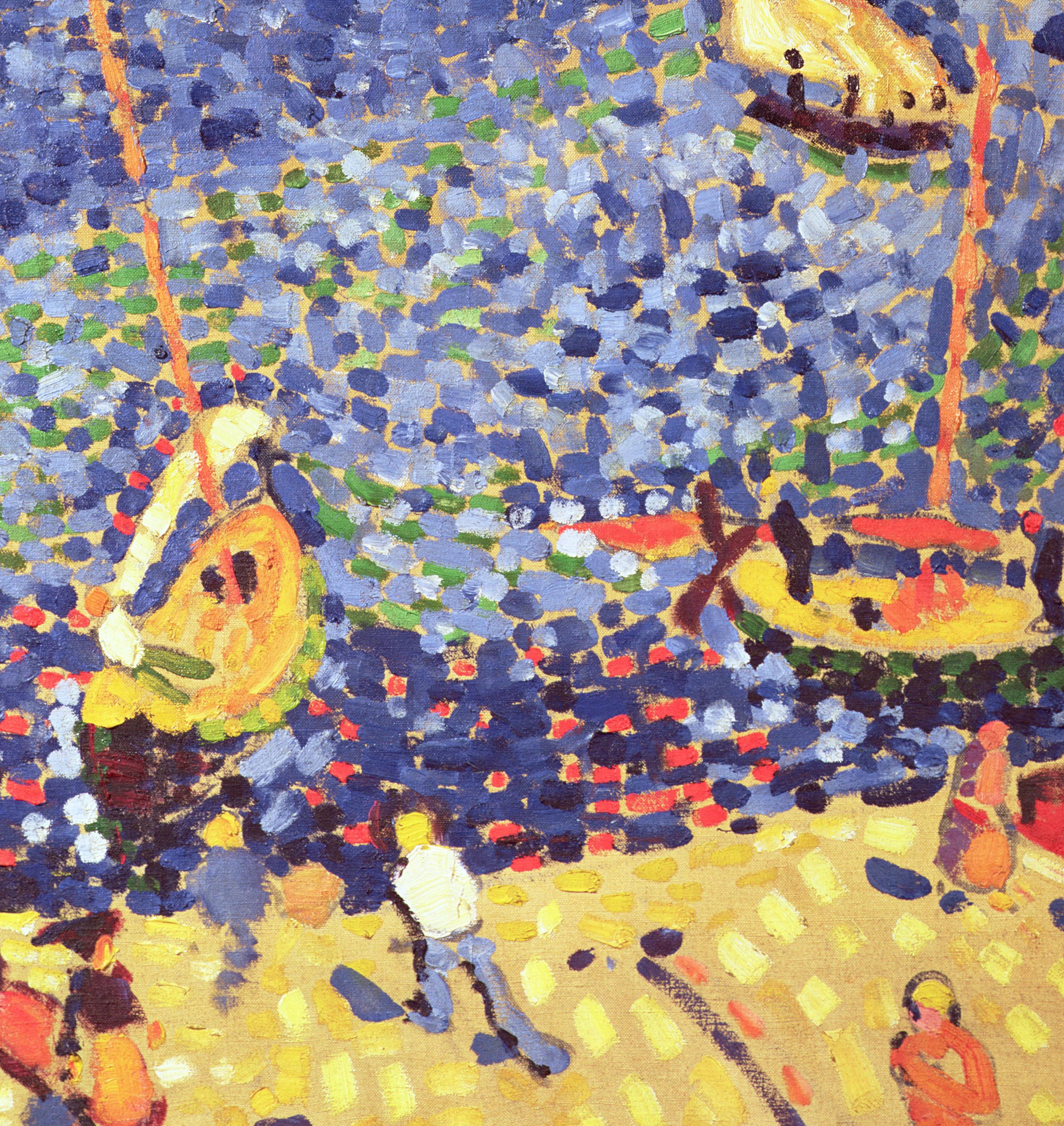

A Yale University faculty member since 1987, clarinetist David Shifrin is artistic director of Yale’s Chamber Music Society and the Yale in New York concert series. He has performed with CMS since 1982 and served as its artistic director from 1992 to 2004, inaugurating CMS’s Bowers Program and the annual Brandenburg Concerto concerts. He was the artistic director of Chamber Music Northwest from 1981 to 2020. Winner of the Avery Fisher Prize, he has held principal clarinet positions in numerous orchestras including the Cleveland Orchestra and the American Symphony under Leopold Stokowski. Shifrin performs on clarinets made by Morrie Backun in Vancouver, Canada, and Légère synthetic reeds.

A member of the New York Woodwind Quintet and St. Luke’s Chamber Ensemble, Marc Goldberg is principal bassoonist of Lincoln Center’s Mostly Mozart Festival Orchestra, American Ballet Theater, NYC Opera, Orchestra of St. Luke’s, and a member of the American Symphony Orchestra. Previously the associate principal bassoonist of the New York Philharmonic, he has also been a frequent guest of the Metropolitan Opera, Boston Symphony Orchestra, and Orpheus Chamber Orchestra, touring with these ensembles across four continents and joining them on numerous recordings. Goldberg is on the faculty of the Juilliard School Pre-College Division, Mannes College, New England Conservatory, the Hartt School, and the Bard College Conservatory of Music.

Horn player and conductor Radek Baborák was born in Pardubice in 1976 into a musical family. At the age of eight he started learning the horn with Prof. Karel Krenek. Under his leadership he became the overall winner of the Prague Radio Competition Concertino Praga, received third prize at the Prague Spring Competition and first prize in the Competition for Interpreters of Contemporary Music, and became laureate of the Grand Prix UNESCO. He is a regular guest at prestigious festivals around the world. He has founded and led several ensembles: the Baborák Ensemble, principally consisting of French horn and string quartet; the Czech Horn Chorus, which continues the 300 year-old tradition of horn playing in the Czech Lands; and the string ensemble Prague Chamber Soloists, whose founding in 1960 is linked with Václav Neumann. He is a member of the Afflatus Quintet, which received first prize at the ARD competition in Munich in 1997. He is a member of Berlin-Munich-Vienna Oktett and collaborates with the Berlin Baroque Soloists.
The Chamber Music Society of Lincoln Center appears by exclusive arrangement with David Rowe Artists
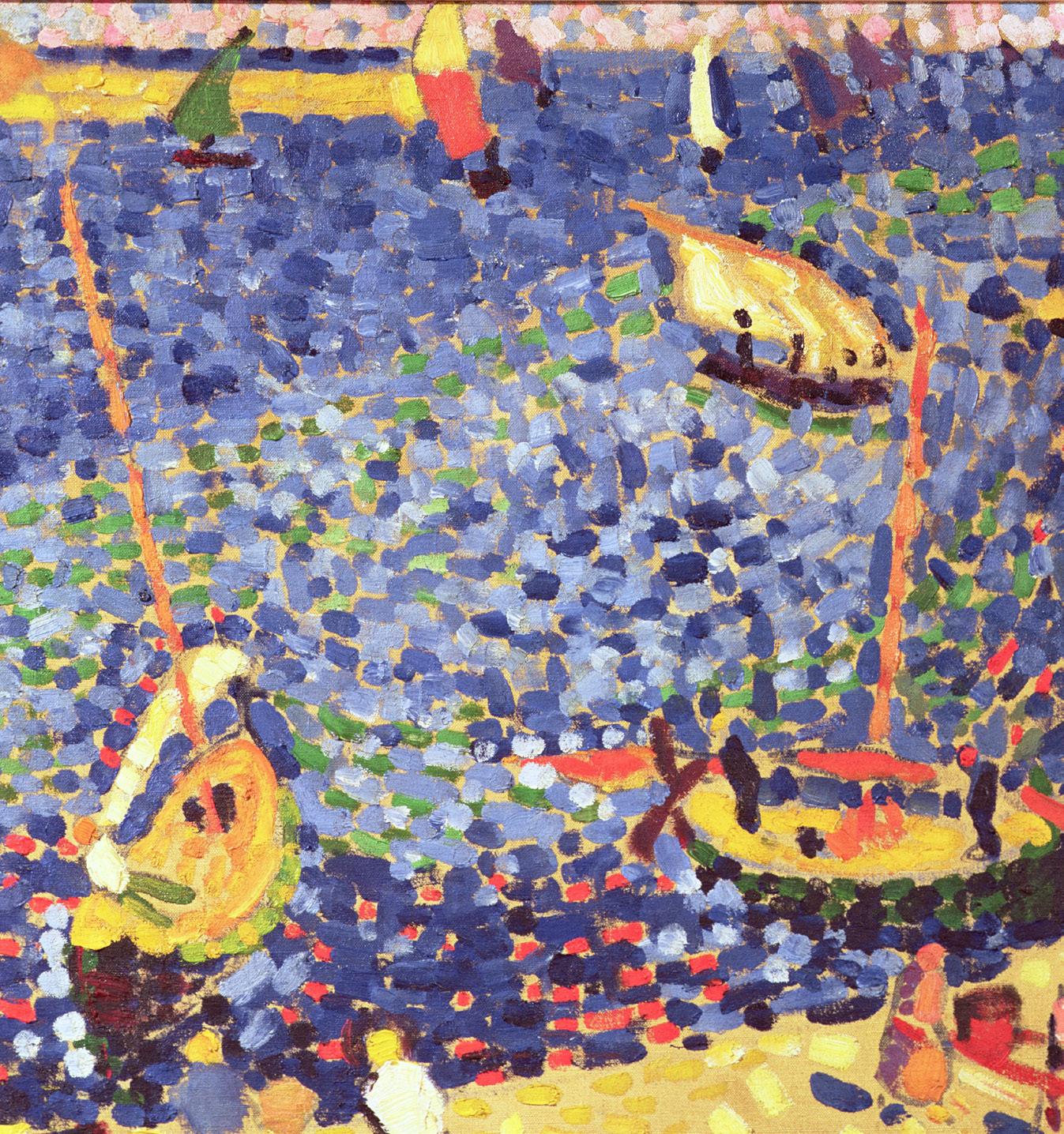
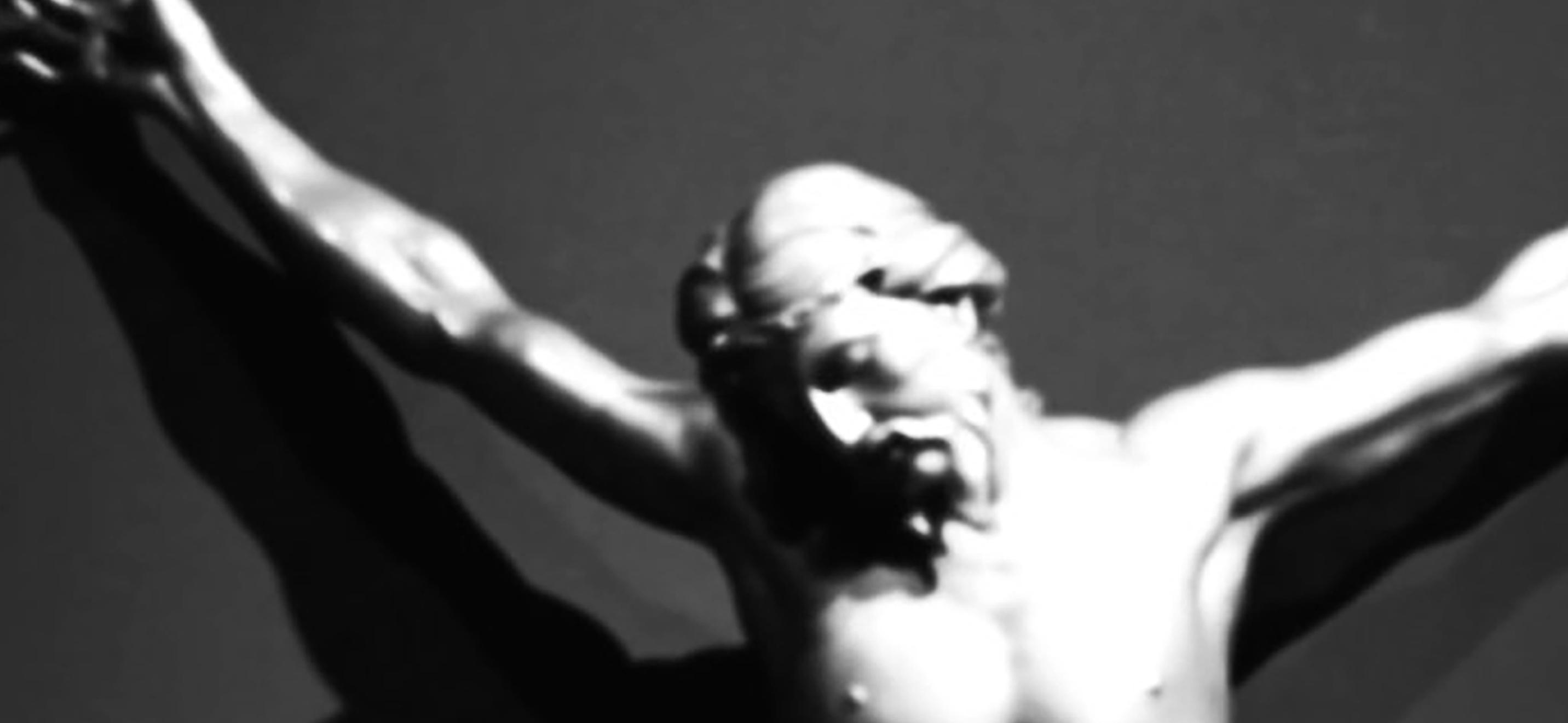
November 16, 2024 | Atonement Lutheran Church
John Butt, director & keyboard
Evangelist & Tenor soloist – Nicholas Mulroy
Christus & Bass soloist – Matthew Brook
Soprano soloist – Nardus Williams
Alto soloist – Jess Dandy
Soprano ripienist – Rachel Ambrose Evans
Alto ripienist – Lucy Goddard
Tenor ripienist – Thomas Kelly
Bass ripienist – Robert Davies
Matthew Truscott, Hilary Michael, violin I
Kinga Ujszászi, Rebecca Livermore, violin II
John Crockatt, viola
Jonathan Manson, cello & viola da gamba
Johann Sebastian BACH (1675-1750)
St John Passion, BWV 245 (1724)
PART ONE:
Alexandra Bellamy, Frances Norbury, oboe Katy Bircher, Graham O’Sullivan, flute
Sally Jackson, bassoon
James Johnstone, organ
Carina Cosgrave, basso
1. CHORUS: Herr, unser Herrscher, dessen Ruhm in allen Landen herrlich ist
2. EVANGELISTA, JESUS: Jesus ging mit seinen Jüngern über den Bach Kidron
3. CHORUS: Jesum von Nazareth
4. EVANGELISTA, JESUS: Jesus spricht zu ihnen:
5. CHORUS: Jesum von Nazareth
6. EVANGELISTA, JESUS: Jesus antwortete:
7. CHORAL: O große Lieb’, o Lieb’ ohn’ alle Maße
8. EVANGELISTA, JESUS: Auf daß das Wort erfüllet würde
9. CHORAL: Dein Will’ gescheh’, Herr Gott, zugleich
10. EVANGELISTA: Die Schar aber und der Oberhauptmann
11. ARIA (Alto): Von den Stricken meiner Sünden
12. EVANGELISTA: Simon Petrus aber folgete Jesu nach
13. ARIA (Soprano): Ich folge dir gleichfalls mit freudigen Schritten
14. EVANGELISTA, ANCILLA, PETRUS, JESUS, SERVUS: Derselbige Jünger war dem Hohenpriester bekannt
15. CHORAL: Wer hat dich so geschlagen
16. EVANGELISTA: Und Hannas sandte ihn gebunden zu dem Hohenpriester Kaipha
17. CHORUS: Bist du nicht seiner Jünger einer?
18. EVANGELISTA, PETRUS, SERVUS: Er leugnete aber und sprach:
19. ARIA (Tenor): Ach, mein Sinn
20. CHORAL: Petrus, der nicht denkt zurück
PART TWO:
21. CHORAL: Christus, der uns selig macht
22. EVANGELISTA, PILATUS: Da führeten sie Jesum von Kaiphas vor das Richthaus
23. CHORUS: Wäre dieser nicht ein Übeltäter, wir hätten dir ihn nicht überantwortet
24. EVANGELISTA, PILATUS: Da sprach Pilatus zu ihnen:
25. CHORUS: Wir dürfen niemand töten
26. EVANGELISTA, PILATUS, JESUS: Auf daß erfüllet würde das Wort Jesu
27. CHORAL: Ach großer König, groß zu allen Zeiten
28. EVANGELISTA, PILATUS, JESUS: Da sprach Pilatus zu ihm:
29. CHORUS: Nicht diesen, sondern Barrabam!
30. EVANGELISTA: Barrabas aber war ein Mörder
31. ARIOSO (Bass): Betrachte, meine Seel’, mit ängstlichem Vergnügen
32. ARIA (Tenor): Erwäge, wie sein blutgefärbter Rücken
33. EVANGELISTA: Und die Kriegsknechte flochten eine Krone von Dornen
34. CHORUS: Sei gegrüßet, lieber Judenkönig!
35. EVANGELISTA, PILATUS: Und gaben ihm Backenstreiche
36. CHORUS: Kreuzige, kreuzige!
37. EVANGELISTA, PILATUS: Pilatus sprach zu ihnen:
38. CHORUS: Wir haben ein Gesetz, und nach dem Gesetz soll er sterben
39. EVANGELISTA, PILATUS, JESUS: Da Pilatus das Wort hörete, fürchtet’ er sich noch mehr
40. CHORAL: Durch dein Gefängnis, Gottes Sohn, muß uns die Freiheit kommen
41. EVANGELISTA: Die Juden aber schrieen
42. CHORUS: Lässest du diesen los, so bist du des Kaisers Freund nicht
43. EVANGELISTA, PILATUS: Da Pilatus das Wort hörete, führete er Jesum heraus
44. CHORUS: Weg, weg mit dem, kreuzige ihn!
45. EVANGELISTA, PILATUS: Spricht Pilatus zu ihnen:
46. CHORUS: Wir haben keinen König denn den Kaiser
47. EVANGELISTA: Da überantwortete er ihn, dass er gekreuziget würde.
48. ARIA (Bass, mit Chor): Eilt, ihr angefochtnen Seelen
49. EVANGELISTA: Allda kreuzigten sie ihn
50. CHORUS: Schreibe nicht: der Juden König
51. EVANGELISTA, PILATUS: Pilatus antwortet:
52. CHORAL: In meines Herzens Grunde
53. EVANGELISTA: Die Kriegsknechte aber, da sie Jesum gekreuziget hatten, nahmen seine Kleider
54. CHORUS: Lasset uns den nicht zerteilen, sondern darum losen, wes er sein soll
55. EVANGELISTA, JESUS: Auf daß erfüllet würde die Schrift
56. CHORAL: Er nahm alles wohl in acht
57. EVANGELISTA, JESUS: Und von Stund’ an nahm sie der Jünger zu sich
58. ARIA (Alto): Es ist vollbracht!
59. EVANGELISTA: Und neiget’ das Haupt und verschied
60. ARIA (Bass, mit Chorale): Mein teurer Heiland, laß dich fragen
61. EVANGELISTA: Und siehe da, der Vorhang im Tempel zerriß in zwei Stück
62. ARIOSO (Tenor): Mein Herz, in dem die ganze Welt bei Jesu Leiden gleichfalls leidet 63. ARIA (Soprano): Zerfließe, mein Herze, in Fluten der Zähren
64. EVANGELISTA: Die Juden aber, dieweil es der Rüsttag war
65. CHORAL: O hilf, Christe, Gottes Sohn
66. EVANGELISTA: Darnach bat Pilatum Joseph von Arimathia
67. CHORUS: Ruht wohl, ihr heiligen Gebeine
68. CHORAL: Ach Herr, lass dein’ lieb’ Engelein
The Friends of Chamber Music is grateful for the generous support of our Concert Supporting Sponsors, Al Mauro and Molly Dwyer and Concert Underwriter, Stanley H. Durwood Foundation
In its 300th anniversary year, we reproduce an abridged version of John Butt’s liner note from Dunedin Consort’s critically acclaimed recording from 2013:
Bach first performed his John Passion on Good Friday 1724, during his first year as Cantor of the Thomasschule in Leipzig. Not only would this have been a new musical experience for the congregation, but the very genre of the Oratorio Passion (in which the standard Passion narrative was embellished with reflective arias, choruses and chorales) had only been introduced in the two principal churches two years previously. The forward-looking Neue Kirche had made a similar innovation some five years before this, so it is clear that the tradition must have been embraced with some enthusiasm, perhaps inspired by the collapse of the Leipzig opera shortly before Bach’s arrival.
But if the Oratorio Passion had many characteristics in common with opera, its differences are very striking: first of all, it was designed to fit into the Good Friday Vesper liturgy, for which the focal point was the sermon delivered between the two halves of the musical setting. The narrative was taken directly from the chosen Gospel, and is therefore largely in the third person. Only the utterances of specific personages feature direct speech. Jesus’s part was naturally delineated by a specific singer, but he, like the narrating Evangelist, also seems to have sung all the other solo and choral material within the same range. Moreover, the arias do not relate directly to characters in the story (as they would invariably do in opera) but are subjective meditations effectively in the present of the performance, and addressed directly to the congregation.
Likewise, the chorales inserted within the musical setting of the Passion seem to function as a concerted response to particular aspects of the story, as if sung by the congregation as a whole. Thus, Bach’s Oratorio Passions doubled all the essential elements of the service itself: the reading from Scripture; the communal response in the chorales; the more subjective and meditative element of prayer in the arias. The chorales, arias and meditative choruses also drew theological or spiritual points out of the story and thus doubled the role of the sermon. In all then, the dynamic of the Passion was more complex and nuanced than that of opera. If it forsook the visual element, it seems to have been designed to involve the listener much more intensely, both as part of a congregation and individually.
Many writers have sought elaborate symbolic structures within Bach’s John Passion. Certainly such orders are not atypical of the intellectual and religious climate of the time. What does come across
in performance is the relentlessness of the events, everything taking place almost with a clockwork precision, in direct and necessary fulfillment of a preordained – indeed prophesized – order. Both the intense musical coloring of the recitatives (Peter’s lament and the scourging of Christ are far more vivid than their counterparts in the Matthew Passion) and the incisive figuration of the choruses (almost a latter-day adaptation of Monteverdi’s ‘warlike’ style) recall the idioms of the late seventeenth century, when Lutheran music tended to wring every nuance it could from the grain of the text.
Only the arias, together with the opening and closing choruses, display the more luscious, affective style of Bach’s mature writing. These show an astonishing range of style and mood: the opening chorus ‘Herr, unser Herrscher’ is arguably the most turbulent piece he wrote, in which the triumphal text is entirely transformed by the grinding dissonance of the music; if Jesus is indeed to be shown as the true Son of God, the means by which this is achieved are truly agonizing. The first two arias both demonstrate the voice as almost entirely bound into the world of the music, the first (‘Von den Strikken meiner Sünden’) vividly alluding to the bondage of sin and the second (‘Ich folge dir gleichfalls’) to the notion of following Jesus directly, in musical imitation of Simon Peter and the beloved disciple.
The arias provide a range of individual responses, some modeling the likely emotions of the listener, others exhorting the listener towards a particular resolution or action. The chorales perform a similar role for the listeners as a group, the body constituting the church. The use of several verses from some of the chorales binds the overall experience together in much the same way as the repetitions of the music within the choruses. Like the arias, the chorale verses are chosen to fit the specific point in the narrative. The first is taken from ‘Herzliebster Jesu’, a text emphasizing Jesus’s love at the point when he tells the arresting party to leave the disciples alone. The same chorale is used later at the point when Jesus’s kingship is being questioned by Pilate; here the opening of the chorale verse fortuitously concerns Jesus’s kingship, great throughout all ages.
The interlocking nature of the musical components and the juxtaposition of several textural layers mean that Bach’s John Passion is potentially one of the most intense religious works he wrote, interpreting itself almost before it has presented the prescribed text. The range of interpretation is potentially infinite, which may well account for the way the work still brings rich meanings and resonances even to those unsympathetic to its religious implications.

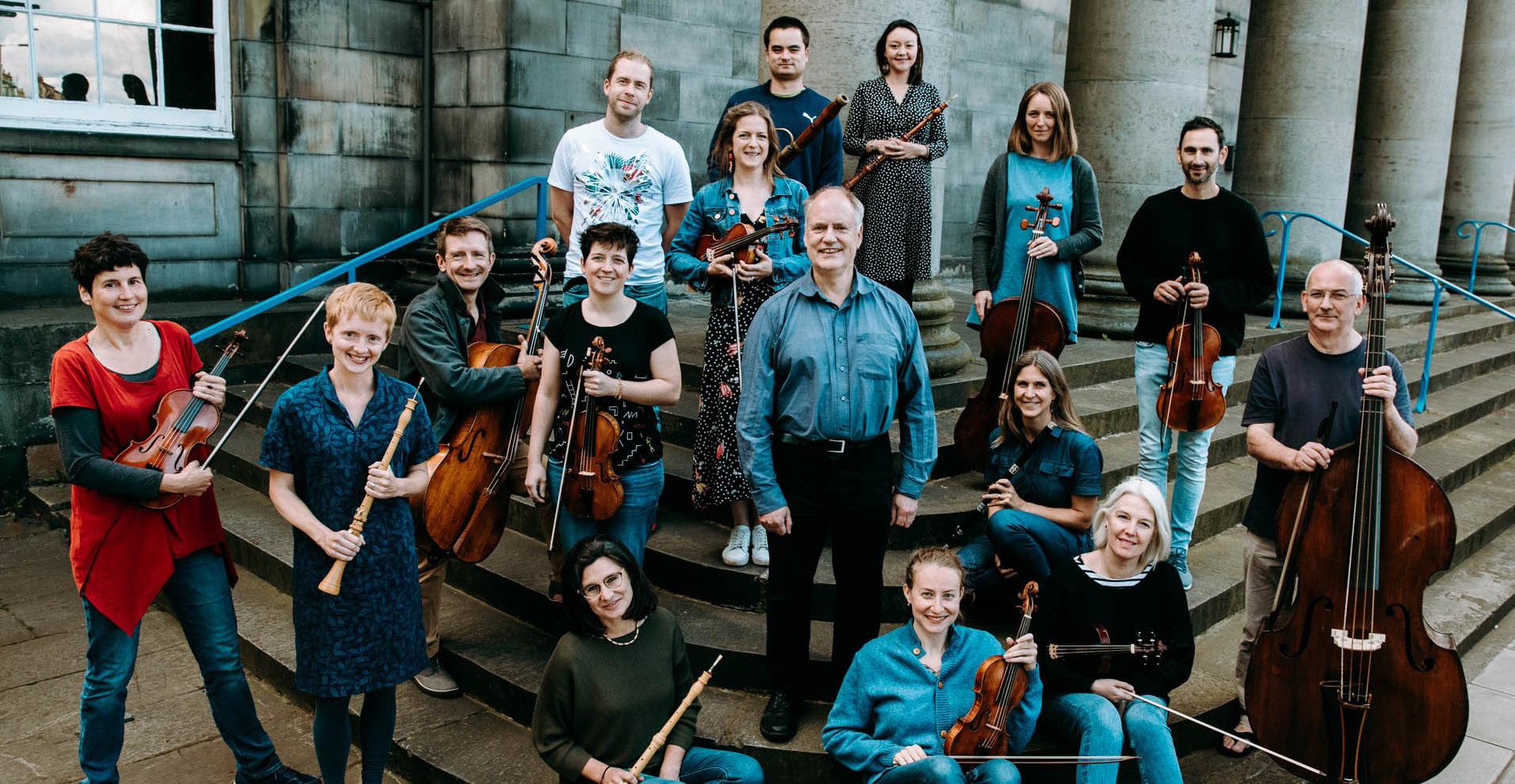
Dunedin Consort is one of the world’s leading Baroque ensembles, recognised for its vivid and insightful performances and recordings. Formed in 1995 and named after Din Eidyn, the ancient Celtic name for Edinburgh Castle, Dunedin Consort’s ambition is to allow listeners to hear early music afresh, and to couple an inquisitive approach to historical performance with a commitment to commissioning and performing new music. Under the direction of John Butt, the ensemble has earned two coveted Gramophone Awards – for the 2007 recording of Handel’s Messiah and the 2014 recording of Mozart’s Requiem, a BBC Music Magazine Award, and a Grammy nomination. In 2021 it was the recipient of the Royal Philharmonic Society Ensemble Award.
Dunedin Consort performs regularly at major festivals and venues across the UK, including the BBC Proms, Edinburgh International Festival and Lammermuir Festival, with whom it enjoys close associations. In 2017, Dunedin Consort announced its first residency at London’s Wigmore Hall, which continues to this day and complements its regular series of events at home in Scotland, as well as throughout Europe and beyond. The group’s growing discography on Linn Records includes Handel’s Acis and Galatea and Bach’s Brandenburg Concertos, both nominated for Gramophone Awards. Other
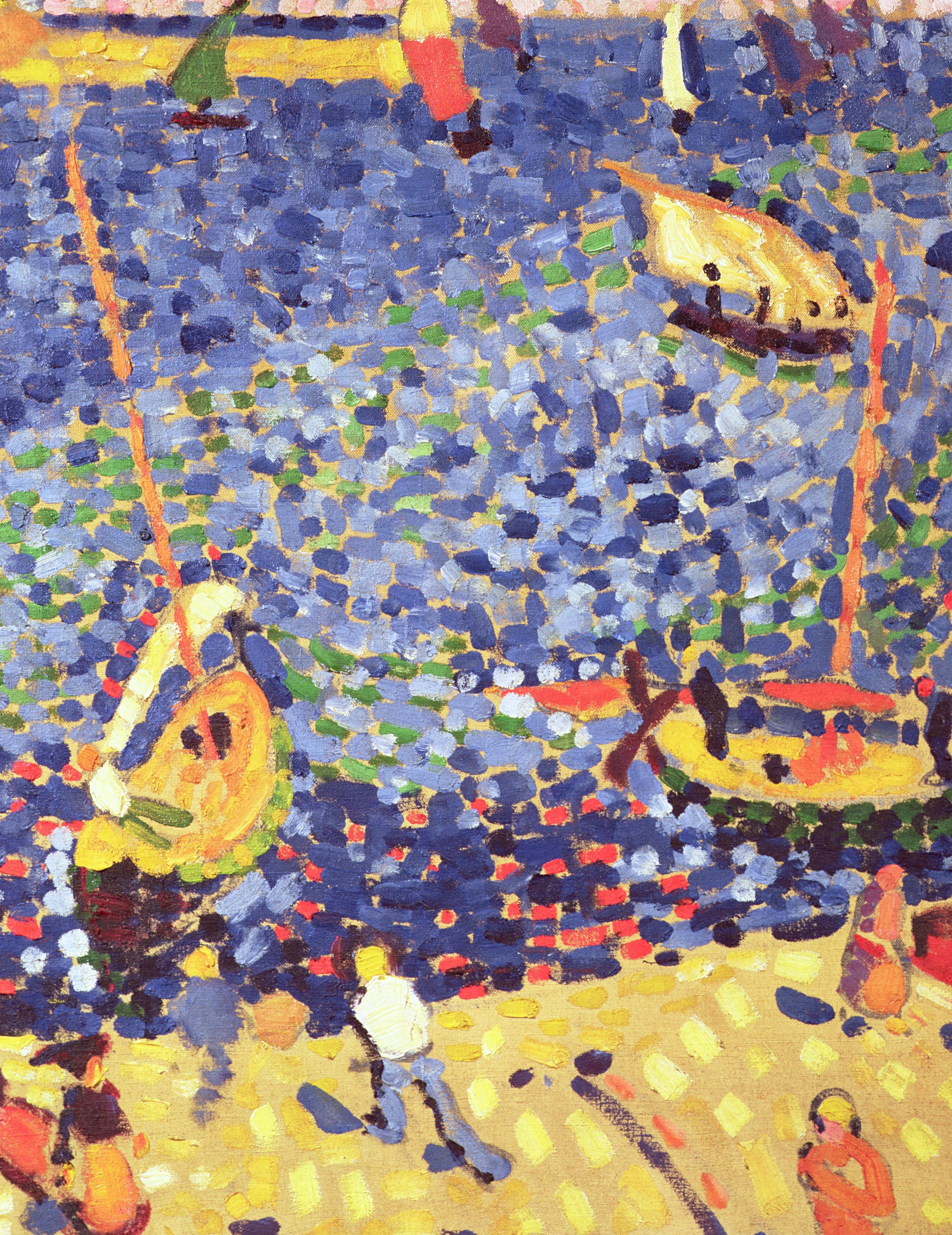
Bach recordings include Mass in B Minor, Violin Concertos, Magnificat, Christmas Oratorio, Matthew Passion and John Passion, which was nominated for a Recording of the Year award in both Gramophone and BBC Music Magazine, and Orchestral Suites released in October 2022. A recording of Handel’s Samson, in its first version of 1743, was released in October 2019, receiving Editor’s Choice accolades across the board.
Alongside its performance and recording work, Dunedin Consort is committed to a wide-ranging education programme both in schools and in the wider community. In inspiring and encouraging musical participation, developing vocal skills and fostering a love of classical music, historical performance and new music, Dunedin Consort aims to develop and nurture its potential audience and to encourage the performers of the future.
Dunedin Consort is an enthusiastic champion and commissioner of contemporary music, and in recent years has premiered a new set of orchestral dances at the BBC Proms, a new opera by Errollyn Wallen at the Barbican Centre, and new choral music for its a cappella consort. In 2023 it will premiere a new guitar concerto by Cassandra Miller for Sean Shibe, the first instalment of a 3-year co-commissioning series which will see further new music by David Fennessy and Tansy Davies.
Dunedin Consort appears by exclusive arrangement with Arts Management Group


December 6, 2024 | 1900 Building

Adrian Steele, violin
Phoenix Avalon, violin
Devin Moore, viola
Joshua McClendon, cello
Erwin SCHULHOFF (1894-1942)
Five Pieces for String Quartet (1923)
Alla Valse viennese (allegro)
Alla Serenata (allegro con moto)
Alla Czeca (molto allegro)
Alla Tango milonga (andante)
Alla Tarantella (prestissimo con fuoco)
Henri DUTILLEUX (1916-2013)
Ainsi la nuit for String Quartet (1973-76)
Nocturne I
Miroir d’espace
Litanies I
Litanies II
Nocturne II
Constellations
Temps suspendu
Billy CHILDS (b.1957)
String Quartet No. 3 “Unrequited” (2015)
Wolfgang Amadeus MOZART (1756-1791)
String Quartet in C major, K. 465 “Dissonance” (1785)
Adagio – Allegro Andante cantabile Minuetto Allegro - intermission -
The Friends of Chamber Music is grateful for the generous support of our Concert Underwriters, J. Scott Francis, the Francis Family Foundation and Jennifer and Bud Bacon
Erwin SCHULHOFF
Five Pieces for String Quartet
Composed: 1923 Duration: 14 minutes
Early in his career, composer and pianist Erwin Schulhoff was encouraged musically by Antonín Dvořák. After studies at the Prague Conservatory and in Vienna, Leipzig and Cologne – where he quickly absorbed most of the important musical trends of his day – Schulhoff served in the Austrian Army in World War I, ending the war in an Italian prisoner-of-war camp. After the war and back in Prague, he joined the faculty of the Prague Conservatory. He performed both classical music and jazz as a pianist, and composed prolifically. He even made some recordings. But by the early 1930s, his Jewish descent led to his music being banned by the Nazis, and his Communist sympathies attracted animosity in Czechoslovakia. For a time he worked as a pianist, composer, and arranger under a pseudonym. In June 1941 he was deported to the Wülzburg concentration camp, where he died of tuberculosis. In Schulhoff’s music – which includes eight symphonies, an opera, and much chamber and piano music – one hears a wide variety of influences, from late Romanticism, jazz, and Dada to Neoclassicism, Expressionism, and avant-garde techniques.
One can hear these diverse influences in the Five Pieces for String Quartet, which were well-received and earned Schulhoff an invitation to the then famous IGNM (Internationale Gesellschaft für Neue Musik) Festival in Salzburg, where he encountered even more new music and made important contacts in the musical and publishing worlds. Each of the Five Pieces reflects a different musical style. The set opens with a faintly ironic Viennese Waltz, with some surprising dissonances, urgent interludes, and rhythmic playfulness. The following Serenata is equally ironic, a rather creepily nocturnal piece in a quintuple meter. Then comes a short, but wild and propulsive, Czech Dance. The fourth movement Tango is languid and insouciant, but also rather stern and crepuscular in character, not perhaps a tango one would actually wish to dance to. The set concludes with a rousing, swirling, breathless Tarantella
Henri DUTILLEUX
Ainsi la nuit
Composed: 1973-76 Duration: 18 minutes
Henri Dutilleux lived a very long life, from 1916 to 2013. He was born into a creative family: his great grandfather was a painter, his grandfather a composer, and many other relatives were musicians. He attended the Paris Conservatoire, where he won a joint first prize in counterpoint along with the famous French cellist Paul Tortelier. Dutilleux later won the prestigious Prix de Rome, which allowed him an extended stay in Italy. But that was cut short when World War II erupted. After serving for a time in the late 1930s as a medical orderly, he eventually returned to Paris, where he worked as a pianist, conductor, arrang-
er, and music teacher. In 1943 he took the post of Head of Music Production for Radio France, a position he held for nearly twenty years. During the 1960s, he taught composition at the École Normale de Musique de Paris, and in 1970 he joined the staff of the Conservatoire National Supérieur de Musique.
Dutilleux was very self-critical and quite a perfectionist. He rejected almost all of the music he had written before his Piano Sonata of 1946-48, and only a couple of dozen works are in his official catalog. But those works were composed for some of the most famous musicians of the twentieth century, among them Charles Munch, George Szell, Mstislav Rostropovich, Isaac Stern, Anne-Sophie Mutter, Simon Rattle, and Renée Fleming.
His string quartet Ainsi la nuit (Thus the Night) has been called “one of the treasures of the 20th century quartet repertoire.” Dedicated “to the memory of Ernest Sussman and in homage to Olga Koussevitzky,” the work was commissioned by the Koussevitzky Foundation for the Juilliard String Quartet, and premiered by the Parrenin Quartet on January 6, 1977. Before starting on his quartet, Dutilleux made a close study of the string quartets of Ludwig van Beethoven and Béla Bartók. He also said that Anton Webern’s Six Bagatelles were a big influence on his work, and one might hear hints of the music of fellow French composers Claude Debussy and Maurice Ravel. Built entire on a single hexachord (C# – G# – F – G – C – D), the String Quartet is based on a group of studies that focus on different aspects of sounds that could be produced by a string quartet, including pizzicati, harmonics, and contrasts of dynamics, register, and other qualities.
Called by one commentator “a meditation on the meaning of night” (one might compare this meditation to another reflection on nighttime themes, Maurice Ravel’s Gaspard de la nuit, heard in the last concert of this season), Dutilleux’s quartet is in seven movements, played without a break, with very brief transitional segments that Dutilleux called “parentheses” between the movements. A technique that he employed often in his music, which also plays a large role in these “parentheses,” is the idea of progressive growth, in which short musical motifs both recall music that was heard earlier, and anticipates music that will be more fully developed in later movements. As Dutilleux himself put it, “There’s a tendency – it’s almost entirely intuitive – not to present the theme in its definitive state at the beginning. There are small cells which develop bit by bit. This may perhaps show the influence of literature, of Proust and his notions about memory.”
After a ghostly introduction – reminiscent of the “night music” found in works of Bartók like his String Quartet No. 4 – in Nocturne I, harmonics heard in the cello are echoed in the second violin. The music has moments of great intensity, as well as more languorous moments. Brief melodic phrases occasionally come forward and repeat before fading away. Pizzicati dominate the very short
Parenthèse 1. High harmonics float over fluttering textures and pizzicati in the second movement, Miroir d’espace. Another Parenthèse leads into the intense third movement, Litanies. Parenthèse 3 features tentative bowed notes and pizzicati. In Litanies II, the music from the upper strings has a haunting, nostalgically Romantic sound which is soon pulled in more dissonant directions. Barely twenty seconds long, the aggressive Parenthèse 4 introduces the fifth movement, Constellations, with its disconnected, fragmentary gestures. The sixth movement, Nocturne 2, returns to the “night music” sounds of the opening. The title of the final movement, Temps suspendu, is well-chosen, with its sustained notes and floating pizzicati
Billy CHILDS
String Quartet No. 3 “Unrequited”
Composed: 2015 Duration: 12 minutes
Born in 1957, Billy Childs is a composer, pianist, arranger, and conductor who is as well-known in the jazz world as he is the classical. After making his first concert appearance as a pianist at age six, he studied at the University of Southern California, earning a degree in composition. As a teenager, Childs was already performing professionally, and from ages 21 to 27 was the pianist in the group of famous jazz trumpeter Freddie Hubbard. He released several albums on the Windham Hill Jazz, Stretch/GRP Records, and Shanachie labels. Childs has worked with artists like Yo-Yo Ma, Sting, Chris Botti, David Foster, and Gladys Knight, and was the arranger and conductor for the Grammy Award-winning album The Calling by singer Dianne Reeves. He has won five Grammy Awards to date, most recently the 2024 Grammy for Best Jazz Instrumental Album for his album The Winds of Change. Childs has been the recipient of a Chamber Music America Composer’s Grant and a Guggenheim Fellowship, and in 2016 was appointed President of Chamber Music America.
In 2016, the Lyris Quartet released its first album, Intimate Letters, on the Ars Produktion label. The album featured one of the quartet’s central works, the String Quartet No. 2, Intimate Letters, by Leoš Janáček, along with several new pieces the Quartet commissioned inspired by Janáček. One was the present String Quartet No. 3 by Billy Childs. He explains:
“When the Lyris Quartet approached me in 2015 to compose a sort of commentary on the story of Intimate Letters: String Quartet No. 2, by Leoš Janáček, I thought that it was a remarkable idea. The first thing – the only thing, really – that popped into my mind was the tragedy of unrequited love (hence the name, Unrequited). When I first heard Janáček’s Intimate Letters performed live, the emotion of the piece jumped out at me: the wild shifts of tempo, the beautiful and plaintive melodies, the stark dynamic contrasts. I wanted to illustrate my perspective on this strange relationship between Janáček and Kamila Stösslová, by telling the story of a man who goes through different phases of emotion, before finally coming to
terms with the fact that his love for her is one-sided — it will never be returned the way he would like. I sought to compose Unrequited so that it moves, like the five stages of grief, through a variety of emotions — from romantic, pure love, through paranoid, obsessive, neurotic possessiveness, arriving finally at despondent acceptance.”
Wolfgang Amadeus MOZART
String Quartet No. 19 in C major, K. 465 “Dissonance” Composed: 1785 Duration: 30 minutes
In the early 1780s, a friendship developed between Mozart and Franz Josef Haydn. They met often in Vienna, and occasionally performed music together at Mozart’s apartment. Mozart saw the older composer as a mentor, and Haydn was unstinting in his praise of the younger man, calling him “the greatest composer known to me either in person or by name.” In 1781 – the year Mozart moved to Vienna – Haydn, who is generally regarded as the father of the string quartet form, published his six Op. 33 quartets. Mozart studied them with great care, and soon set to work on his own set of six quartets, including the one now nicknamed “Dissonance.” Composed over the years 1782 to 1785, the six quartets were dedicated to Haydn, whom Mozart addressed on the published dedication page: “A father who had resolved to send his children out into the great world took it to be his duty to confide them to the protection and guidance of a very celebrated Man, especially when the latter by good fortune was at the same time his best Friend. Here they are then, O great Man and dearest Friend, these six children of mine.”
The Quartet No. 19 in C major was the last of the socalled “Haydn” Quartets to be composed, completed in the early weeks of 1785. Its nickname “Dissonance” refers to the first movement’s slow, ominous introduction, with free-floating harmonies over a pulsing cello line. This unsettled music, described by Mozart biographer Maynard Solomon as “an unprecedented network of disorientations, dissonances, rhythmic obscurities and atmospheric dislocations,” soon resolves itself into C major, though, for the cheerful main body of the Allegro, led by the first violin, soon imitated by the rest of the quartet. This main melody and another are briefly developed before the main theme returns, this time in a minor key.
The lyrical, gentle second movement – marked “cantabile,” or singing – is a warm conversation between the four instrumentalists, featuring the trading of phrases by the first violin and cello over pulsations from the other instruments. The conversation takes a brief turn toward the contentious toward the end of the movement, but those dissonances are resolved when the violin-cello exchange recurs, this time with a new melody joining them.
By contrast, the witty Minuet movement is full of surprises, including sudden contrasts of quiet and louder music, as instrument is pitted against instrument. The lovely mood of the outer sections darkens somewhat, into a restless C minor tonality, in the central Trio portion of the movement.
Some of the turns of the Finale provide further surprises. This movement, a combination of rondo, sonata-allegro, and variation forms (each return of the main rondo melody is varied somewhat), begins in a conventionally lighthearted manner, but features episodes of some agitation, including a brief, fleeting return of the dissonant music from the beginning of the quartet, juxtaposed with more jovial music.
Program notes by Chris Morrison


Winners of a 2023 Avery Fisher Career Grant, and the 14th Banff International String Quartet Competition in 2022, the New York City-based Isidore String Quartet was formed in 2019 with a vision to revisit, rediscover, and reinvigorate the repertory. The quartet is heavily influenced by the Juilliard String Quartet and the idea of ‘approaching the established as if it were brand new, and the new as if it were firmly established.’
The members of the quartet are violinists Adrian Steele and Phoenix Avalon, violist Devin Moore, and cellist Joshua McClendon. The four began as an ensemble at the Juilliard School, and following a break during the global pandemic reconvened at the Kneisel Hall Chamber Music Festival in the summer of 2021 under the tutelage of Joel Krosnick. In addition to Mr. Krosnick, the ISQ has coached with Joseph Lin, Astrid Schween, Laurie Smukler, Joseph Kalichstein, Roger Tapping, Misha Amory, Timothy Eddy, Donald Weilerstein, Atar Arad, Robert McDonald, Christoph Richter, Miriam Fried, and Paul Biss.
Their Banff triumph brings extensive tours of North America and Europe, a two-year appointment as the Peak Fellowship Ensemble-in-Residence at Southern Methodist University in Dallas beginning in 2023-24, plus a twoweek residency at Banff Centre including a professionally produced recording, along with extensive ongoing coaching, career guidance, and mentorship.
The Isidore Quartet has appeared on major series in Chicago, Pittsburgh, Seattle, Durham, Washington (JFK Center), San Antonio, Toronto, Montreal, and Ottawa, and has collaborated with a number of eminent performers in-
cluding James Ehnes, Jeremy Denk, Shai Wosner, and Jon Nakamatsu. Their 23/24 season will feature appearances in Berkeley (Cal Performances), Boston (Celebrity Series), Washington DC (Phillips Collection), New York (92nd St. Y), Chicago, Baltimore, Ann Arbor, Denver, Houston, Indianapolis, Tucson, Phoenix, Santa Fe, La Jolla, Aspen, Vancouver, Calgary, Edmonton, and at Dartmouth College, and Spivey Hall in Georgia, among many others. European highlights include Edinburgh, Lucerne, Brussels, Amsterdam, Hanover, Frankfurt, and Hamburg’s ElbPhilharmonie.
Outside the concert hall the quartet has worked with PROJECT: MUSIC HEALS US providing encouragement, education, and healing to marginalized communities - including elderly, disabled, rehabilitating incarcerated and homeless populations - who otherwise have limited access to high-quality live music performance. They have also been the resident ensemble for the Contemporary Alexander School/Alexander Alliance International. In conjunction with those well-versed in the world of Alexander Technique, as well as other performers, the ISQ explores the vast landscape of body awareness, mental preparation, and performance practice.
The name Isidore recognizes the ensemble’s musical connection to the Juilliard Quartet: one of that group’s early members was legendary violinist Isidore Cohen. Additionally, it acknowledges a shared affection for a certain libation - legend has it a Greek monk named Isidore concocted the first genuine vodka recipe for the Grand Duchy of Moscow!
Isidore String Quartet appears by exclusive arrangement with David Rowe Artists

January 31, 2025 | 1900 Building

Trio
José Franch Ballester, clarinet
Marina Thibeault, viola
David Fung, piano
Dobrinka TABAKOVA (b.1980)
Suite in Jazz Style for Viola and Piano (2009)
Confident Nocturnal Rhythmic
Stephen CHATMAN (b.1950)
Garibaldi Suite for Viola, Clarinet and Piano (2023)*
Flourish
Rising Light
Spree
Sultry Night Frenzy
*commissioned by the Garibaldi Trio
Jörg WIDMANN (b.1973)
Fünf Bruchstücke (Five Fragments) for Clarinet and Piano (1997)
Äussert langsam (extremely slow)
Presto possibile
Sehr langsam, frei (very slowly, free)
Energiegeladen, sehr schnell (with energy, very fast)
Achtel = 40 (eighth-note = 40)
Lowell LIEBERMANN (b.1961)
Trio for Viola, Clarinet and Piano, Op. 128 (2015)
Movendo limpido
Largo
Allegro
The Friends of Chamber Music is grateful for the generous support of our Concert Underwriters, Dwight and Naomi Arn
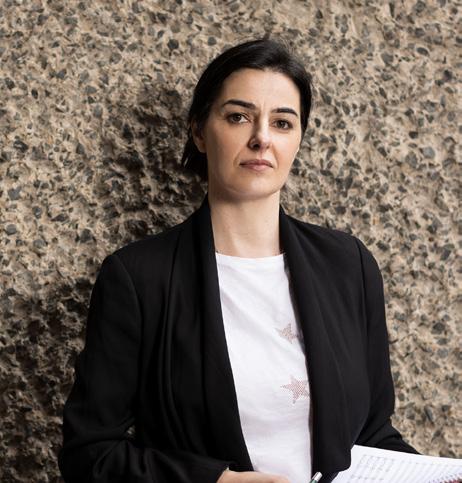
Dobrinka Tabakova is a composer of ‘exciting, deeply moving’ music (Washington Times), with ‘glowing tonal harmonies and grand, sweeping gestures [which] convey a huge emotional depth’ (The Strad). She has been commissioned by the Royal Philharmonic Society, BBC Radio 3 and the European Broadcasting Union. Her debut profile album String Paths, on ECM Records, was nominated for a Grammy in 2014. In 2017 she was appointed composer-in-residence with the BBC Concert Orchestra. An album of her orchestral works, recorded by the Halle Orchestra is released in October 2023.
Dobrinka Tabakova writes:
The suite in three movements aims to portray thee ‘flavours’ of the jazz repertoire, which I have admired for many years, refracted through my own compositional style. In the first movement, the left hand of the piano takes on the role of a pizz bass, while the viola and right hand piano dialogue in a series of inter-linking melodies. The rich and grainy quality of a jazz singer’s voice inspired the lullaby, which is the second movement. The consecutive irregular time signatures of the last movement allude to the fusion of jazz and folk.

One of Canada’s most prominent composers, Stephen Chatman, Professor of Composition at The University of British Columbia, Vancouver since 1976, is the first Canadian ever short-listed in the BBC Masterprize international competition (2001, Tara s Dream for orchestra).
A winner of the 2005, 2006 and 2010 Western Canadian Music Awards “Classical Composition of the Year” and 2020 “Classical Composer of the Year” (2005 - Proud Music of the Storm, 2006Lawren S. Harris Suite for Piano Quintet, 2010 - Earth Songs), 2010 and 2012 SOCAN Jan V. Matejcek New Classical Music Awards, and multiple Juno nominee, Chatman is recognized internationally as a composer of choral, orchestral, and piano music. In 2012, Dr. Chatman was appointed a Member of the Order of Canada.In 2019, Dr. Chatman was appointed a Fellow of the Royal Conservatory of Music. Dr. Chatman’s approximately 100 choral works, widely performed and published by Highgate Press (ECS Publishing, Boston), Boosey & Hawkes (New York), Oxford University Press (New York), earthsongs (Corvallis, Oregon), E.B. Marks (Hal Leonard), Mayfair (Markham, Ontario) and Alfred, have sold more than 500,000 printed copies. Recorded works include three choral collections performed by the Vancouver Chamber Choir, Due North (Centrediscs), Due East (Centrediscs) and Due
West (CBC Records-Centrediscs),”Magnificat” (Centrediscs), “A Chatman Christmas” (Centrediscs), mixed ensemble collections, “Vancouver Visions” (Centrediscs), “Earth Songs” (Centrediscs), an orchestral collection, Proud Music of the Storm (Centrediscs), and instrumental recordings on C.R.I., CBC Records, Naxos, Atma, Globe, Crystal, Skylark, Arsis, and Frederick Harris Music Celebration Series. His orchestral works, commissioned by the Vancouver, Toronto, Edmonton, Windsor, and Madison symphonies, Calgary Philharmonic, and the CBC Radio Orchestra, and published by Highgate Press (ECS Publishing) and Theodore Presser (Bryn Mawr, Pennsylvania), have been performed and recorded by the B.B.C. Symphony Orchestra, Berlin Radio Orchestra, Manitoba Chamber Orchestra, Hong Kong Philharmonic, Niagara, Sydney, Seoul, San Francisco, St. Louis, Detroit, Dallas, New World, Montreal, Quebec, Calgary, Winnipeg, Regina, Saskatoon, P.E.I., and Newfoundland symphonies.
Numerous volumes of Dr. Chatman’s elementary through intermediate level piano music are published in the Stephen Chatman Library series, Frederick Harris Music Co., Mississauga, Ontario, and many piano pieces are included in the syllabus of Canada s Royal Conservatory of Music.
Stephen Chatman writes:
This virtuosic work was inspired by the extraordinary musical talents of this outstanding trio.

Jörg Widmann is considered one of the most versatile and intriguing artists of his generation. The 2023/24 season sees him appear in all facets of his work, as a clarinettist, conductor and composer, including as Composer in Residence of Berliner Philharmoniker and Royal Stockholm Philharmonic Orchestra, as Principal Guest Conductor of NDR Radiophilharmonie, Guest Conductor of Mozarteum Orchester Salzburg, Associated Conductor of Münchener Kammerorchester, Creative Partner of Deutsche Radio Philharmonie, Artistic Partner of Riga Sinfonietta and Artist in Focus at Alte Oper Frankfurt.
Continuing his intense activities as a conductor this season, Jörg Widmann appears for the first time with Berliner Philharmoniker and returns to Bamberger Symphoniker, SWR Symphonieorchester, BBC Scottish, Finnish Radio symphony orchestras, Symphonieorchester des Bayerischen Rundfunks and Juilliard Orchestra New York.
He also continues his longstanding chamber music partnerships with renowed artists such as Clemens Hagen, Carolin Widmann, Nicolas Altstaedt, Sarah Aristidou, Denis Kozhukhin and Hagen Quartet and performs chamber recitals at Schubertiade Schwarzenberg, Philharmonie Berlin, London’s Wigmore Hall, Alte Oper Frankfurt, Berlin’s Pierre Boulez Hall and Madrid’s Auditorio Nacional de Música.
Widmann gave the world premiere of Mark Andre’s Clarinet Concerto über at the Donaueschinger Musiktage 2015. Other clarinet concertos dedicated to and written for him include Wolfgang Rihm’s Musik für Klarinette und Orchester (1999) and Aribert Reimann’s Cantus (2006).
Jörg Widmann studied clarinet with Gerd Starke in Munich and Charles Neidich at the Juilliard School in New York and later became himself Professor of Clarinet and Composition, first at University of Music Freiburg and since 2017 as Chair Professor for Composition at the Barenboim-Said Academy Berlin. He is a fellow of the Institute for Advanced Study in Berlin and a full member of the Bavarian Academy of Fine Arts, Free Academy of the Arts in Hamburg (2007), German Academy of Dramatic Arts and Academy of Sciences and Literature Mainz (2016) and received an Honorary Doctorate from University of Limerick, Ireland in February 2023.
He studied composition with Kay Westermann, Wilfried Hiller, Hans Werner Henze and Wolfgang Rihm. His works continue to receive many awards, most recently Bach-Preis der Freien und Hansestadt Hamburg, as well as Musikpreis der Landeshauptstadt München.
His compositions are performed regularly by conductors such as Daniel Barenboim, Daniel Harding, Kent Nagano, Franz Welser-Möst, Christian Thielemann, Iván Fischer, Andris Nelsons and Sir Simon Rattle and premiered by orchestras as Wiener and Berliner Philharmoniker, New York Philharmonic, Concertgebouw Orchestra Amsterdam, Cleveland Orchestra, Orchestre de Paris, London Symphony Orchestra, and many others.
This season sees the world premiere of Jörg Widmann’s Schumannliebe für Bariton und Ensemble with Matthias Goerne, Peter Rundel and the Remix Ensemble at Casa da Música. Currently, he is writing a Horn Concerto, commissioned by the Berliner Philharmoniker, to be premiered by Stefan Dohr and the Berliner Philharmoniker under the baton of Sir Simon Rattle at Philharmonie Berlin in May 2024.
Jörg Widmann writes:
After several pieces that were about flow and mastering a large form, in 1997 I was fascinated by the idea of fragmented pieces: reduction, scarcity, concentration. The instruments I had grown fond of, the clarinet and piano, had to become foreign to me again; it has become a different familiarity.

American composer Lowell Liebermann is internationally recognized as an artist of uncommon profundity and popularity. Time Magazine proclaimed: “Now brazen and glittering, now radiantly visionary… the work of a composer unafraid of grand gestures and openhearted lyricism.”
Mr. Liebermann has written more than one hundred forty works in all genres, several of which have gone on to become standard repertoire for their instruments. He has composed four symphonies, a Concerto for Orchestra, three piano concertos, and concertos for many other instruments. His works have been premiered by major orchestras, including the Dallas Symphony, the National Symphony, and the New York Philharmonic. His Sonata for Flute and Piano and Gargoyles for piano are among the most popular contemporary works for their instruments, regularly included in recital and competition programs. His full-length ballet Frankenstein, co-commissioned by London’s Royal Ballet and the San Francisco Ballet, has been released on Blu-Ray and DVD. Mr. Liebermann has written two full-length operas, both enthusiastically received at their premieres: The Picture of Dorian Gray, the first American opera commissioned by and premiered in 1995 by l’Opéra de Monte-Carlo, and Miss Lonelyhearts, after the novel by Nathanael West, for the Juilliard School’s 100th anniversary in 2005.
A prolific pianist both live and in recording, Mr. Liebermann has given the world premieres of his own solo piano works as well as works by his fellow composers Ned Rorem and William Bolcolm. In 2021, the Steinway label released an CD of works by Schubert, Liszt, Kabeláĉ, Busoni, and his own composition. A year later, Steinway sponsored a second solo piano album by Mr. Liebermann, The Devil’s Lyre, featuring music of contemporary British composer David Hackbridge Johnson.
Presser Music Publishing says:
A gem in the repertoire for the magical combination of clarinet and viola, the Trio, Op. 128 is a 26-minute masterwork in three movements. Ranging from shimmering dark textures through rollicking glee, the Trio hints at ragtime, and contains an extended duo-cadenza.
The Garibaldi Trio was formed in 2021 by Jose Franch Ballester (clarinet), Marina Thibeault (viola) and David Fung (piano). The three were on faculty at the University of British Columbia and were close friends on and off the stage. They adopted the name ‘Garibaldi Trio’ after the mountain in the backcountry area where they enjoyed hiking.

Clarinetist José Franch Ballester is a captivating performer of “poetic eloquence” (The New York Sun) and “technical wizardry” (The New York Times). He plays regularly at the Bridgehampton Chamber Music Festival, Chamber Music Northwest, the Saratoga Chamber Music Festival, the Skaneateles Festival, Camerata Pacifica, and Music from Angel Fire. He has also appeared at the Usedomer Musikfestival in Germany, the Verbier Festival in Switzerland, the Cartagena Festival Internacional de Música in Colombia, and the Young Concert Artists Festival in Tokyo, Japan. As a soloist, he has appeared with the Orchestra of St. Luke’s, the BBC Concert Orchestra, the Santa Barbara Orchestra, and numerous Spanish orchestras. Winner of the 2004 Young Concert Artists International Auditions, he was presented in debut recitals in New York and in Washington, DC at the Kennedy Center. In 2008, he won a coveted Avery Fisher Career Grant. He was awarded the Cannes Midem Prize, which aims to introduce artists to the classical recording industry. With the Chamber Music Society, he has recorded Bartók’s Contrasts on the Deutsche Grammophon label. Born in Moncofa, Spain into a family of clarinetists and Zarzuela singers, Mr. Franch-Ballester graduated from the Joaquin Rodrigo Music Conservatory. He earned a bachelor’s degree from The Curtis Institute of Music, where he studied with Donald Montanaro and Pamela Frank. He is a former member of CMS’s Bowers Program.

Renowned for her “rich and deep sound as well as her virtuosity and exceptional enthusiasm” (The Strad), violist Marina Thibeault invests the musical scene with an ever renewed fervor as a chamber musician, concert artist and soloist. Convinced that one must “undergo everything, experience everything, face all obstacles, all contradictions” (Pierre Perrault), she sails through the sometimes tumultuous waves of a carefully curated repertoire, approaching old and new works with the same commitment. Through her practice, she constantly questions the traditional place of the performer in order to embody a poetic approach as well as a quest to surpass herself physically and spiritually.
Named Revelation of the Year 2016-2017 by Radio-Canada, Marina has since been invited to perform as a soloist internationally with the Philharmonic Orchestra of the Northern Czech Republic, the Orchestra of Mariánské Lázně, the Chamber Orchestra of Santiago, as well as in recital in Verbier. In Canada, audiences have heard her with the Metropolitan Orchestra, La Sinfonia Toronto, and the Agora Symphony Orchestra, among others. As a chamber musician, she has collaborated with members of the Guarneri Quartet and the Cleveland Quartet, as well as with Charles Richard-Hamelin, Marie-Nicole Lemieux and Johannes Moser. Her interest in new music has led her to work with composers John Corigliano, Joan Tower and Krzysztof Penderecki.
Marina has recorded three albums on ATMA Classique, all of which have received strong critical and public acclaim. Her first release, Toquade (2016), was selected in the “Classical Album of the Year” category at the 2017 ADISQ Gala as well as in the “Record of the Year” category at the 2018 Prix Opus. Recorded in 2019, ELLES has contributed to the recognition of the work of women composers who are unfairly forgotten or unknown to the general public. Her most recent musical adventure, Viola Borealis (2022), reflects her willingness to connect different languages within creative programming. With this album, she revisits her own relationship to the north by traversing works by Latvian composer Pēteris Vasks and Anishinaabe artist Melody McKiver, as well as the very first viola concerto, composed around 1716 by Telemann.
Highly awarded with scholarships and honors, Marina is a graduate of McGill University and the Curtis Institute of Music. Since 2019, she has had the privilege of teaching at the University of British Columbia as an assistant professor where she helps to awaken and affirm the sometimes unexpected artistic vocations of her students.
Having studied the connections between sports psychology and performance as part of her DMus, Marina happily enriches her artistic practice by exploring the surrounding landscapes on her bike or run.


Praised for his “ravishing and simply gorgeous” performances in The Washington Post, pianist David Fung is widely recognized for interpretations that are elegant and refined, yet intensely poetic and uncommonly expressive.
With a repertoire of over sixty concertos, Mr. Fung is a regular soloist with the world’s premier ensembles including the Cleveland Orchestra, the Detroit Symphony, the Israel Philharmonic, the Los Angeles Philharmonic, the San Francisco Symphony, and the major orchestras in Australia including the Melbourne, Queensland, Sydney Symphony Orchestras, working with conductors such as Marin Alsop, Gustavo Dudamel, Michael Francis, Stanislav Kochanovsky, Lan Shui, and Christian Zacharias. An incisive interpreter of Mozart and Bach, Mr. Fung has collaborated with the Israel, Los Angeles, Melbourne, Orpheus, and Saint Paul Chamber Orchestras, and the Orchestra of St. Luke’s.
He has captivated audiences at such venues as Carnegie Hall, the Kennedy Center, Lincoln Center, the Louvre, Gewandhaus, Palais des Beaux-Arts, and Zürich Tonhalle, as well as the major halls in Asia, including the Beijing Concert Hall, Guangzhou Opera House, Hong Kong Town Hall, Seoul Art Center, Shanghai Oriental Art Center, Taiwan National Concert Hall, and the Tianjin Grand Theater. Notable festival appearances include Aspen, Blossom, Caramoor, Edinburgh, Hong Kong Arts, and Ravinia Festival.
Mr. Fung garnered international attention as laureate of the Queen Elisabeth International Music Competition in Brussels and the Arthur Rubinstein Piano International Masters Competition in Tel Aviv, where he was further distinguished by the Chamber Music and Mozart Prizes.
He is the first piano graduate of the Colburn Conservatory in Los Angeles, where he studied with John Perry, and later worked with Peter Frankl, Claude Frank and Arie Vardi at Yale University and the Hannover Hochschüle. Mr. Fung is a curator at the Chan Center for the Performing Arts in Vancouver and serves on the faculties of the Manhattan School of Music and the University of British Columbia. Mr. Fung is a Steinway Artist.
February 11, 2025 | The Folly Theater
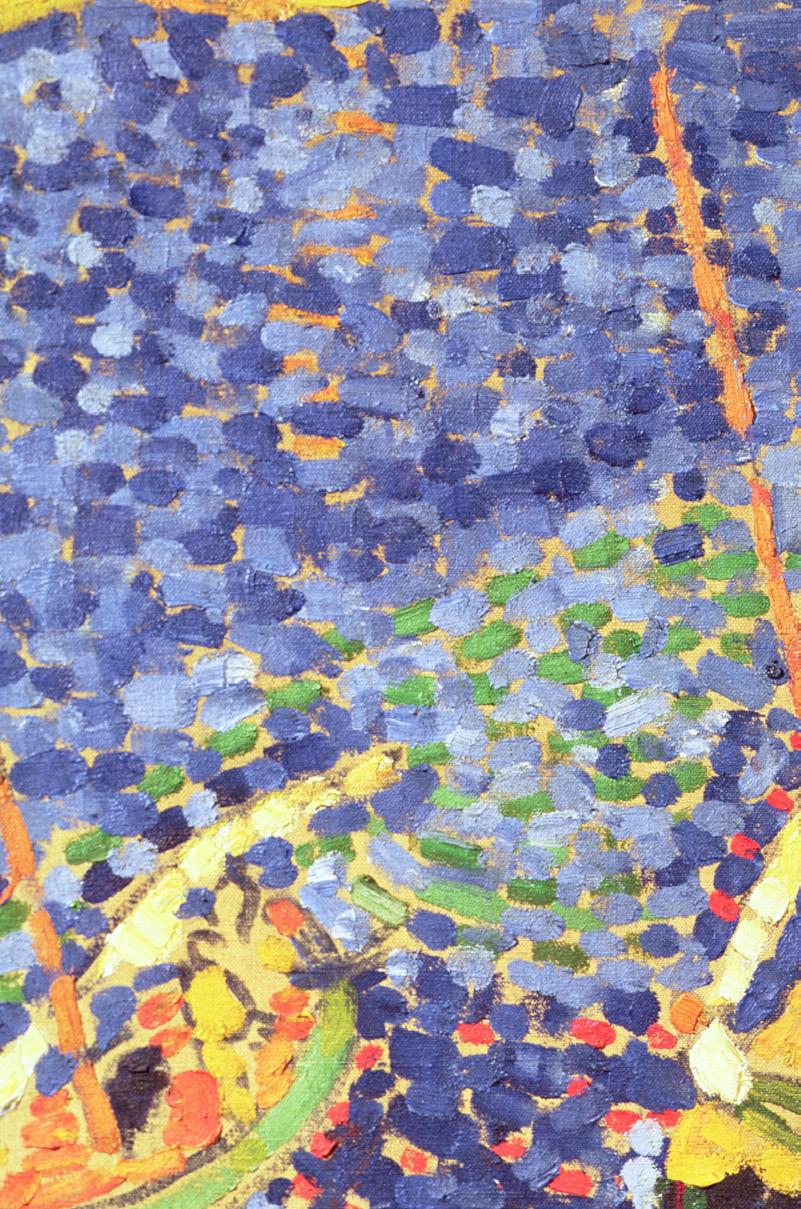

Felix MENDELSSOHN (1809-1847)
Six Selections from Lieder ohne Worte
Op. 19 no. 1 in E major
Op. 38 no. 6 in A-flat major “Duett”
Op. 67 no. 4 in C major “Spinnenlied”
Op. 67 no. 6 in E major “Lullaby”
Op. 67 no. 2 in F-sharp minor
Op. 85 no. 4 in D major
Robert SCHUMANN (1810-1856)
Faschingsschwank aus Wien, Op. 26
Allegro: Sehr lebhaft
Romanze: Ziemlich langsam
Scherzino
Intermezzo: Mit größter Energie
Finale: Höchst lebhaft
- intermission -
Richard WAGNER (1813-1883)
Four Scenes from Götterdämmerung (trans. Nikolai Lugansky)
Brünnhilde and Siegfried’s Love Duet. Prologue
Siegfried’s Rhine Journey
Siegfried’s Funeral March. Act III
Finale: Brünhilde’s Immolation. Act III
Scene from Tristan und Isolde (trans. Franz Liszt)
Isolde’s Liebestod. Act III
The Friends of Chamber Music is grateful for the generous support of our Concert Supporting Sponsors, Thomas and Kathy Nanney and Concert Underwriters, Michael and Marlys Haverty Fund
Felix MENDELSSOHN
Six Selections from Lieder ohne Worte
Op. 19 No. 1 in E major (1829-30, 3 minutes)
Op. 38 No. 6 in A-flat major “Duett” (1836-37, 4 minutes)
Op. 67 No. 4 in C major “Spinnenlied” (1843-45, 2 minutes)
Op. 67 No. 6 in E major “Lullaby” (1843-45, 3 minutes)
Op. 67 No. 2 in F-sharp minor (1843-45, 2 minutes)
Op. 85 No. 4 in D major (1843-45, 3 minutes)
Felix Mendelssohn produced his Lieder ohne Worte, or Songs Without Words – eight volumes containing six pieces each, along with a handful of additional pieces –between 1829 and 1845. These miniatures served the increasing market for domestic musical performance. Many middle-class families now had a piano in the home, and were on the lookout for short, attractive pieces of moderate difficulty to play. The title Lieder ohne Worte may well have come from Mendelssohn himself: in an 1828 letter, Fanny Mendelssohn wrote “My birthday was celebrated very nicely ... Felix has given me a ‘song without words’ for my album (he has lately written several beautiful ones).”
The first volume, Op. 19, was composed over 1829 and 1830 and published in London in 1832 as Original Melodies for the Pianoforte. All the later volumes used the title Songs Without Words. In the first piece from that first set, Op. 19 No. 1 in E major, flowing arpeggios support a simple, lyrical tune, growing more passionate and then calming again. Book 3, Op. 38, was composed in 1836 and 1837. Once again, in the last piece from that set, Op. 38 No. 6 in A-flat major “Duett,” arpeggios provide a constant sense of movement, with the melody spinning itself out, first in the treble, then the bass, then more fully harmonized as a hymn.
Book 6, Op. 67, was composed over 1843 to 1845. Op. 67 No. 4 in C major, nicknamed “Spinnenlied” (Spinning Song), is one of Mendelssohn’s most famous Songs Without Words It is also sometimes known as “Bee’s Wedding” because of the gentle spinning motion elaborated in the right hand, in which some have heard the buzzing of bees. Op. 67 No. 6 in E major, titled “Lullaby,” is in a waltz-like 3/8 time, and Op. 67 No. 2 in F-sharp minor is rather playful, with the skittering movement of its accompaniment. The pieces of Book 7, composed during the same years as Book 6, were published posthumously as Op. 85. Op. 85 No. 4 in D major, marked Andante sostenuto, is a flowing, somewhat inward piece.
Robert SCHUMANN
Faschingsschwank aus Wien, Op. 26 Composed: 1839 Duration: 21 minutes
In 1839, Schumann traveled to Vienna, hoping to establish himself even more firmly as a musical star in that city. Although he was not particularly successful in that goal, and was full of longing for home, he was impressed by Vienna’s energy, especially during the Fasching (Carnival) season. While in Vienna, he wrote the first four of the five
movements of Faschingsschwank aus Wien, which can be translated as Carnival Scenes (or Jest) from Vienna, with the final movement composed once he was back in Leipzig.
The opening Allegro, marked Sehr lebhaft (Very lively), is the longest piece of the set, and probably has the most virtuoso display. A sense of harmonic adventurousness, as well as Schumann’s fondness for unusual rhythms, is on display here. Also worthy of note are two brief quotations, one from Schumann’s own previous carnival-based piece, Carnaval, Op. 9, and the other of “La Marseillaise” (which had been banned in Vienna under its censorship laws). Several musical ideas are featured in between repetitions of the grand opening idea in this rondo-form opener. The short, melancholy Romanze that follows is only a page long, remaining in G minor until its move to G major right at the end. Syncopated rhythms mark the third movement Scherzino, which maintains its light and airy feeling throughout.
Perhaps the emotional heart of this work is the fourth movement Intermezzo. Marked Mit Größter Energie (With the greatest energy), the music does indeed create a constant sense of movement with the stream of notes in the right hand, which is likewise responsible for the single notes of the main theme. The palpable emotion of this music has led more than one commentator to suggest that this piece is Schumann’s expression of longing for his wife Clara, who was back at home in Leipzig with the children. Schumann had himself returned to Leipzig by the time he wrote the triumphant, festive Finale, with its fanfare-like opening in octaves, the lively triplets in its accompaniment, and its energetic coda.
Richard WAGNER
Four Scenes from Götterdämmerung (trans. Nikolai Lugansky)
Der Ring des Nibelungen, or The Ring of the Nibelung, stands as one of the most ambitious projects of nineteenth century music. Wagner wrote both the words and music over the years 1848 to 1874, drawing the story from German and Norse sagas and legends. Following the story of the ring, fashioned from the god of the Rhein, and starting with Das Rheingold and continuing through Die Walküre and Siegfried, the cycle of four music dramas culminates with the massive Götterdämmerung. The title Götterdämmerung is a German translation of the Old Norse Ragnarök, in Norse mythology a war involving humans and mortals that ends in the destruction and renewal of the world.
Wagner explores several themes in the course of The Ring: the conflict between love and the pursuit of power, the violation of the natural order, self-sacrifice, annihilation, and rebirth. He wrote The Ring for a huge orchestra, which makes the task of transcribing his music for the ten fingers of a pianist quite a challenge. Only a few, including
Nikolai Lugansky and Franz Liszt, one of whose transcriptions is heard at the end of this concert, have attempted such arrangements.
Brünnhilde and Siegfried’s Love Duet. Prologue
Composed: 1876 Duration: 15 minutes
Götterdämmerung is laid out as a Prologue and three large acts. After an initial scene involving the three Norns comes a short orchestral interlude depicting Tagesgrauen, or Dawn. In Scene 2, Siegfried and his bride Brünnhilde emerge from their cave, high on a mountaintop and surrounded by magic fire. Brünnhilde urges Siegfried on to new heroic deeds, sending him away while also exhorting him to remember their love. Siegfried considers himself but a vehicle of her will: “All my battles thou wilt choose, all my triumphs thou wilt achieve!” Pledging his love, he gives her the ring of power that he stole from Fafner as a sign of his faithfulness. She in turn gives him her shield and her horse Grane. In their Love Duet, they sing of the power of their love, which nothing can effect, in music that is both heroic and full of passionate longing, including the ecstatic quality of the Prologue.
Siegfried’s Rhine Journey
Composed: 1876 Duration: 11 minutes
At the end of the Prologue, after Brünnhilde sends Siegfried off to his adventures, riding her horse and carrying her shield, the music becomes quiet and the transition to Act 1 begins with Siegfried’s Rhine Journey. In the orchestral version of the piece, a quiet timpani roll and a statement of the “fate” motif leads to a somber line from the cellos. Following more powerfully is the heroic Siegfried theme, as the darkness of night gives way to a bright day. We hear Siegfried’s theme a couple of times before the clarinet quietly introduces Brünnhilde’s theme. Her theme builds slowly to a grand climax. These contrasting themes – forceful and heroic, and languorous and lyrical – alternate, with ever-evolving moods and harmonies. The music becomes by turns dance-like and joyous, and proudly heroic. At one point the sinuous, flowing music that represents the Rhine River also makes an appearance.
Siegfried’s Funeral March from Act III
Composed: 1876 Duration: 12 minutes
For this piece, we jump ahead considerably in the action, to Act III. While on a hunting expedition, Siegfried recounts some of the major moments of his youth, and his discovery and awakening of the sleeping Brünnhilde. But this only confirms that Siegfried has betrayed the blood-brotherhood he had sworn, and Hagen stabs Siegfried in the back with his spear. In his final moments, Siegfried reminisces about Brünnhilde and their love. As Siegfried’s body is borne away on his shield in a solemn funeral procession, we hear Siegfried’s Funeral March. Over a two-note rhythmic motif and initial rumblings from the bass, music of mourning and outbursts of anger are
heard, culminating in the sounding of the “Hero” motif. The two-note phrase and the opening rumblings return. Moonlight soon breaks as the mourners approach. Motifs from throughout the music drama, including Siegfried’s music, are heard in this elegy to the fallen hero.
Finale: Brünnhilde’s Immolation from Act III
Composed: 1876 Duration: 18 minutes
Back in the Gibichung Hall, Siegfried’s corpse is brought in to great mourning. Brünnhilde, her features seemingly transfigured, enters. She declares that Siegfried’s death was in fact necessary for her to become all-knowing and free. She orders that a huge funeral pyre be built for him by the river, and she takes the ring from his finger and puts it on her own. Lifting her gaze to the sky, she proclaims to Wotan that the death of Siegfried has, through love and grief, served as an atonement for the guilt of the gods. As Brünnhilde lights the funeral pyre, she pays tribute one more time to the dead Siegfried before mounting her horse Grane and riding into the flames, joining her beloved in death. Ultimately the Rhinemaidens recover the ring, purified of its curse by the fire. This final scene, known as Brünnhilde’s Immolation, is one of the most powerful of the entire Ring cycle. Leitmotifs from throughout the four music dramas make appearances in this dramatic and tragic music, in the which the old order is destroyed, making way for the new.
Richard WAGNER
Isolde’s Liebestod from Tristan und Isolde, Act III (trans. Franz Liszt)
Composed: 1857-59 Duration: 8 minutes
Premiered in 1865, Tristan und Isolde is largely based on the twelfth century romance Tristan and Iseult by Gottfried von Strassburg. His work and that of other medieval German poets was embraced by Romantic artists of the nineteenth century. As Marc Mandel has written, “Tristan und Isolde is about love: love repressed and unacknowledged, then helplessly and haplessly expressed, and fulfilled, after emotional torment, only through death.” Wagner’s music drama remains famous, and was very influential among later composers, for Wagner’s tonal ambiguity and use of harmonies that had not been encountered in music to that point. The work’s first chord, now known as the “Tristan chord,” is just one such example.
The dissonances of that chord are only resolved at the very end of the opera, in the Liebestod, or Love Death, the drama’s final dramatic scene, in which Isolde sings over Tristan’s dead body: “Do you not see? How he shines ever brighter, star-haloed, rising higher. Do you not see?” Isolde’s final aria “Mild und leise” became the basis for the piano version of the Liebestod by Wagner’s father-in-law, Franz Liszt. Completed in 1867, the piano transcription became famous all over Europe, even before Wagner’s music drama had reached many of those places.
Program notes by Chris Morrison

Nikolay Lugansky was born in 1972 in Moscow. He was studying at Central Music School at Moscow Conservatory under Tatiana Kestner and later on with such professors as Tatiana Nikolayeva and Sergey Dorensky. He continued his postgraduate education under Dorensky supervision. The initial stage of his career as the solo pianist brought him the title of the laureate of the I All-Union competition of young musicians in Tbilisi (1988), VIII International competition of J.S. Bach in Leipzig (1988), All-Union competition of S.V. Rachmaninoff in Moscow (1990), International summer academy Mozarteum (Salzburg, 1992) and the win at the Tchaikovsky Competition in 1994.
In 2013, Nikolay Lugansky was awarded the title of the “Honored artist of the Russian Federation”. Today on the count of the soloist of the Moscow Philharmonic and honored member the Russian Academy of arts there are many brilliant artistic achievements. They include collaboration with the best symphonic orchestras of Russia, France, Germany, Japan, Netherlands, and the USA and of many other countries under the direction of well-known conductors as Evgeny Svetlanov, Yuri Temirkanov, Gennady Rozhdestvensky, Valery Gergiev, Vladimir Fedoseyev, Mikhail Pletnev, Vladimir Spivakov, Vladimir Jurowski, Yuri Simonov, Alexander Vedernikov, Kirill Petrenko, Kurt Masur, Charles Dutoit, Leonard Slatkin, Kent Nagano, Marik Janowski, Gianandrea Noseda and Sakari Oramo. Besides Lugansky`s partners in chamber performances were pianists Vadim Rudenko, Yuja Wang, violinists Vadim Repin, Leonidas Kavakos, Isabelle Faust, Sergey Krylov, cellists Aleksander Knyazev, Aleksander Rudin, Misha Maisky, clarinetist Evgeny Petrov and soprano Anna Netrebko.
Nikolay Lugansky has got a round of applause in the Great Halls of Moscow Conservatory and St.Petersburg Philharmonic, Concert Hall of P.I.Tchaikovsky, Concertgebouw (Amsterdam), Theatre des Champs Elysees (Paris), Mozarteum (Salzburg), The Auditorium Parco della Musica (Rome), Great Hall of Berlin Philharmonic, Carnegie Hall (New York), Suntory Hall (Tokyo), Wigmor Hall and Royal Albert Hall (London), Konzerthaus and Musikverein (Vienna) and many other famous halls of the world.
Lugansky is a constant participant of festivals in Roque-d’Anthéron, Colmar, Montpellier and Nantes (France), Ruhr and Schleswig-Holstein (Germa-
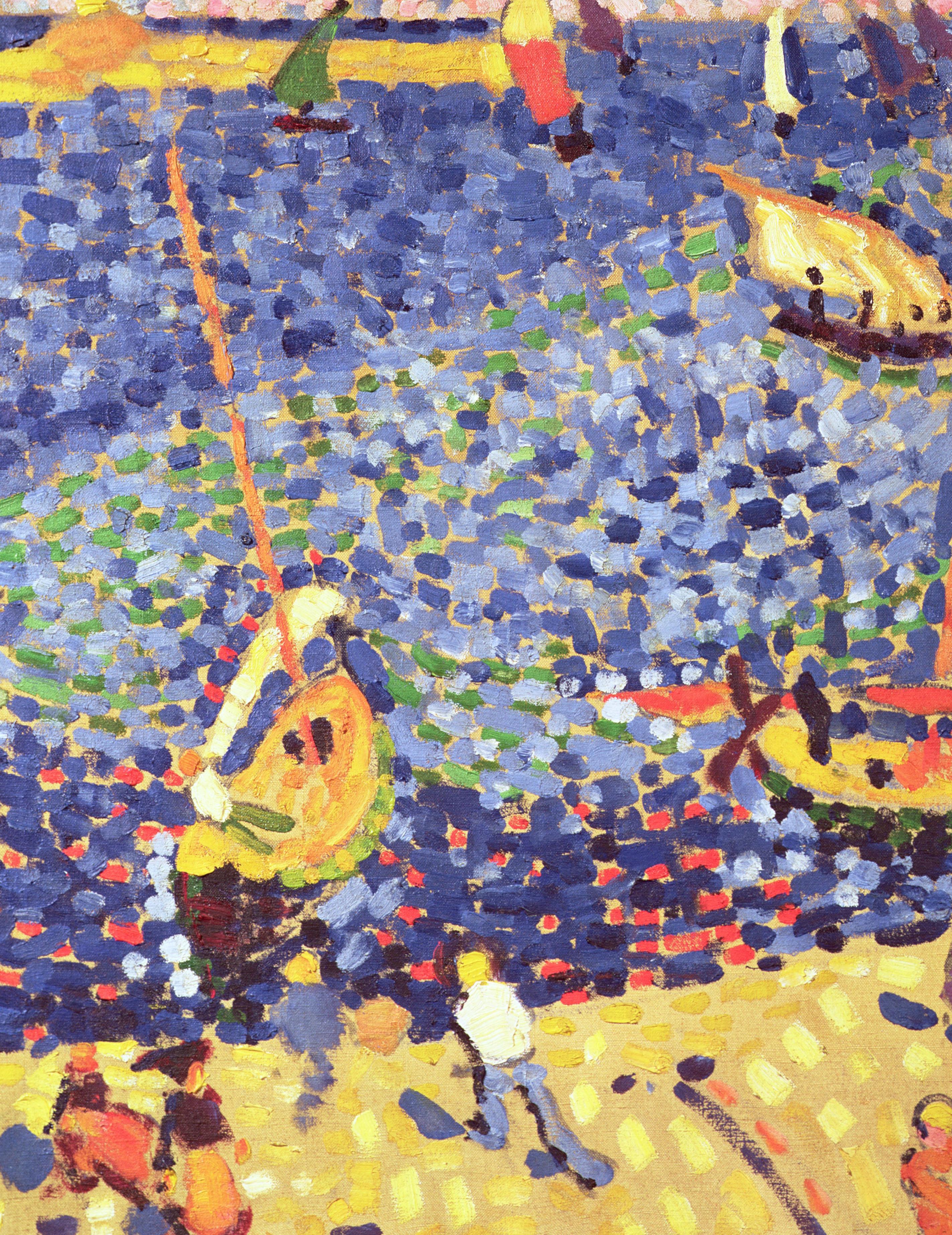
ny), Verbier and Gstaad (Switzerland) and “December evenings” in Moscow.
The pianist’s repertoire includes more than 50 piano concerts, works of different styles and epochs: from Bach to contemporary music. The performance of Chopin’s compositions by Nikolay Lugansky, which deserved comparison with the interpretations of the great Alfred Corto, was especially recognized.
The discography of Nikolay Lugansky includes records with such labels as “Melody”, Erato Disques, Warner Classics, Deutsche Grammophon, Naïve, Harmonia Mundi and other companies. His albums have been awarded many international prizes, including the Award of Terence Judd, Diapason d’Or de l’Annee (three times), ECHO Klassik (three times), Choc du Monde de la Music, Preis der Deutschen Schallplattenkritik and BBC Music Magazine Award.
Since 1998, the pianist has been giving lectures as the professor at the Moscow Conservatory at the department of special piano. Besides, Nikolay Lugansky still gives hundreds of concerts all over the world annually.
The 2018/2019 season was marked by release of the records of Claude Debussy`s compositions for the Harmonia Mundi label, China tour with the National orchestra of France, solo concerts in Moscow, Saint Petersburg, Ekaterinburg, Amsterdam, Budapest, Paris, London, Berlin and performances with Vasily Petrenko in Oslo, Birmingham, with Yuri Temirkanov in Tokyo and Taiwan, with Juanjo Mena in Madrid, with Stéphane Denève in Brussels, Emmanuel Krivine in Paris and with Tugan Sokhiev in Vienna.
For the 2019/2020 season, there are intense tours all around the world from Washington to Seoul. Nikolay Lugansky will give solo concerts in Moscow hall “Zaryadye”, Vienna Konzerthaus, Concertgebouw in Amsterdam, in Luzern and many other significant venues. Among scene partners, there will be the Russian National orchestra under the direction of Mikhail Pletnev, London Philharmonic orchestra and Vladimir Yurovsky, the Honored ensemble of Russia Academic Symphony orchestra of Saint Petersburg Philharmonic and Charles Dutoit, Philharmonic orchestra of Radio France with Mikko Franck and many others.
Nikolai Lugansky appears by exclusive arrangement with Opus 3 Artists

February 21, 2025 | Village Presbyterian Church
“Josquin’s Legacy”
The Gesualdo Six
Owain Park, director
Guy James, countertenor
Alasdair Austin, countertenor
Marian Devotions

Antoine BRUMEL (c.1460-c.1512):
Johannes OCKEGHEM (c.1410-1497):
Antoine de FÉVIN (c.1470-c.1512):
Jean MOUTON (c.1459-1521):
Jean L’HÉRITIER (c.1480-after 1551):
Joseph Wicks, tenor
Josh Cooter, tenor
Michael Craddock, baritone
Sub tuum praesidium
Intemerata Dei Mater
Nesciens mater
Ave Maria, virgo serena
Sub tuum praesidium
Deplorations and ‘Regretz’ Chanson – Queen of Hearts
Josquin LEBLOITTE dit des Prez (c.1450/55-1521):
Josquin des Prez (c.1450/55-1521):
Pierre de la RUE (c.1452-1518):
Antoine BRUMEL (c.1460-c.1512):
Loyset COMPÈRE (c.1445-1518):
Costanzo FESTA (c.1485/90-1545):
Josquin des Prez (c.1450/55-1521):
Nymphes des bois / Requiem aeternam
Mille regretz
Secretz regretz
Tous les regretz
Plaine d’ennuy / Anima mea
Quis dabit oculis
O Virgo Prudentissima
The Friends of Chamber Music is grateful for the generous support of our Concert Underwriters, Charles and Virginia Clark
Over the past few years, it has been a joy to delve further into the rich tapestry of musical works composed by Josquin and his contemporaries. Our program, Josquin’s Legacy, explores the cross-currents of texts and the movement of ‘Oltremontani’ composers (from the Franco-Flemish School who came ‘over the Alps’ to northern Italy) as they traveled around Renaissance Europe.
In the first half, Marian Devotions, we explore music that venerates the Virgin Mary—the ‘regina caelorum’, and in the second half, Queen of Hearts, we sing music that memorializes her terrestrial counterparts, highlighting the interwoven lives of Anne of Brittany and Margaret of Austria.
Opening our program is Antoine Brumel’s Sub tuum praesidium, a simple prayer to Mary for protection that was also set by a small host of other composers such as Obrecht and Cipriano de Rore. Brumel writes for lower voices using simply ornamented homophonic statements in a peaceful setting. The work opens with a typically pithy chordal passage, reminding one of an illuminated initial in a manuscript, before alternating radiant chords with melismatic duets and trios. It is included in the beautifully illuminated “Manuscript 1760”, a key European source, which is preserved in the Pepys Library in Cambridge, UK.
The motet Intemerata Dei mater by the Franco-Flemish musician Johannes Ockeghem—who spent much of his career serving the French Royal Court in a variety of different artistic roles—was not actually published until a year after its composer’s death as part of a volume of sacred music (the Chigi codex) in Flanders. This five-voice setting of an obscure Marian text in three parts which pleads for the intercession of the Virgin Mary is a tour de force, showcasing Ockeghem’s range of vocal textures, from dense and intricate polyphony to the use of homophony, such as that used to describe ‘dulci quos nectare potas’. Here Ockeghem uses longer note values to allow for a corporate and languid approach to the text, conjuring to the singers’ throats the sensations of the sweet nectar given to humankind.
Both Antoine de Févin and his brother Robert were prolific composers, and Antoine and his fellow Oltremontano Jean Mouton are known to have been at Ferrara alongside Brumel in the 1510s. Nesciens mater, a reasonably rarely set Christmas antiphon, is attributed to Antoine de Févin and may have been known to Mouton, potentially inspiring his own more famous setting with an 8-ex-4 canon (where eight parts are produced from four notated parts performed in canon, often at a different pitch). Févin’s work is highly melismatic, with a lack of textual repetition and the resulting scarcity of consonants giving the phrases a pleasingly transparent texture.
A master of the Franco-Flemish school, Jean Mouton’s works were highly regarded for their intricate polyphony and expressive harmonic language. Ave Maria Virgo Serena is one of Mouton’s most celebrated motets, showcasing his skill in counterpoint and his sensitivity to text setting. Written for four voices, it begins with a serene and flowing opening, with each voice entering in imitation, creating a tapestry of sound that gradually builds in complexity.
We close this half with another setting of the simple prayer to Mary, Sub tuum praesidium, this time by Jean Lhéritier (another Oltemontano composer found in the choir registers of Ferrara). Lhéritier’s setting has grander scope than Brumel’s, with six parts freely composed in a playful, almost instrumental style. Somewhat atypically Lhéritier resorts to homophony for ‘libera nos’, abandoning dense polyphony to provide a moment of clarity.
The emotional core of our program is centered around Josquin des Prez’s Nymphes des bois (subtitled ‘Déploration sur la mort de Johannes Ockeghem’), a beautiful and personal work which echoes Ockeghem’s own deploration for Binchois, extending Ockeghem’s musical ‘genealogy’ to Josquin—itself later continued by deploration settings for Josquin by Gombert, Jacquet of Mantua and others.
Josquin sets Molinet’s Art de rhetorique, which employs techniques that might feel more suited to twenty-first-century French rap: ‘Car Atropos, tres terrible satrappe, / A vostre Okgem, atrape en sa trape’ (‘Because Atropos, such a terrible satrap, / has caught your Ockeghem in her trap’).
Molinet’s Nymphes des bois is itself responding to Guillaume Crétin’s significantly longer poem ‘Déploration … sur le trépas de Jean Okeghem’, which calls upon a host of famous composers such as Agricola, Prioris and Verbonnet to lament the passing of their ‘bon père’ Ockeghem. Molinet opts to mention a more select group of only four: ‘Acoutrez vous d’abitz de deuil; / Josquin, Brumel, Pierchon, Compère’ (‘Put on your mourning clothes; / Josquin, Brumel, La Rue, Compère’).
Recent work by Dr. Jeannette Jones suggests that Nymphes des bois could well date from 1502/3, immediately before Josquin’s arrival in Ferrara from Lyon. In early sources Nymphes des bois is written in black notation to signify mourning, and Josquin uses the Requiem aeternam text as a cantus firmus in the tenor part, with the chant stretched out in long notes underpinning almost all of the work. He transposes this chant, the introit for the Office of the Dead, down a step into the Phyrigian mode, giving the chant an unearthly quality. This may even be a reference to some of Ockeghem’s more mysterious works, in which by writing without a musical clef he omits to specify the relationships between pitches, as in his three-part canon Prenez sur moi.
The next section of our program, features pieces from a group of works called ‘regretz’ chansons. The most famous, Mille Regretz by Josquin, became so after flourishing in print during the middle of the sixteenth century. Whilst there is some debate as to whether the work can be firmly attributed to Josquin, its undeniable beauty and evocative sighing final bars make it one of our favorites. So too of the Holy Roman Emperor, Charles V (1500-1558), who appears to have received a Mass based upon the motet from Spanish court composer Cristóbal de Morales as a gift in 1544. In the opening section, hear how the use of a rising fourth in the top voice, which gradually moves higher and higher, lends a sense of pining. Towards the end, this pattern is reversed, and the interval is reached through stepwise motion, almost as if the narrator has given up and started trudging slowly away.
The first ‘regretz’ chansons were written for Margaret of Austria (1480-1530), a major musical patron associated with this repertoire. She commissioned a ‘chansonnier’ (a large book of chansons) for her personal use. This book opens with a series of works by Pierre de La Rue, including Secretz regretz, which looks beyond the text’s typical personal angst and calls for the support of the poet’s ‘loyaux amis’ (‘loyal friends’). La Rue uses duets to and simply syllabic statements which then overflow to pour out the grief of the text into long, sobbing melismas. Our final ‘regretz’ chanson is Antoine Brumel’s Tous les regretz, set to the poetry of Clement Marot. This work paints a vivid picture of longing and yearning in matters of love. Through a series of intertwining vocal lines, Brumel weaves a tapestry of emotion, capturing the complexities of human desire with sensitivity and nuance.
Also found in Margaret of Austria’s chansonnier is Franco-Flemish composer Loyset Compère’s motet-chanson Plaine d’ennuy / Anima mea. Here the upper parts duet in French verse above the bass part’s Latin text in a manner similar to using chant as a cantus firmus - a technique called cantus prius factus. Compère extracts his tenor part from the Song of Songs motet Anima mea liquefacta est by fellow singer at the Sforza court in Milan, Gaspar van Weerbeke.
Costanzo Festa was one of the few Italian composers of his time considered the equal of the Oltremontani Franco-Flemish composers. His Quis dabit oculis? is one of two known settings of a text lamenting the death of Anne of Brittany in 1514, the other being by Jean Mouton. Festa’s setting survives under Senfl’s name as a reworking for the death of Anne’s first husband, Maximilian I. Restored with the original text, Festa’s harmony pours out lamentation for the twice-queen of France, and culminates in a particularly heart-breaking manner with ‘Anna, Anna, requiescat in pace’.
We close our program with Josquin’s O Virgo prudentissima, which is one of two settings by Josquin of a Marian text by Medici-educated polymath Angelo Poliziano. In this, Josquin uses a double-canon cantus firmus of Beata mater et innupta virgo, around which the remaining four voices weave rich polyphony. The text of the secunda pars alludes to the ancient hymn Sub tuum praesidium, which we have heard set by composers earlier in this program.

(c. 1530): “The

The Gesualdo Six is an award-winning British vocal ensemble comprising some of the UK’s finest consort singers, directed by Owain Park. Praised for their imaginative programming and impeccable blend, the group formed in 2014 for a performance of Gesualdo’s Tenebrae Responsories in Cambridge and has gone on to perform at numerous major festivals around the world.
Notable highlights include a concert in the distinguished Deutschlandradio Debut Series, performances at renowned venues including Wigmore Hall (London), Miller Theatre (New York), the Sydney Opera House, and their debut at the BBC Proms in 2023. In 2024, The Gesualdo Six made their South American debut in Colombia, and appear in Japan, China and Singapore for the first time. The ensemble have collaborated with Fretwork, the Brodsky Quartet, and Matilda Lloyd, and tour a work of concert-theatre titled Secret Byrd with Director, Bill Barclay.
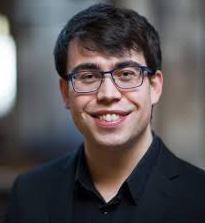

The Gesualdo Six is committed to music education, regularly hosting workshops for young musicians and composers. The ensemble have curated two Composition Competitions, with the most recent edition drawing entries from over three hundred composers worldwide. The group recently commissioned new works from Shruthi Rajasekar and Joanna Marsh, alongside coronasolfège for 6 by Héloïse Werner.
The ensemble have harnessed the power of social media to make classical music accessible to millions worldwide, creating captivating videos from beautiful locations while on tour. The group released their debut recording English Motets on Hyperion Records in early 2018 to critical acclaim, followed by seven further albums (Christmas, Fading, Josquin’s Legacy, Gesualdo’s Tenebrae Responsories, Lux Aeterna, William Byrd’s Mass for five voices, Morning Star). Their latest album, Queen of Hearts, was released at the end of June 2024.
Owain Park was born in Bristol in 1993. As well as directing The Gesualdo Six, Owain is Principal Guest Conductor of the BBC Singers, and maintains a busy schedule of conducting projects with ensembles including Southbank Sinfonia, Ensemble la Sportelle and Cappella Cracoviensis. Owain’s compositions are published by Novello and have been performed internationally by ensembles including the Tallis Scholars and the Aurora Orchestra. While at Cambridge University he studied orchestration with John Rutter, before undertaking a Masters degree in composition. He is composer-in-residence for the London Choral Sinfonia, and was one of BBC Radio 3’s 31 under 31 Young Stars. The Choir of Trinity College Cambridge recorded an album of his compositions which was nominat-
ed for the BBC Music Magazine Awards. In 2023, Battle Cry, a collaborative album from Helen Charlston (mezzo-soprano) and Toby Carr (theorbo) featuring Owain’s composition as the title track, won the Gramophone Award for Best Concept Album.
Owain is a Fellow of the Royal College of Organists (FRCO), and was awarded the Dixon Prize for improvisation, having been Senior Organ Scholar at Wells Cathedral and Trinity College Cambridge. He was a Tenebrae Associate Artist for two seasons, and has worked with ensembles including The Sixteen, Gabrieli Consort, and Polyphony. Owain is a keen gardener, and when he’s not on stage he can be found raking, pruning, or picking cherry tomatoes.
The Gesualdo Six appear by exclusive arrangement with Alliance Artists Management

March 21, 2025 | Grace & Holy Trinity Cathedral

John DOWLAND (1563-1623)
A dream
The king of Denmark’s galliard
Melancholy galliard
Mrs. Winter’s jump
Lachrimae
Frog galliard
Erik SATIE (1866-1925) (arr. DUNFORD)
Première Gymnopédie
Marin MARAIS (1656-1728) (arr. DUNFORD)
Les voix humaines in D major from Suite No. 3
L’americaine in E major from Suite d’un goût etranger
Erik SATIE (1866-1925) (arr. DUNFORD)
Première Gnossienne
Johann Sebastian BACH (1685-1750) (arr. DUNFORD)
Suite for Solo Cello in G major, BWV 1007
Praeludium
Allemande
Courante
Sarabande
Menuet I - Menuet II - Menuet I
Gigue
Girolamo KAPSBERGER (1580-1651)
Toccata No. 6 from Primo Libro d’intavolatura de lauto
Joan Ambrosio DALZA (fl.1508)
Calata alla Spagnola from Quarto Libro d’intavolatura de lauto - intermission -
John DOWLAND
A dream (c. 1590, 4 minutes)
The King of Denmark’s galliard (1604, 3 minutes)
Melancholy galliard (c. 1600, 3 minutes)
Mrs. Winter’s jump (c. 1600, 2 minutes)
Lachrimae (c. 1590, 5 minutes)
Frog galliard (c. 1595, 2 minutes)
John Dowland was a composer, lutenist, and singer, wellknown during his lifetime, and remembered today for his beautiful, often melancholy, songs and instrumental pieces. Not much is known of his early life. He was born in England or Ireland, traveled to Paris in his teens to work for the ambassador to the French court, then returned to England, where he attended the University of Oxford and attempted unsuccessfully to become a musician in the court of Elizabeth I. From 1598 to 1606, Dowland worked at the court of the music-loving King Christian IV of Denmark. Then in 1612, he won a position as a lute player in the court of King James I. Dowland was also involved in some obscure intrigues, and possibly dangerous or treasonous activities (including spying), in Italy, France and Denmark.
Dowland’s lute works number around ninety. Many take the form of dances. Others are more meditative, including the stately, melancholy A dream, the origins of which are unknown. It is a pavane, a slow processional dance that originated in the sixteenth century (another example by Maurice Ravel can be heard in the final concert of this season).
A revision of Dowland’s earlier Battle galliard, The King of Denmark’s galliard was included in the collection Lachrimae, or Seaven Teares, a set of instrumental pieces that was published in 1604 and dedicated to Queen Anne of Denmark, wife of the new English King, James I. The galliard, a lively sixteenth century dance form in triple meter, was a favorite of Dowland’s: he composed more of them, around thirty, than of any other dance form. The Melancholy galliard, possibly a later work, is notable for its polyphonic textures.
Dowland frequently dedicated pieces to friends, patrons and associates at court. Many are only known by name, including the Mrs. Winter of Mrs. Winter’s jump, a polite courtly dance with something of the rhythm of a gigue.
Lachrimae (Tears) was one of Dowland’s biggest hits during his lifetime. The main theme turned up in many subsequent compositions, including a famous song for voice and lute, Flow, my tears, as well as the publication Lachrimae, or Seaven Teares mentioned above. As Dowland wrote on the dedication page of that publication, “The teares which Musicke weeps” can be pleasant, and “neither are teares shed always in sorrow but sometime in joy and gladnesse.” Another instance of a pavane, Lachrimae is in three sections, each of them repeated with additional embellishments.
No one knows for certain how the Frog galliard got its name. But it may have been connected with one of Queen Elizabeth I’s suitors, the Duc d’Alençon, apparently an unattractive man with a particularly large nose whom the Queen referred to as her “frog.” The galliard became another of Dowland’s “hits,” and was borrowed for new compositions by many subsequent composers, including Thomas Morley. Dowland himself borrowed its main melody for the song “Now, O now, I needs must part,” which may have been about the departure of the Duc d’Alençon after his rejection by the Queen.
Erik SATIE
Première Gymnopédie
Composed: 1888 Duration: 4 minutes
In his unassuming way, Erik Satie proved to be one of the most influential composers of the early twentieth century. Born in Normandy, Satie studied from his teens at the Paris Conservatoire – which he hated, and where he was judged to be “worthless” and “the laziest student in the Conservatoire.” After a brief stint in the military, he moved to Montmartre, embraced a bohemian lifestyle, and composed his first great music, including the three Première Gymnopédie, while eking out a living as a freelance cabaret pianist, composer, and conductor. Having befriended Claude Debussy, whose opera Pelléas et Mélisande bowled him over, Satie enrolled at the Schola Cantorum to further his musical abilities. Only in the early 1910s, when Satie was in his mid-forties, did he and his unconventional music start to attract attention. Satie led a new generation of composers, including the group Les Six, away from grand aspirations and toward a simpler, more quirky and humor-filled approach. After World War I, now an established part of the artistic avant-garde, Satie collaborated with people like Jean Cocteau, Pablo Picasso, Léonide Massine, Francis Picabia, and René Clair.
Satie drew the enigmatic title for his three Gymnopédies from the Greek word gymnopaedia, an ancient festival at which young men danced. As with the other two, the melodies of the Première Gymnopédie are deliberately simple, set against a background of gentle chords that ranges from purely consonant to mildly dissonant. Their melancholy atmosphere is emphasized in performance directions in the scores like “douloureux” (painful) and “triste” (sad). The Première Gymnopédie has become famous, performed widely in a variety of arrangements, sampled by musicians like Janet Jackson, and appearing in films like My Dinner with Andre

Marin MARAIS
Les voix humaines in D major from Suite No. 3
Composed: 1701 Duration: 6 minutes
L’americaine in E major from Suite d’un Goût Étranger
Composed: 1717 Duration: 4 minutes
Marin Marais was a French composer and virtuoso of the viol, or viola da gamba, an early string instrument that looks not unlike a cello. Marais studied composition with Jean-Baptiste Lully, and with the bass viol master Monsieur de Sainte-Colombe. In 1676, Marais was hired as a musician in the orchestra at the royal court of Versailles, and continued to work there until 1725. Along with operas and other instrumental music, he wrote five books of Pièces de viole (1686–1725). Normally in the form of suites, or collections, they were very popular at Versailles. The music of Marais reached even greater fame with the 1991 semi-biographical film Tous les matins du monde (All the Mornings of the World).
Like many composers of his day, Marais had a fondness for fanciful names for his compositions. The meditative and somber Les voix humaines (The human voices) is part of his Suite No. 3 for bass viol and continuo from the Pièces de viole, Livre 2. That tendency toward descriptive titles is also on display in the Suitte d’un Goût Étranger (Suite in a Foreign Style), part of the collection Pièces de viole, Livre 4, published in 1717. Unlike some of his more accessible pieces, the 33 of the Suitte d’un Goût Étranger – including pieces with titles like March of the Tartars, The Asthmatic, The Labyrinth, and the lively and playful L’americaine (The American) – became famous for their technical and musical demands.
Erik SATIE
Première Gnossienne
Composed: 1890 Duration: 4 minutes
The seven works titled Gnossiennes were composed in the years after the Gymnopédies. Once again, the origin of the name is obscure. Gnossienne may refer to the dance that Theseus did after he defeated the Minotaur, or it may derive from gnosis, the Greek word for knowledge (Satie had an interest in Gnosticism and occultism at the time). In musical terms, unlike the Gymnopédies, the Gnossiennes have no time signatures or bar lines, giving them an even more free-floating quality. Otherwise, though, they share many qualities, including a repetitive simplicity of melody, a regular but delicate rhythm, and a meditative quality that creates, as one writer has said, “a delicate balance between serenity and sadness.”
Johann Sebastian BACH
Suite for Cello Solo No. 1 in G major, BWV 1007
Composed: 1720 Duration: 16 minutes
As is the case with the six Sonatas and Partitas for violin, there is some mystery as to why Bach composed the six
Suites for solo cello, which date from around the same time, the late 1710s or early 1720s. Typically relegated to an accompaniment role in trio sonatas and the like, the cello as a solo instrument had only just begun to come into its own, partly through the concertos of composers like Antonio Vivaldi. Bach had daily contact with two fine cellists, Christian Ferdinand Abel and Christian Bernhard Linigke, at Prince Leopold’s court at Cöthen. Perhaps their artistry inspired him, or perhaps he was simply exploring the limits of what the instrument could do. The Suites were not at all well known until the twentieth century. Eric Siblin’s book The Cello Suites tells of how Pablo Casals, then a thirteen-year-old student, discovered an edition of the works while hunting with his father for music scores in a Barcelona thrift shop. Casals performed the Suites frequently over his long career, made famous recordings of them, and established them as the touchstone for cellists – and other instruments like the lute for which they have been arranged – that they are today.
The relaxed, almost innocent Suite No. 1 in G major is one of the most popular of the six. The opening Prélude, one of Bach’s most famous pieces, resembles the opening piece of Book 1 of his Well-Tempered Clavier in mostly being comprised of arpeggios, a series of sixteenth notes varied in texture and volume. The more elaborate Allemande, moderately slow and in duple meter, has an overlay of melancholy, countered by the jaunty humor of the following Courante. The slow, intense song of the Sarabande, its harmonic movement punctuated by occasional double stops, is perhaps the emotional heart of the work. A pair of Minuets, the first richly-textured, the second more relaxed and in a minor key, is followed by the short Gigue that brings the Suite to a lively conclusion.
Giovanni Girolamo KAPSBERGER
Toccata No. 6 in F major from Libro primo d’intavolatura de lauto
Composed: 1611
Duration: 4 minutes
Very little is known of the life of Giovanni Girolamo Kapsperger, aside from the surviving examples of his music and his reputation as an influential lute virtuoso and composer of novel and surprising music. His parents were from Austria, and he may have been born there or in Venice. But he certainly lived later in Naples and Rome, where he became well-known as a performer on the lute. In 1624, Kapsperger entered the employ of Cardinal Francesco Barberini, in whose court he continued to work until 1646. He wrote a fair amount of music for voice, but is primarily remembered today as a composer for the lute and theorbo. Of the publications of his lute compositions, which may have been as many as a dozen, only one survives today, the Libro primo d’intavolatura di lauto (First book of lute tablature), published in 1611, which includes eight toccatas, twelve galliards, and twelve courantes. The Toccata No. 6 is characteristic of his work: the lovely, spacious opening is succeeded by more polyphonic music with some unusual harmonies and changes of rhythm.
Joan Ambrosio DALZA
Calata alla Spagnola from Quarto Libro d’intavolatura de lauto
Composed: 1508 Duration: 3 minutes
Joan Ambrosio Dalza is almost completely forgotten, aside from his contributions to the lute repertoire. The surviving publication of his music – Quarto Libro d’intavolatura de lauto (1508), the fourth volume of Ottaviano Petrucci’s series of editions of lute music, and one of the earliest known printings of lute tablature – describes him as Mil-
anese, but beyond that, nothing is known about him. The sixty-one pieces in that 1508 publication are described as “cose facile e da molte desiderate” (popular, widely desirable pieces). The Calata alla Spagnola is a sprightly dance, with repeating thumb strokes providing the underlying bass. The title indicates some Spanish influence, perhaps the music of the vihuela (a smaller Spanish variant of the lute) by composers like Luis de Milán that was then becoming increasingly known in Italy.
Program notes by Chris Morrison


Born in Paris in 1988, Thomas Dunford discovered the lute at the age of nine, thanks to his first teacher Claire Antonini. He completed his studies in 2006 at the Conservatoire de Paris (CRR), when he obtained a unanimous 1st Prize with honors in the class of Charles-Edouard Fantin.
Thomas Dunford continued his studies at the Schola Cantorum in Basel with Hopkinson Smith, and participated in several master classes with artists the caliber of Rolf Lislevand and Julian Bream, and in workshops with Eugène Ferré, Paul O’Dette, Pascale Boquet, Benjamin Perrot and Eduardo Eguez. He was awarded his Bachelor’s degree in 2009.
From September 2003 through to January 2005, Thomas gave his first performances playing the role of the lutenist in Shakespeare’s Twelfth Night on stage at the Comédie française. Since then, Thomas has played recitals in New York’s Carnegie Hall and Frick Collection, London’s Wigmore Hall, the Washington Kennedy Center, the Vancouver Recital Society, Cal performanc-
es at Berkeley, the Banff center, the Palau de la Musica in Barcelona, the festivals of Saintes, Utrecht, Maguelone, Froville, TAP Poitiers, WDR Cologne, Radio France Montpellier, Saffron Hall. He made numerous solo or ensemble appearances in the most prestigious European festivals including Ambronay, Arc La Bataille, Bozar, La Chaise-Dieu, Nantes, Saintes, Utrecht and many others. He has also performed further afield in England, Scotland, Ireland, Spain, Germany, Austria, Norway, Belgium, Netherlands, Switzerland, Poland, Hungary, Romania, Estonia, Czech Republic, Bresil, Colombia, Chili, Mexico, United States, Israel, China, Japan and India.
Thomas Dunford’ first solo CD Lachrimae recorded for the French label Alpha in 2012, was unanimously acclaimed by critics and was awarded the Caecilia prize of 2013, BBC Magazine calling him the “Eric Clapton of the lute”. His second CD Labirinto d’Amore was awarded the Choc from Classica magazine.
Thomas Dunford appears by exclusive arrangement with Arts Management Group
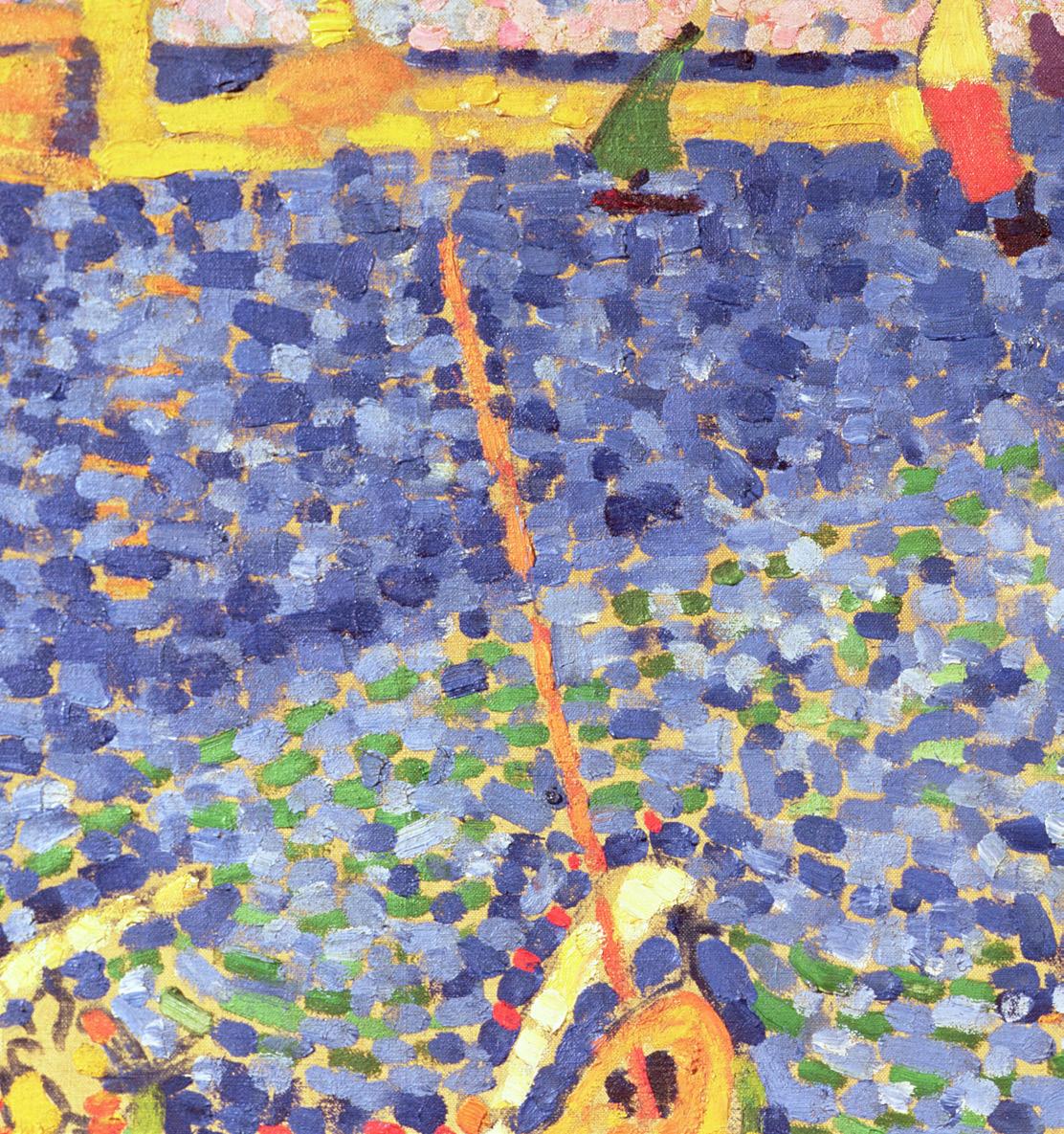
March 28, 2025 | 1900 Building

Leonkoro String Quartet
Jonathan Schwarz, violin
Amelie Wallner, violin
Mayu Konoe, viola
Lukas Schwarz, cello
Joseph HAYDN (1732-1809)
String Quartet in F major, Op. 50 no. 5 “The Dream” (1787)
Allegro moderato
Poco adagio
Tempo di Minuetto: Allegretto
Finale: Vivace
Alban BERG (1885-1935)
Lyric Suite for String Quartet (1925-26)
Allegretto gioviale
Andante amoroso
Allegro misterioso
Adagio appassionato
Presto delirando
Largo deolato
Caroline SHAW (b.1982)
Entr’acte for String Quartet (2011)
Felix MENDELSSOHN (1809-1847)
String Quartet in E minor, Op. 44 no. 2 (1837-38)
Allegro assai appassionato
Scherzo: Allegro di molto
Andante
Presto agitato - intermission -
The Friends of Chamber Music is grateful for the generous support of our Concert Underwriter, Dr. Irene Bettinger
Franz Josef HAYDN
String Quartet No. 40 in F major, Op. 50 no. 5 “The Dream”
Composed: 1787 Duration: 18 minutes
Haydn’s publisher Artaria had first proposed the idea of a new set of quartets as early as 1784, but Haydn only started composing them in 1787, after completing his six “Paris” Symphonies, Nos. 82-87. The resulting Op. 50 Quartets – Haydn’s first set of quartets since the very successful Op. 33 of six years earlier – was dedicated to King Frederick William II of Prussia, a music lover and amateur cellist (and nephew of Frederick the Great, from whom he had inherited the throne), hence the collection’s nickname of “Prussian” Quartets. Haydn had sent the King the scores of his “Paris” Symphonies, and, pleased with the works, the King had sent back a letter of congratulations as well as a gold ring “as a sign of our royal satisfaction.” Haydn responded in turn by dedicating his new quartets to the King.
In an unusual time signature of 2/4, the first movement of the F major Quartet opens with a playful skipping theme, a duet for the two violins, with some virtuoso passages for the first violin added for extra color. The brief development section includes some surprising, and occasionally humorous, forays into new keys, as well as fast-paced phrases and exchanges between the four instruments. The first violin sings over the slowly floating chords, colored by occasional dissonances, of the other three instrumentalists in the slow second movement. The quiet, hymnlike nature of the music gives the work its nickname “Der Traum,” or “The Dream.”
The graceful Tempo di Menuetto once again sees the first violin taking much of the melodic lead. Some surprising harmonic moves mark the movement’s central section, based on a minor key variant of the movement’s opening theme. There is a rustic, outdoorsy quality to the main theme of the propulsive fourth movement, a rondo in 6/8 time with contrasting episodes that once again highlight the first violin, and similarly virtuoso contributions from the other instruments as well. Note Haydn’s use of una corda effects, rising phrases played on a single string.
Alban BERG
Lyric Suite
Composed: 1925-26 Duration: 30 minutes
Alban Berg was something of a musical late bloomer. Initially more interested in literature, he only started to compose at age fifteen, and had almost no formal training before extensive private studies with Arnold Schoenberg (whose Verklärte Nacht we heard earlier this season) between 1904 and 1911. A few of Berg’s works were performed publicly, and he had just started to make a name for himself before serving from 1915 to 1918 in the Austro-Hungarian Army’s War Ministry during World War I. After the war, he returned to his home town of Vienna, where he taught, composed, and helped create the influential Soci-
ety for Private Musical Performances, a forum for performances of new music. He experienced his first major musical success with the opera Wozzeck (1924). However, with the rise of the Nazis, Berg found that musical opportunities disappeared, due to the modernism of his own music and because of his association with Schoenberg, who was Jewish. Living largely in seclusion in his last years, Berg completed his Violin Concerto as well as much of a second opera, Lulu, before his death from blood poisoning.
Arnold Schoenberg had begun composing using his twelve-tone system, in which each of the notes of the chromatic scale has equal value, in 1925. Berg soon followed his lead with the Chamber Concerto of that same year, and then the Lyric Suite. Publicly, the Lyric Suite is dedicated to Berg’s friend, composer-conductor Alexander von Zemlinsky. However, the work also possesses what might be called a “secret” dedication and program. Like Verklärte Nacht, the Lyric Suite has a deeply emotional story at its core. But in Berg’s case, it was not supposed to be publicly known.
While on a trip to Prague, Berg stayed at the home of Herbert Fuchs-Robettin and his wife Hanna. Berg developed an intense infatuation with Hanna, the sister of the playwright, novelist, and poet Franz Werfel, and it was their love affair that inspired the Lyric Suite. Berg worked hard to keep the affair secret, telling his suspicious wife Helene that there was nothing going on, while simultaneously telling Hanna that Helene hadn’t voiced any concerns. Hanna’s connection with the Lyric Suite remained unknown for decades. Only in 1977 was composer George Perle, an expert in Berg’s music, directed to a copy of the work’s score, in the possession of Hanna’s daughter Dorothea, that includes Berg’s copious annotations meant solely for Hanna.
How does Hanna appear in the Lyric Suite? For one, Berg uses the motif A-B-H-F (in German notation, A-B-flat-B natural-F), which combines the initials of Alban Berg and Hanna Fuchs-Robettin. (Such spelled-out musical mottoes are not uncommon: think of the B-A-C-H motif that turns up in works by many composers, or the F-A-E and F-A-F motifs Johannes Brahms employed in his String Quartet in A minor that the Apollon Musagète Quartet played in this series in February 2024, or the “Agathe” motif in Brahms’s Sextet No. 2 heard earlier this season.) There are also references to the 23 letters of Berg’s full name and the 10 of Hanna’s – for instance, all but one of the metronome markings in the six movements are multiples of 23 or 10. Those tempos, too, provide a hint as to the shape of the music: the fast tempos get faster as the work continues, and the slow tempos slower, as the passion of first love turns to the sadness of parting.
I. Allegretto gioviale. As in Schoenberg’s system, a set of twelve different tones, first heard early in this movement from the first violin, provides the basic material of the composition. The first movement is essentially in sona-
ta-allegro form without the development, although, given how Schoenberg’s system works, the music is constantly being developed and varied. This “gioviale,” relatively extrovert music depicts the “jovial” life Berg and Fuchs-Robettin were living before they met.
II. Andante amoroso. Repeated Cs – “do” in solfège – represent Hanna’s child Dorothea, whose nickname was “DoDo.” This movement is a rondo depicting Hanna and her two children at play, and the first meeting of Hanna and Berg in a park. There’s also a short reference to the famous “Tristan” chord, even then a reference to illicit romance, from Wagner’s opera Tristan und Isolde, fading away at the end of the movement over the cello’s pizzicati
III. Allegro misterioso – Trio estatico. The A-B-H-F motif mentioned above can be heard clearly in the hushed, “misterioso” four-note phrases at the beginning of this movement. The outer A sections of this ABA form present the same music, but forwards first, then backwards. The passionate “estatico” middle B section represents Berg and Hanna professing their love for the first time.
IV. Adagio appassionato. This is essentially a love scene in which Berg quotes a melody from the Lyric Symphony by Alexander von Zemlinsky, to whom the work was dedicated – tellingly, a melody that in Zemlinsky’s work set the words “You are mine own.”
V. Presto delirando – Tenebroso. The love affair takes a darker turn. Agonized, slashing “delirando” notes and chords alternate with portentous tremolos.
VI. Largo desolato. The delirium of the previous movement turns to despair and desolation here. Hidden in this music is a setting of Charles Baudelaire’s lament De profundis clamavi (From the depths I cry out), from the collection Fleurs du Mal. Berg placed this text over the music in his annotated score for Hanna, and, while he likely didn’t expect the music actually to be sung, it has been presented that way occasionally in concert and on recordings.
Caroline SHAW
Entr’acte
Composed: 2011 Duration: 11 minutes
Along with being a Pulitzer Prize-winning composer – the youngest ever, having received the award in 2013 when she was thirty for her Partita for 8 Voices – Caroline Shaw is a violinist and singer. She got her Bachelor’s and Master’s degrees in violin performance from Rice and Yale, respectively, and still performs regularly with the American Contemporary Music Ensemble, Roomful of Teeth, and a variety of other ensembles. Her works have been performed by orchestras and ensembles all over the world, including Sō Percussion, the Brentano String Quartet, and the Brooklyn Youth Chorus. She worked with artists like Kanye West, Beyoncé, and Yo-Yo Ma, and appeared as herself in
the series Mozart in the Jungle. Her music has received multiple Grammys and other awards.
Shaw once heard the Brentano Quartet perform the String Quartet in F major, Op. 77 No. 2 by Franz Josef Haydn, and was inspired by their playing of the work’s Menuet movement to compose her Entr’acte. As she describes it, “It is structured like a minuet and trio, riffing on that classical form but taking it a little further. I love the way some music (like the minuets of Op. 77) suddenly takes you to the other side of Alice’s looking glass, in a kind of absurd, subtle, technicolor transition.” The Brentano Quartet’s premiere recording of Entr’acte appeared on their album of Shaw’s string quartet music, Orange, which won the 2020 Grammy for Best Chamber Music/Small Ensemble Performance.
String Quartet in E minor, Op. 44 No. 2
Composed: 1837-38 Duration: 28 minutes
Starting with his Octet, that remarkable masterpiece of his sixteenth year, and concluding with the stormy F minor Quartet composed in the wake of his sister Fanny’s death, Mendelssohn proved himself a master of chamber music for strings. His six string quartets emerged at different periods in his life – the Op. 12 and 13 composed when he was twenty-one, and the aforementioned F minor, Op. 80 (his last major work), written just a few months before his death. In between, Mendelssohn published his three Op. 44 quartets in 1838, at age twenty-nine. Many feel that the Op. 44 works, which Mendelssohn dedicated to the Crown Prince of Sweden, reflect the happiness of Mendelssohn’s life at that point. He had settled in Leipzig, leading the Gewandhaus Orchestra and overseeing many of the city’s musical activities. He married Cécile Jeanrenaud in 1837 – in fact, he worked on the Op. 44 quartets during their honeymoon in the Black Forest – and the first of their children, Carl, was born in February 1838.
Kai Christiansen has written that Mendelssohn’s quartets, including Op. 44, are “full of nervous, virtuosic passion, intimate romantic lyricism, sprightly dance movements and an almost neo-Baroque perpetual counterpoint.” This is certainly true of the dramatic Quartet in E minor, published as the middle work of Op. 44 but actually the first in order of composition.
In the first movement, Mendelssohn immediately launches into music marked “appassionato.” Over a restless, syncopated accompaniment is heard the rising, arching first main melody in the minor – one might note some similarity between this music and the opening of Mendelssohn’s famous Violin Concerto in the same key of E minor from a few years later. Mendelssohn moves into the major for the more relaxed second theme. These two modes, minor and major, passionate and lyrical, alternated in this music, featuring fast-paced exchanges between the four instruments.
Mendelssohn places his Scherzo second. It has the scurrying motion and high spirits of other of his scherzi, such as the famous ones in his Octet and the music for A Midsummer Night’s Dream, with perhaps an increased level of tension.
The slow third movement is sweet and vaguely sentimental, reminiscent of the melodic style of Mendelssohn’s famous Songs Without Words (some of which were played by Nikolai Lugansky in this series a few weeks ago). Long notes in the cello and steady movement in the middle voices support the soprano song of the violin. Before
long, the other instrumentalists get to share in the lyrical delicacy of feeling.
In sonata-allegro form, the finale alternates lush, full textures and more wiry, rhythmic music. While there are some soloistic excursions by the first violin, all four instruments are kept quite busy, with forceful pulse – Mendelssohn cautions the musicians “nicht schleppend,” don’t drag –and ever-evolving textures.


Leonkoro String Quartet is framed by brothers Jonathan and Lukas Schwarz on first violin and cello, while the middle voices are formed by Amelie Wallner on second violin and Mayu Konoe on viola. Leonkoro, in Esperanto: Lionheart, alludes not coincidentally to Astrid Lindgren’s children’s book about two brothers, a book that juxtaposes the grave reality of death with a large and heartfelt yearning for comfort and solace - a sentiment that string quartet repertoire addresses in several instances.
In 2022, the Leonkoro Quartet garnered a series of prestigious accolades, solidifying their place among the most celebrated ensembles of their generation. In March, they were bestowed with the highly prestigious Jürgen Ponto Foundation Music Prize, a biennial award recognizing outstanding String Quartets. Subsequently, the quartet triumphed at the International String Quartet Competition held at London’s Wigmore Hall, earning 1st prize and a collection of nine special awards, including interpretations, residencies, and concert prizes.
Continuing their triumphant journey, the quartet seized the top honours1st prize - at the Concours International de Quatuor à Bordeaux in May. Their exceptional performances not only impressed the esteemed jury but also captivated the audience, resulting in the quartet receiving both the Audience Prize and the Young Audience Prize. Shortly thereafter, they were invited to join the BBC Radio 3 New Generation Artists program, where they will participate from 2022 to 2024.
November 2022 witnessed yet another remarkable achievement for the quartet when they were bestowed with the MERITO String Quartet Award. Unlike conventional competitions, this award recognizes selected quartets over a year, as they are observed by a panel of renowned String Quartet musicians. The Leonkoro Quartet’s exceptional musicianship and talent were duly acknowledged, and they will be supported by the MERITO String Instrument
Leonkoro
Trust for four years including a composition commission.
The series of accolades continues this Spring: In March 2024, the Leonkoro Quartet received the Young Talent Award of the Concertgebouw Amsterdam, the starting point for a long-standing relationship. A week after followed the announcement as Borletti-Buitoni Trust award winners, a great honor and a wonderful support for the quartet and its work.
Alongside their academic pursuits in chamber music under the tutelage of Heime Müller (Artemis Quartet) at the Musikhochschule Lübeck, the quartet has been studying with Günter Pichler (Primarius Alban Berg Quartet) at the Chamber Music Institute of the Escuela Superior de Música Reina Sofía Madrid since 2020. Notable mentors of the ensemble include Eckart Runge and Gregor Sigl (Artemis Quartet), as well as pianist Alfred Brendel, with whom the Leonkoro Quartet maintains a regular collaboration.
In fall 2023, Mirare released the ensemble’s first album featuring Maurice Ravel’s String Quartet and Robert Schumann’s String Quartet Op. 41 No. 3, which was crowned with the Choc de Classica l’année 2023 just a few weeks later.
In Spring 2024 the Leonkoro Quartet and the prestigious record label Alpha Classics will launch a long-term partnership.
In the 2023/2024 season, the Leonkoro Quartet will make debuts at the Berlin Philharmonie, the Kölner Philharmonie, the Flagey Brussels, the Concertgebouw Amsterdam and the Konzerthaus Wien, to name a few, and will take the musicians to renowned festivals such as the Rheingau Music Festival, the String Quartet Biennale Paris, the Heidelberg Fruehling. Furthermore, the quartet continues its residency in Leeds.
The Leonkoro Quartet is a Pirastro Artist and Henle App Ambassador.

“Voyage
April 25, 2025 | 1900 Bldg
Martin Beaver, violin
Ettore Causa, viola
Joseph JONGEN (1873-1953)
Suite for Viola and Piano, Op. 48 (1915)
Poème elegiaque
Finale
Dmitri Atapine, cello Hyeyeon Park, piano
Causa, Park
Maurice RAVEL (1875-1937)
Sonata for Violin and Cello (1920-22)
Allegro
Très vif
Lent
Vif, avec entrain Beaver, Atapine
Gabriel FAURÉ (1845-1924)
Quartet for Piano, Violin, Viola and Cello in G minor, Op. 45 (1885-86)
Allegro molto moderato
Allegro molto
Adagio non troppo
Allegro molto
Park, Beaver, Causa, Atapine - intermission -
The Friends of Chamber Music is grateful for the generous support of our Concert Underwriters, Jonathan and Nancy Lee Kemper
Joseph JONGEN
Suite in D major for Viola and Piano, Op. 48
Composed: 1915 Duration: 20 minutes
Composer, organist, and teacher Joseph Jongen was born in Liège. Yet another great prodigy, he was allowed to start studies at the city’s Conservatoire at the age of seven. He remained there until he was twenty-three, ultimately winning prizes in piano, organ, and fugue. In 1897, he won the Belgian Prix de Rome, and, over the next four years, he was able to visit Italy, Germany and France, studying with musicians like Richard Strauss and Vincent D’Indy. On his return to Belgium, he was appointed professor at his alma mater the Liège Conservatoire. After spending the years of World War I in England, he returned to Belgium, where he soon became a professor at the Royal Conservatory of Brussels. From 1925 until 1939, he served as director there, eventually succeeded by his brother Léon Jongen.
Jongen was a prolific composer, with 241 works with opus numbers – although, having destroyed some of his pieces, only 137 remain in his official catalog. His output includes symphonies, several concertos, songs, and many piano and organ works. Certainly his best-known work is the Symphonie concertante, Op. 81 for organ and orchestra (1926), recorded by many of the great organists of the past and present.
The viola held a special place in Jongen’s heart. He worked with two of the great violists of his day, Lionel Tertis and Maurice Vieux, both of whom inspired new compositions from Jongen. He met Tertis while in England during the war, even performing for a time in a piano quartet with him. It was for Tertis that Jongen wrote the Suite, Op. 48, originally for viola with piano (there’s also a version for viola with orchestra). As it turned out, Tertis didn’t much care for the Suite, and it was Maurice Vieux who premiered the work in Paris after the War, and to whom the work is dedicated.
The piano begins the first movement Poème elegiaque by itself with a repeating figure that evokes the tolling of a bell. This soon becomes the accompaniment of a languorous melody with a pentatonic feeling. Soon the viola joins in with a mournful theme. The pace picks up in music that sounds distinctly Impressionistic. The viola’s line gradually ascends and becomes more impassioned, then calms again. As the viola continues to sing, the tolling from the piano recurs, and the viola’s opening theme returns, this time more hesitantly.
The second movement Finale begins once again with the piano, but this time much more assertively. When the viola joins in, it is with a skipping melody of a rather serious mien. That melody stays at the forefront, as the piano part becomes quite virtuosic. A new melody, introduced by the piano, is more reflective. The music seems to move between portentous and playful for a time, with stormy piano passages that build to a climax, then calm again as
the viola returns. The music builds one further time for the work’s forceful closing moments.
Maurice RAVEL
Sonata for Violin and Cello
Composed: 1920-22 Duration: 20 minutes
Duos for violin and piano are a commonplace of classical music. But it is much more unusual to encounter duos for violin and cello, perhaps the best known of which is Maurice Ravel’s Sonata for Violin and Cello, which he dedicated to the memory of Claude Debussy. Debussy had passed away in 1918, leaving Ravel as probably the greatest and most famous of French composers of that day. So it was logical that, when a special issue of La Revue musicale was going to be dedicated to a commemoration of Debussy, Ravel would be one of the composers that would be asked to contribute to it. Along with short pieces by famed composers like Igor Stravinsky, Béla Bartók, Paul Dukas, Manuel de Falla, Albert Roussel, and Erik Satie, the issue, which appeared in December 1920, included the first movement of what eventually became the Sonata for Violin and Cello.
Always a relatively slow worker, it took Ravel nearly two years to complete the rest of the Sonata. On top of that, Ravel had recently undergone a number of trials, including the death of his mother and various health problems associated with his work as a truck driver during World War I. By this time his music, much of which is known for its lushness of sound and its innovative, often modal harmonies, was becoming much more austere. Counterpoint, too, played a much greater role in Ravel’s music of this time. One can start to hear that in works like Le tombeau de Couperin, which closes Jean-Efflam Bavouzet’s recital of all of Ravel’s piano music coming up in a couple of weeks. But these qualities become even more pronounced in the Sonata for Violin and Cello.
Of this Sonata, Ravel wrote that “the music is stripped down to the bone; the allure of harmony is rejected and increasingly there is a return of emphasis on melody.”
Much of the Sonata is based on two melodies that appear early in the flowing first movement: the first alternates between major and minor modes, and the second, which appears even more often throughout the work’s four movements, is based on the interval of the seventh. Ravel was almost certainly aware of one of the great predecessors to his work in the realm of violin-cello duos, the Duo of 1914 by Zoltán Kodály, and throughout Ravel’s Sonata, one can hear intimations of the work of Kodály and Béla Bartók.
Pizzicati, or plucked strings, announce the short, fiery second movement, and an important part of the movement is this contrast between plucked and bowed notes. The funereal tone of the Lent third movement builds to an intense, almost furious, climax, but its dark mood is energetically dispelled in the assertive finale, with its melo-
dies that are again occasionally reminiscent of Hungarian folk music. Ravel’s embrace of counterpoint is again evident in the Sonata’s final moments, where several of the work’s previous themes are woven together.
Gabriel FAURÉ
Piano Quartet No. 2 in G minor, Op. 45
Composed: 1885 Duration: 35 minutes
In the early part of his career, Fauré made his living primarily as an organist. He was writing music, mostly songs, during that time as well. Chamber music wasn’t yet a priority for him, largely due to the lack of opportunities for performance – especially within France, where opera remained king. This changed, however, in 1871, when Camille Saint-Saëns (with the help of Fauré, Cesar Franck, Jules Massenet, and others) started the Société nationale du musique (National Music Society) specifically to perform works by young French composers. Suddenly chamber music became a priority with these composers, and Fauré began to produce a succession of chamber music masterpieces. Saint-Saëns was a big influence on his student Fauré, introducing the younger man to a range of music by the likes of Wagner and Liszt, both of whom Fauré subsequently sought out and met.
Fauré had enjoyed a big success in 1880 with the premiere of the first of his two piano quartets, the Quartet No. 1 in C minor, Op. 15. That work is generally regarded as one of the masterworks of his early composing life. However, practically nothing is known about the circumstances of the composition of the Piano Quartet No. 2 in G minor, aside from the fact that it was premiered in a concert of the Société nationale du musique on January 22, 1887, with Fauré at the piano. It was published soon after, with a dedication to composer-pianist Hans von Bülow.
Its first movement begins with a bold unison string theme over rustling piano arpeggios. The mood briefly calms as the viola introduces a new theme, soon further transformed by the violin. The viola and cello introduce a new theme, marked molto tranquillamente, that leads into the

central development section, and then recurs at double speed toward the end of the movement. In the recapitulation, the main melodies are repeated, with slightly different instrumentation, leading to a coda based on the opening theme.
That energy continues to build in the short, propulsive and rather vehement second movement, in a quick 6/8 meter. A syncopated piano theme is one of the movement’s main features, along with appearances of two themes from the first movement. Another idea calms the mood a bit and provides contrast, but the “perpetuum mobile” feeling of the opening soon returns.
The slow movement is serene and graceful, with a suggestion of distant tolling bells in the piano’s opening episode (perhaps Fauré’s reminiscence of the bells he heard as a youth in the garden of his family’s home in Cadirac). The viola solo that follows hearkens back to one of the themes of the first movement. In fact, the rich sound of the viola is emphasized throughout this movement, so much so that Fauré’s student Charles Koechlin was moved to write, “the viola would have to be invented for this Adagio if it did not already exist.” The bell music returns in a mixture of bowed and pizzicato notes, and then again near the end as it becomes the piano’s accompaniment to a new cello theme. Aaron Copland wrote of this movement in 1924 that it is “a long sigh of infinite tenderness, a long moment of quiet melancholy and nostalgic charm. Its beauty is truly classic if we define classicism as ‘intensity on a background of calm.’”
The purposeful energy of the first movement returns in the closing Allegro molto, with its swirling string melodies and nimble piano writing. Once again, hints of melodies from earlier movements are heard, but in varied form. Critic Stephen Johnson writes of this music, “Passion and violence are again let loose … The relentless forward drive of this movement is quite unlike anything else in Fauré.”
Program notes by Chris Morrison

Martin Beaver was first violin of the world-renowned Tokyo String Quartet from June 2002 until its final concert in July 2013. As such, he appeared to critical and public acclaim on the major stages of the world, including Carnegie Hall, Wigmore Hall, the Berliner Philharmonie, Suntory Hall in Tokyo, and the Sydney Opera House.
As a member of the Tokyo String Quartet, Mr. Beaver was privileged to perform on the 1727 Stradivarius violin from the “Paganini Quartet” set of instruments, on generous loan to the quartet from the Nippon Music Foundation. Recordings of the Tokyo String Quartet during his tenure notably include the complete Beethoven quartets on the Harmonia Mundi label.
Mr. Beaver is a regular guest at prominent festivals in North America and abroad. Among these are the Seattle Chamber Music Festival, La Jolla SummerFest, the Santa Fe Chamber Music Festival, Chamber Music Northwest, the Norfolk Chamber Music Festival, the Edinburgh International Festival, and Pacific Music Festival in Japan.
Mr. Beaver’s discography includes concertos, sonatas, and chamber music on the Harmonia Mundi, Biddulph, Naim Audio, René Gailly, Musica Viva, SM5000, and Naxos labels. His recorded repertoire ranges from Bach, Beethoven, and Brahms to the music of living composers Alexina Louie and Joan Tower.
Following his early studies with Claude Letourneau and Carlisle Wilson, Mr. Beaver was a pupil of Victor Danchenko, Josef Gingold, and Henryk Szeryng. He is a laureate of the Queen Elisabeth Competition in Belgium, the 1990 International Violin Competition of Indianapolis, and the 1991 Montreal International Music Competition. Subsequently, he has served on the juries of major international competitions, including the 2009 Queen Elisabeth and 2010 Montreal competitions, the 2014 Osaka International Chamber Music Competition, and the 2015 Melbourne International Chamber Music Competition.

Described as a cellist whose “playing is highly impressive throughout” (The Strad), Dmitri Atapine has appeared at leading venues such as Alice Tully Hall, Zankel and Weill Halls at Carnegie Hall, Chicago Cultural Center, and the National Auditorium of Spain. He regularly preforms with The Chamber Music Society of Lincoln Center and is a frequent guest at festivals including Music@Menlo, Chamber Music Northwest, La Musica Sarasota, Cactus Pear, Pacific Music Festival, Aldeburgh, and Aix-en-Provence.
Mr. Atapine’s many awards include top prizes at the Carlos Prieto International Cello, and the Premio Vittorio Gui chamber competitions. His recent engagements included collaborations with such distinguished musicians as Cho-Liang Lin, Paul Neubauer, David Finckel, Ani and Ida Kavafian, Wu Han, Bruno Giuranna, David Shifrin, the Emerson, St. Lawrence and Miró quartets. Mr. Atapine’s recordings, including a world-premiere of works by Lowell Liebermann, can be found on the Naxos, Albany, Urtext Digital, BlueGriffin and Bridge record labels.
Mr. Atapine holds several directorships, among them Friends of Chamber Music Kansas City, Apex Concerts, Young Performers at Music@Menlo and Ribadesella Festival. Cello professor at the University of Nevada, Reno, Mr. Atapine holds a doctorate from the Yale School of Music where he was a student of Aldo Parisot.
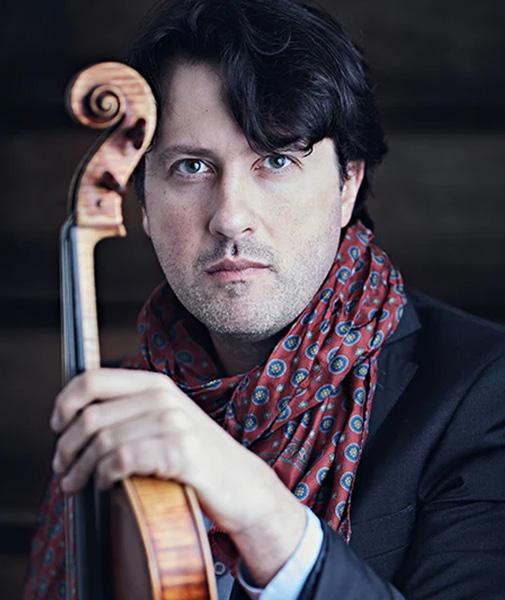
Italian-born violist Ettore Causa is celebrated for his exceptional artistry, passionate intelligence and complete musicianship. In 2000, Causa was awarded both the P. Schidlof Prize and the J. Barbirolli Prize for “the most beautiful sound” at the prestigious Lionel Tertis International Viola competition in England. Ettore has appeared as soloist and in recital at major venues around the world such as Carnegie Hall, Zurich Tonhalle, Madrid National Auditorium, Salle Cortot, Tokyo Symphony Hall and Teatro Colon. He performs regularly at international festivals including the Menuhin, Salzburg, Tivoli, Prussia Cove, Savonlinna, Launadire and Norfolk Chamber Music Festivals.
As a devoted chamber musician, Mr. Causa actively collaborates with internationally-renowned musicians including the Tokyo, Artis, Brentano, Cremona and Elias String Quartets, as well as with esteemed artists such as Pascal Rogé, Boris Berman, Peter Frankl, Thomas Ades, Natalie Clein, Ana Chumachenco, Ani Kavafian, Alberto and Antonio Lysy, Liviu Prunaru, Thomas Demenga, Ulf Wallin, and William Bennett, among others.
Causa’s collection of highly-praised recordings includes several produced by Claves Records. Ettore’s distinguished recording of Romantic Transcriptions for Viola and Piano feature his work as both transcriber and performer, and was awarded a coveted “5 Diapasons” by the French magazine.
In 2016, Causa was invited as a guest of honor at the 43rd International Viola Congress held in Cremona, Italy, where he performed with enormous accolades his own arrangement of the Schumann cello concerto.

Described as “a pianist with power, precision, and tremendous glee” (Gramophone Magazine) and praised for her “very sensitive” (Washington Post) and “highly nuanced” (Lucid Culture) playing, Hyeyeon Park has appeared as a soloist and chamber musician on major concert stages throughout the United States, Canada, Mexico, Germany, Austria, Italy, Spain, Japan and her native Korea. An avid chamber musician, Park has collaborated with such musicians as
David Shifrin, Ani Kavafian, Ida Kavafian, Paul Neubauer and many others appearing frequently at Yellow Barn Festival (Vermont), Santander Music Festival (Spain), Great Mountains Festival (Korea), Music@Menlo Festival (California),and Chamber Music Northwest (Oregon).
Park holds a bachelor’s of music degree at Korea National University with Professor Daejin Kim, master of music degree and artist diploma from Yale School of Music with Professor Peter Frankl, where she was a post-graduate artist associate following her graduation. She holds the doctor of musical arts degree from Peabody Conservatory with Professor Yong Hi Moon. Park has been recently appointed as co-director of Friends of Chamber Music Kansas City, and already serves as the co-director of Young Performers Program at Music@Menlo Chamber Music Festival and Institute. She is the associate professor of piano at the University of Nevada, Reno, where she also is the artistic director of the Apex Concerts.




May 9, 2025 | The Folly Theater
Maurice RAVEL (1875-1937)
Sérénade grotesque (1893)
Menuet antique (1895)
Pavane pour une infante défunte (1899)
Jeux d’eau (1901)
Sonatine (1903-05)
Modéré
Mouvement de Menuet
Animé
Miroirs (1904-05)
Noctuelles
Oiseaux tristes
Une Barque sur l’océan
Alborada del gracioso
La Vallée des cloches
Gaspard de la nuit (1908)
Ondine
Le gibet
Scarbo
Valses nobles et sentimentales (1911)
Modéré – très franc
Assez lent – avec une expression intense
Modéré
Assez animé
Presque lent – dans un sentiment intime
Vif
Moins vif
Épilogue: lent
Toccata. Vif - first intermission- second intermission -
Menuet sur le nom de Haydn (1909)
À la manière de Chabrier (1912-13)
À la manière de Borodine (1912-13)
Prélude (1913)
Le tombeau de Couperin (1914-17)
Prélude. Vif
Fugue. Allegro moderato
Forlane. Allegretto
Rigaudon. Assez vif
Menuet. Allegro moderato
The Friends of Chamber Music is grateful for the generous support of our Concert Underwriter, Sanders and Blanche Sosland Music Fund
Maurice RAVEL (1875-1937)
Sérénade grotesque
Composed: 1893 Duration: 4 minutes
While a student at the Paris Conservatoire, Maurice Ravel wrote the earliest of his piano works to survive, the Sérénade grotesque. Ravel had initially called it simply Sérénade, but later added the descriptive adjective, which suits this unusual piece, with its fast staccato patterns, percussive chords, and a lyrical section marked tres sentimental. One might hear premonitions in this short work of the Scarbo movement from the later Gaspard de la nuit.
Menuet antique
Composed: 1895 Duration: 6 minutes
Ravel’s Menuet antique, his first published composition, is a tribute to composer Emmanuel Chabrier, who had given Ravel important early support. Ravel’s friend Ricardo Viñes, whom he had met in 1888 and who became an important interpreter of his works, premiered the Menuet in 1898. The Menuet is in ABA ternary form, the lively, syncopated A sections, marked Majestueusement (majestic), framing a stately central section marked Doux (sweet).
Pavane pour une infante défunte
Composed: 1899 Duration: 7 minutes
Ravel, a distracted student, was expelled from the Paris Conservatoire in 1895, but returned two years later. It was during his second term that he wrote his popular Pavane pour une infante défunte. The pavane was a slow processional dance frequently encountered in the European courts of the Renaissance, and Ravel described his work as “an evocation of a pavane that a little princess might, in former times, have danced at the Spanish court.” Ravel dedicated the Pavane to his friend and patron, the Princesse de Polignac, and probably played the piece at her home. But the work really caught on when it received its first public performance by Ricardo Viñes in 1902.
Jeux d’eau
Composed: 1901 Duration: 6 minutes
As Ravel’s music started to be heard more frequently, he was lumped in by many with Impressionists like Claude Debussy, whose music Ravel loved but felt was quite different from his own. One of Ravel’s works that attracted the Impressionism label was Jeux d’eau, dedicated to his teacher Gabriel Fauré and given its first performance by Ravel. The title translates as “Playing Water” or “Water Games,” and evokes the play of water through its fast, shimmering cascades of notes.
Sonatine
Composed: 1903-5 Duration: 11 minutes
Ravel wrote the first movement of the Sonatine in 1903 for a competition sponsored by the Weekly Critical Review magazine. Ravel proved to be the only entrant, and, as the publication was on the verge of bankruptcy, the contest was canceled. But Ravel returned to that movement and added a second and third two years later. He often performed the first two movements in concert (he never played the third, feeling that his piano technique wasn’t up to the challenge).
As Timothy Judd has written, “This worldly commission inspired music of elegant simplicity, crystalline classicism, and ethereal beauty.” The first movement is in a brief sonata form, with two main themes, one of which appears in the other two movements. The second movement is a minuet, slow and elegant, but with moments of increased tension. Inspired by the keyboard music of the French Baroque, the final movement is a brilliant Toccata that alternates between 3/4 and 5/4 time.
Miroirs
Composed: 1904 Duration: 28 minutes
Around 1900, Ravel, Ricardo Viñes, and several of their artist and intellectual friends formed an informal coalition of self-styled outcasts called Les Apaches (The Hooligans). The group inspired one of Ravel’s most ambitious piano works, the suite Miroirs. First performed by Viñes in 1906, the five movements of Miroirs are each dedicated to a member of Les Apaches.
The opening Noctuelles (Night Moths) is dedicated to LéonPaul Fargue, and evokes the nighttime mood through flickering movement and chromatic, dissonant harmonies, with a middle section dominated by tranquil chords. Oiseaux tristes (Sad Birds), said to be Ravel’s favorite in the set, is dedicated to Viñes. Ravel wrote that he wished to evoke “birds lost in the torpor of a somber forest, during the most torrid hours of summertime.”
Une barque sur l’océan (A Boat on the Ocean), dedicated to Paul Sordes, portrays a boat sailing on the waves through arpeggios and long, sweeping melodies as the waves grow in power. Along with the Pavane pour une infante défunte one of Ravel’s earliest attempts at writing “Spanish” music, Alborada del gracioso (Morning Song of the Jester) was dedicated to critic Michel-Dimitri Calvocoressi. An alborada can be many things, from a Galician folk tune to a song for a wedding day. In the Middle Ages, troubadours wrote songs called albas, the lament of two lovers forced to part as the sun comes up. A gracioso was a comedic figure, sometimes a comic lover or servant that provides humorous comments. In Ravel’s work, a challenging one for the pianist, lively dance music, in which a strumming guitar is suggested, frames a songlike central section.
The closing movement, La vallée des cloches (The Valley of Bells), is dedicated to Maurice Delage, Ravel’s only pupil. True to its title, it evokes the tolling of bells. Ravel said that the closing chords in the bass were the sound of the big bell in the Basilica of Montmartre in Paris.
Gaspard de la nuit
Composed: 1908 Duration: 22 minutes
Quicksilver appears by exclusive arrangement with Summerell Arts
Each of the three movements of Gaspard de la nuit, one of Ravel’s greatest piano works, is based on a poem from Aloysius Bertrand’s Gaspard de la nuit – Fantaisies à la manière de Rembrandt et de Callot (1836), a collection of writings and drawings depicting imps, trolls, and nightmares. The word “Gaspard” comes from a Persian word meaning something like “the man in charge of the royal treasures.” Bertrand added to the mystery by saying that his poems came from
a book lent him by a strange old man he met in a park in Dijon. When he went back to the park to return the book, he was told that the man, whom he called M. Gaspard, “is in hell, provided that he isn’t somewhere else.” In other words, M. Gaspard was “Ah! Yes … the devil!” Ravel’s suite was given its first performance by Ricardo Viñes on January 9, 1909.
The first movement, Ondine, tells of the water nymph, sometimes called Undine, who seduces unsuspecting victims with her song to visit her kingdom at the bottom of a lake. One can hear the ebb and flow of the water in Ravel’s elaborate piano writing (depictions of water, of course, were a mainstay in the compositions of composers like Ravel and Claude Debussy – see Jeux d’eau from earlier in this concert).
We move to the desert in the second piece, Le Gibet. Bertrand’s poem is a vision of a hanged man on the aforementioned gibbet, set against the background of the setting sun, as a bell tolls in a distant city. That tolling bell, a repeated B-flat in octaves, is heard throughout Ravel’s piece.
With the third movement, Scarbo, Ravel, apparently a fine but not great pianist, set himself the challenge to write a piece even more complex than Mily Balakirev’s legendarily difficult Islamey. Ravel described the result as “a caricature of romanticism.” The music depicts a little goblin, flitting about in the blackness of night, twisting about and bouncing against walls, creating a nightmare vision for a man watching the ghoul from his bed.
Menuet sur le nom d’Haydn Composed: 1909 Duration: 2 minutes
1909 marked the one hundredth anniversary of the death of Franz Josef Haydn. Six composers, including Ravel and Debussy, were asked by the Revue musicale mensuelle de la Société Internationale de Musique to write a short piece honoring the great Classical composer. Ravel’s contribution was this charming Menuet. Once again, as with Alban Berg’s Lyric Suite from earlier this season, we see a composer turning words into notes – here, a theme based on Haydn’s name, H (B natural)-A-Y (D natural)-D-N (G natural)
Valses nobles et sentimentales
Composed: 1911 Duration: 16 minutes
As Ravel’s piano, chamber, and orchestral works were becoming increasingly known, he turned to music for the stage. His first opera, L’heure espagnole, premiered in 1911. The following year, Ravel had three ballets premiered, all of which became famous: Daphnis et Chloé (1909-11), Ma mère l’Oye (Mother Goose, 1910), and Adélaïde ou le langage des fleurs, danced to the score of Valses nobles et sentimentales. Ravel had become fascinated with dance music, and his Valses reflect that while also paying homage to one of Ravel’s favorite composers, Franz Schubert, who had composed his own collections of Valses nobles and Valses sentimentales in the 1820s. Perhaps giving a clue as to the character of the music, the published score of Ravel’s work includes a quotation from a novel by Henri de Régnier: “…le plaisir délicieux et toujours nouveau d’une occupation inutile” (the delicious and forever-new pleasure of a useless occupation). The Vals-
es nobles et sentimentales were first performed on May 9, 1911 by pianist Louis Aubert, to whom the work is dedicated. Ravel’s set includes seven waltzes and an epilogue which flow together. The dances are contrasted in tempo and dynamics as well as mood – the “noble” first, for instance, with its edgy harmonies, or the “sentimental,” delicate second and fifth. Unusually for the waltz form, Ravel includes a degree of dissonance in his work, and some jazzy harmonic touches. The melancholy epilogue contains references to some of the preceding melodies, as though heard in a dream.
À la manière de Chabrier
Composed: 1912-13 Duration: 2 minutes
À la manière de Borodine
Composed: 1912-13 Duration: 2 minutes
Composed: 1913 Duration: 2 minutes
In 1912, Ravel was asked by composer-pianist Alfredo Casella to contribute to a volume of musical tributes written in the style of earlier composers. Ravel produced two short pieces. À la manière de Chabrier pays tribute, as did his earlier Menuet antique, to composer Emmanuel Chabrier, who had been supportive of Ravel and his music. However, Ravel turns to a different French composer, Charles Gounod, for the melody that is the basis of his piece, a waltz-like melody from Act 2 of Gounod’s opera Faust. À la manière de Borodine is also a waltz, paying tribute to Alexander Borodin, the Russian composer whose Symphony No. 2 provided the melody that became the rallying song for Ravel’s group Les Apaches.
Ravel produced one other little piano work during 1913. The Paris Conservatoire asked him for a piece to be used as a sight-reading test at a youth competition. Ravel gave them the Prélude, a two-page exercise that includes some tricky hand crossings for the competitors. Ravel dedicated his Prélude to the competition’s winner, nine-year-old Jeanne Leleu, who went on to have a successful career as a pianist, teacher, and composer.
Le tombeau de Couperin
Composed: 1914-17 Duration: 26 minutes
When Germany invaded France in 1914 and World War I began, Ravel tried to join the French Air Force. But he was thirty-nine years old and had always been of a frail constitution, and his application was rejected. So he volunteered as an ambulance driver and nurse’s aide. His truck, which he nicknamed Adélaïde, was frequently under fire, and Ravel’s health suffered even more. His mother’s death in early 1917 was a further blow. Eventually he broke down, and was given his release by the military. At the family home of Jean Dreyfus, to whom the work’s Menuet movement is dedicated, Ravel completed Le tombeau de Couperin
The tombeau (tomb), a piece of music, or sometimes a poem or group of poems, written as a memorial, was commonplace in the seventeenth century. Many French composers of the time wrote such pieces, usually for harpsichord or lute. Ravel’s original intent with Le tombeau de Couperin – probably referring to François Couperin (1668-1733) – was to pay tribute to those composers of the past, in a work structured
like a Baroque dance suite. But Ravel also memorialized with each of the work’s movements a friend killed during the war.
In the fleet, graceful Prélude, written in memory of First Lieutenant Jacques Charlot, an arranger of some of Ravel’s music, sixteenth notes grouped in triplets rush by in an insouciant manner. The second movement Fugue, delicate, stately, and wistful, is dedicated to the memory of Second Lieutenant Jean Cruppi. Memorializing First Lieutenant Gabriel Deluc, a Basque painter, the Forlane is lively and graceful, tinged with melancholy and colorful dissonances.
Lively and full of surprises, the Rigaudon – composed in memory of Pierre and Pascal Gaudin, brothers and childhood friends of Ravel’s who were killed by the same shell on their
first day at the front in 1914 – is colored by bright outbursts, a gentle central section that calls to mind the strumming of a guitar, and an exuberant conclusion. As mentioned above, the calm, beautiful Menuet was written in memory of Jean Dreyfus. Ravel was particularly pleased with this movement; it was the music sitting on his music stand at home when he died in 1937. The suite concludes with a virtuoso Toccata, playful and full of nervous energy. It was composed in memory of Captain Joseph de Marliave, a musicologist and the husband of pianist Marguerite Long, a close collaborator of Ravel’s who premiered Le tombeau on April 11, 1919 in Paris.
Program notes by Chris Morrison
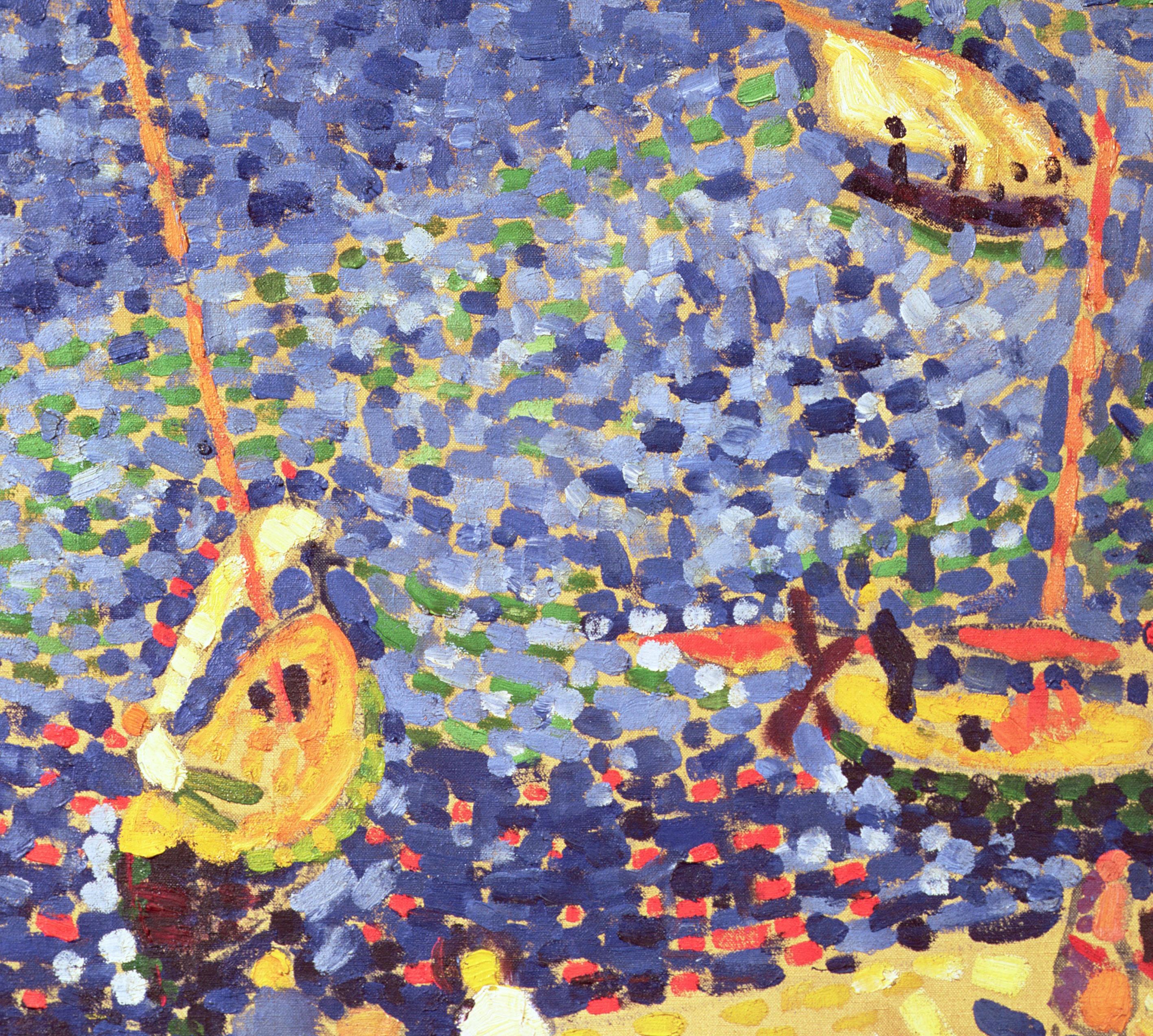
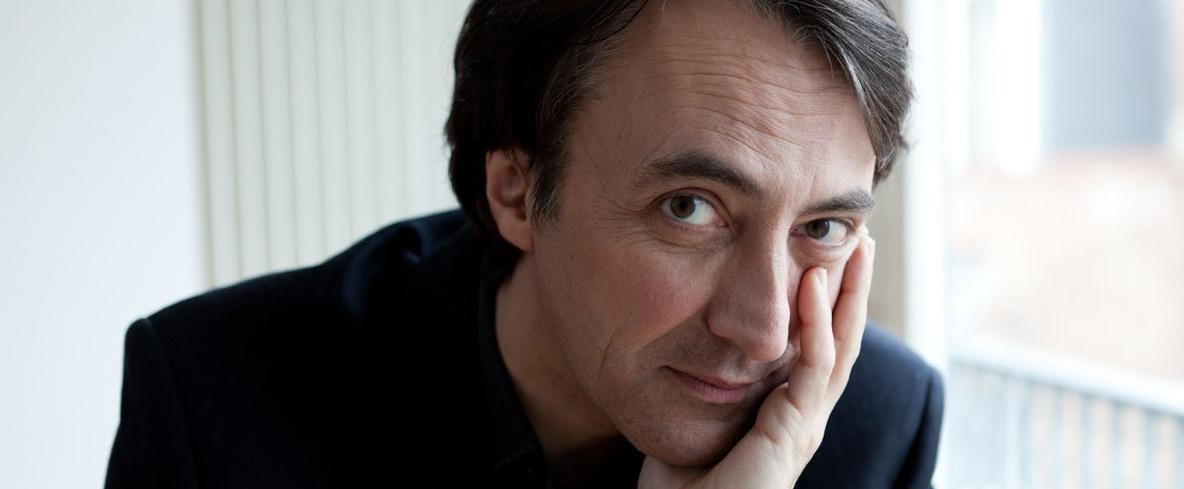
He makes you listen to music as if you are discovering it Eureka!-style: yes, that’s what the composer must have meant. (Financial Times).
Award-winning pianist Jean-Efflam Bavouzet enjoys a prolific recording and international concert career. He regularly works with the Cleveland Orchestra, San Francisco Symphony, BBC Symphony and London Philharmonic orchestras, Budapest Festival Orchestra, NHK, Seoul Philharmonic, Taiwan Philharmonic and collaborates with many renowned conductors including Vladimir Jurowski, Gianandrea Noseda, Vladimir Ashkenazy, Neeme Järvi, Daniele Gatti, François-Xavier Roth, Ivan Fischer, Vasily Petrenko, Domingo Hindoyan, Pablo Heras Casado, Michele Spotti, Marko Letonja, Ludovic Morlot, Edward Gardner, Nicholas Collon, Louis Langrée, Kazuko Yamada, Pierre Bleuse, Pietari Inkinen, Sir Andrew Davis, Lawrence Foster, Leonard Slatkin, amongst others.
Engagements during the 2023/24 season include a Chinese tour with the Philharmonia Orchestra and Lan Shui, Les Siècles with Renaud Capuçon under the direction of Francois Xavier-Roth, performing both Ravel concerto with the Lähti Symphony Orchestra and Dalia Stasevska, the National Polish Radio Symphony Orchestra conducted by Leonard Slatkin, as well as Kyoto Symphony Orchestra under Junichi Hirokami with Bartok’s fiendish second piano concerto. He also appears with the Manchester Camerata at the
Enescu Festival in Romania with Gábor Takacs-Nagy and with the Karol Szymanowski Filharmonia in Kraków, under the baton of Antoni Wit.
In recital, Bavouzet continues his three-year residency at the Wigmore Hall, titled ‘Autour de Debussy’, which includes solo recitals and chamber appearances with Steven Isserlis, Quatuor Danel and the Orsino Ensemble among others. His solo recital at Wigmore Hall in February shall consist of a unique pairing of Debussy, Liszt and Massenet, a programme which he shall also be taking to Sage Gateshead, SJE Oxford and Hamamatsu in Japan. Other recitals include a Rachmaninov-centred two-piano performance with the Chamber Music Society at New York’s Lincoln Centre.
Bavouzet has worked closely with Sir Georg Solti, Pierre Boulez, Vladimir Ashkenazy, Karlheinz Stockhausen, Zoltan Kocsis, György Kurtág, Maurice Ohana, Bruno Mantovani and Jörg Widmann and is also a champion of lesser-known French music, notably that of Gabriel Pierné and Albéric Magnard. He is the International Chair in Piano at the Royal Northern College of Music and an Advisory Board member of the Pianofest in the Hamptons. In 2012 he was ICMA Artist of the Year and in 2008 he was awarded Beijing’s first ever Elite Prize for his Beethoven complete sonata series.
Jean-Efflam Bavouzet appears by exclusive arrangement with HarrisonParrott Group

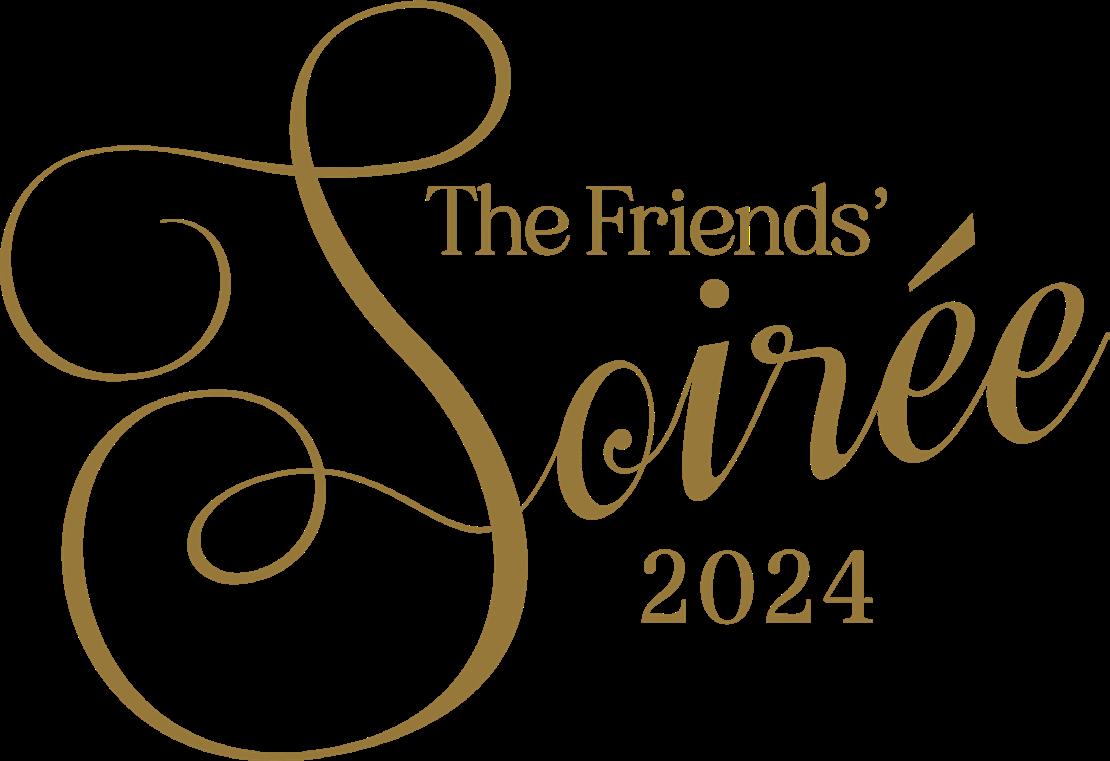
We would like to extend our sincere thanks to the supporters of the 2024 Friends of Chamber Music’s Soirée. Guests enjoyed an elegant evening surrounded by the old-world charm of the Hotel Kansas City’s Tudor Ballroom, while exploring Silent Auction offerings and dining on fine cuisine. Our Artistic Directors, Dmitri Atapine and Hyeyeon Park graced guests with their immense talent during two rousing performances throughout the evening. The audience also received a special treat from students of the Friends of Chamber Music and Heartland Young Artists’ Project, who took the stage and inspired guests to a standing ovation. Proceeds from the evening’s donations and auction will continue to provide a significant portion of the budget for our organization and programs. We are immensely grateful for your generosity and support!
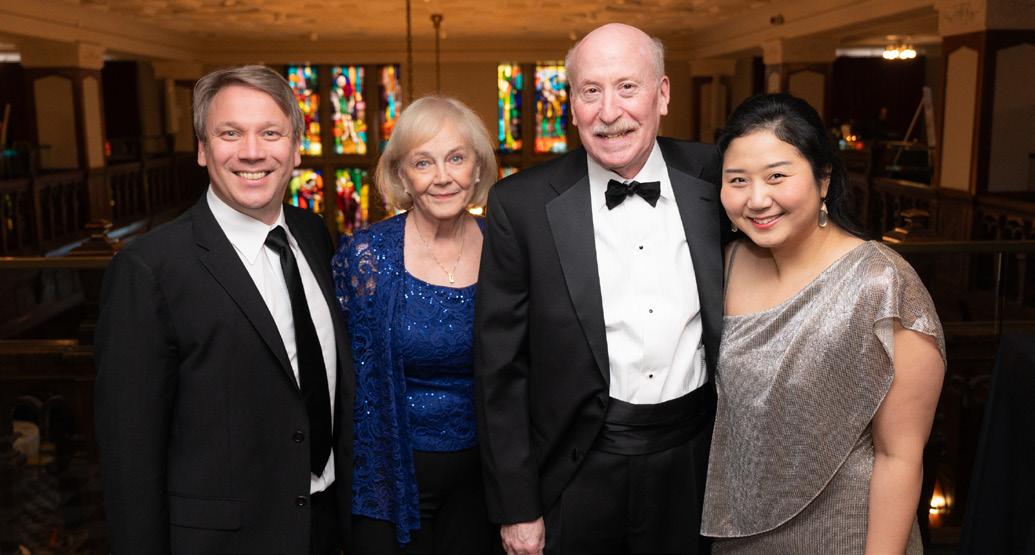


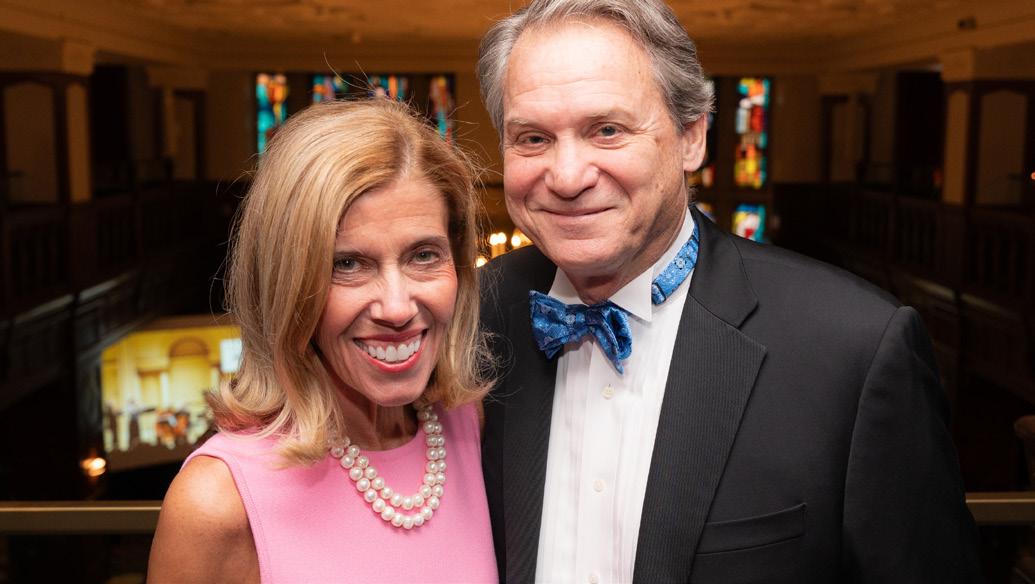

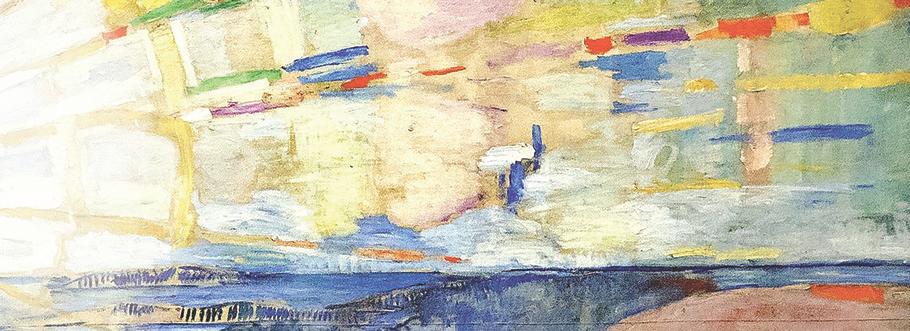

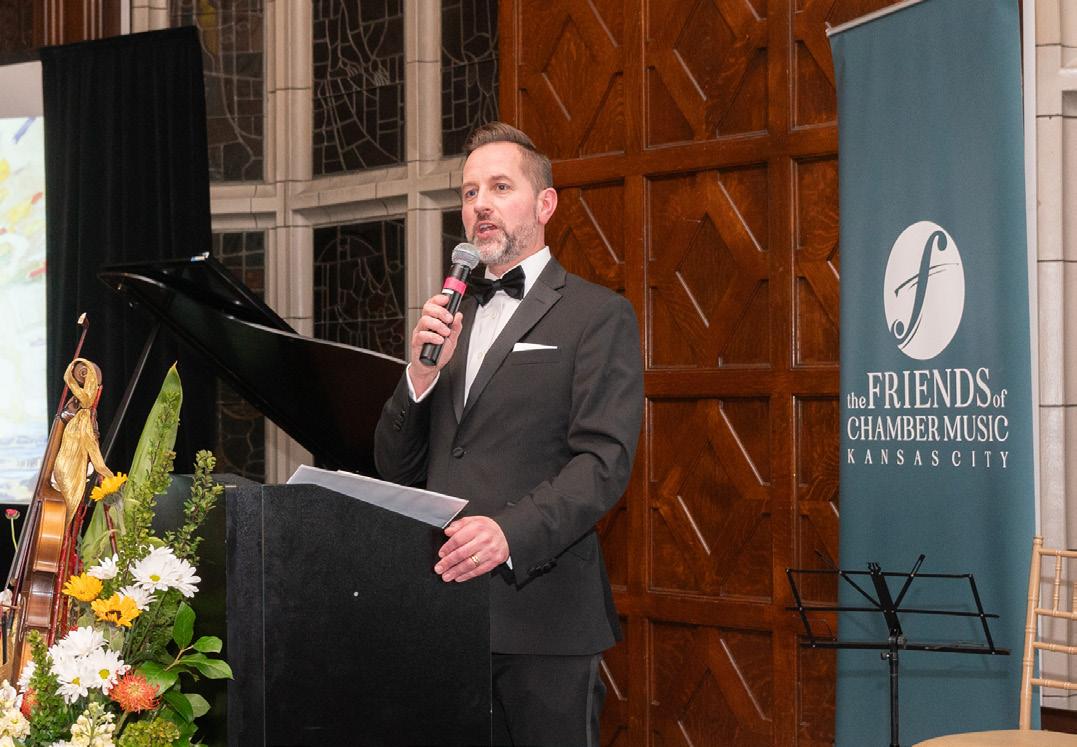

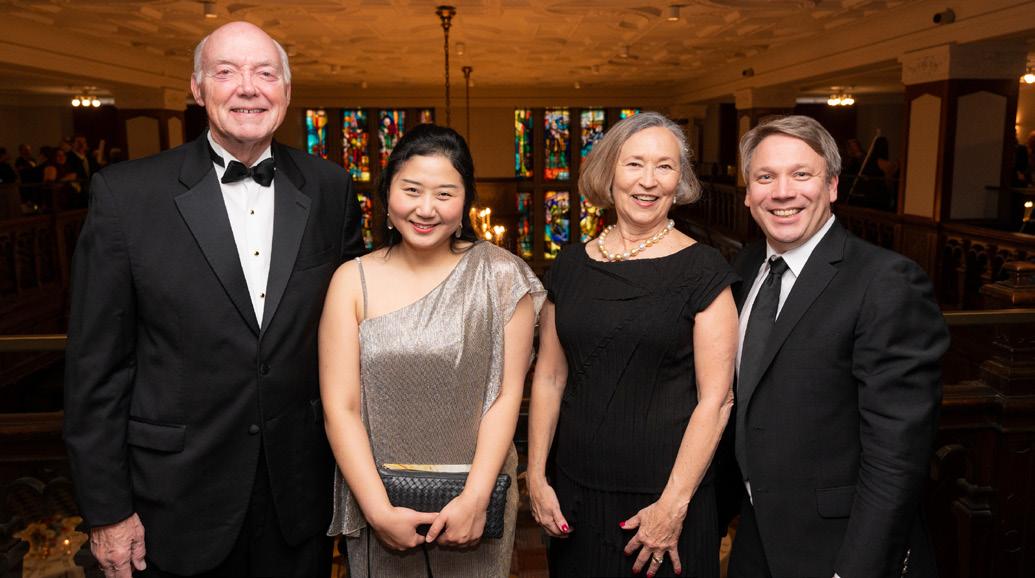
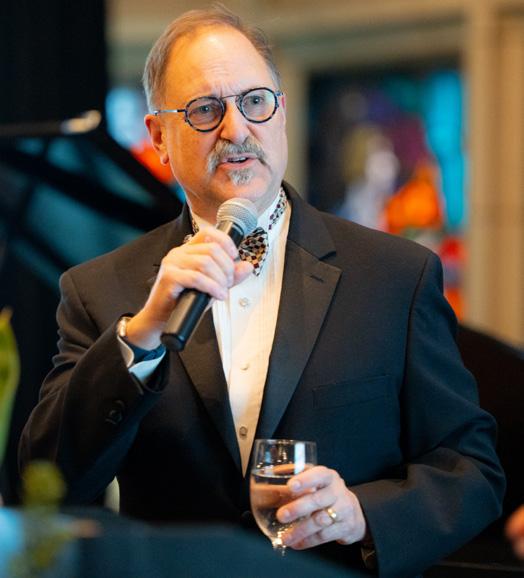



The Friends’ annual fundraising gala, Soirée 2025, will take place on:
Saturday, March 8, 2025
Join the Friends for a festive evening of sumptuous food, inspiring music, and delightful company. This year promises to take guests on a voyage to new adventures with auction items and experiences to entice the senses. You won’t want to miss this annual event celebrating the Friends of Chamber Music’s Forty-Ninth season!
Watch www.ChamberMusic.org for updates and mark your calendars!
For more information contact Janell Peterson, Director of Operations Janell@chambermusic.org (816) 561-9999
To learn more about sponsorship for this event contact Edward Sien, Director of Philanthropy Ed@chambermusic.org (816) 561-9999


Thank you for helping us share the magic of Chamber Music! Artistic excellence, commitment to creative programming and our exciting education and community initiatives need your support more than ever!
Below is a list of Donor Benefits and Opportunities. For more information on how you can be a part of our mission to share great music contact, Edward Sien, Director of Philanthropy at 816-561-9999 or Ed@ChamberMusic.org.
July 1, 2023 - June 30, 2024
The Friends of Chamber Music is grateful to acknowledge the kindness of our many contributors who have given their financial support on behalf of our concerts and educational activities. To join our esteemed partners in music please contact us by calling 816-561-9999 or email at development@chambermusic.org.
Season Sponsor ($100,000+)
William T. Kemper Foundation
Visionary Circle ($50,000+)
Stanley H. Durwood Foundation
Maestoso ($25,000+)
Dwight and Naomi Arn
Jennifer and Bud Bacon
Charles and Virginia Clark
Missouri Arts Council
Muriel McBrien Kauffman Family Foundation
Sanders and Blanche Sosland Music Fund
Harry Statland, M.D., Philanthropic Fund
Grandioso ($10,000+)
Richard and Jane Bruening
Al Mauro, Jr. and Molly Dwyer
Marilyn A.W. and Norman E. Gaar, Esq.
Hall Family Foundation
Hebenstreit Family Foundation
Irv and Ellen Hockaday
Irv and Ellen Hockaday Fund for The Friends of Chamber Music
Jay and Cindy Longbottom
J. Scott Francis, the Francis Family Foundation
Mdivani Corporate Immigration Law
Kansas City, Missouri, Neighborhood Tourist and Development Fund
Jerry & Marilyn Uppman *
Patricia Cleary Miller
Richard J. Stern Foundation for the ArtsCommerce Bank, Trustee Sosland Foundation
Glorioso ($5,000+)
Ambience Furs, Inc.
Dr. Irene E. Bettinger
Alietia Caughron
Chamber Music America
Commerce Bank
Gregory Gille
Hallmark Corporate Foundation
J.B. Reynolds Foundation
Sue Major
Marion and Henry Bloch Family Foundation
Michael and Marlys Haverty Family Foundation Fund
Jonathan and Nancy Lee Kemper
Honour Helena Miller
JoZach Miller and Peter Bali
Tom and Kathy Nanney
John Phillips
Kamal and Mary Lynn Soli Mikhail, Soli Printing, Inc.
Virtuoso ($2,500+)
Suzy and David Bradley Charitable Fund
Eric Bradley, Eric and Jo Charitable Fund
Stephanie S. Bradley Charitable Fund
Bradley, Brian and Francie Community Foundation
Paul and Bunni Copaken
Jerry Eisterhold
Doug Frost
J. David and Roxie McGee
Charles and Lisa Schellhorn
Kit and Jay Culver
KC Needlepoint LLC
John and Hilary Stroh
Joe and Carol Suhor, Suhor Family Foundation
Ron and Tricia Fredman
Amoroso ($1,000+)
Baker Sterchi Cowden & Rice LLC
Leonard and Irene Bettinger Philanthropic Fund at the Jewish Community Foundation of Greater Kansas City
Lenore and Douglas Cameron
Commerce Trust Company
Dr. Daniel S. and Anne Durrie
Anne Hershewe
Steve Karbank
Lawrence D. Starr Charitable Foundation
Dennis Marker and Susan Lordi Marker
Doris and Scott Mattingly
Medtronic Philanthropy
Meierotto Jewelers
Ann Miller
Marshall and Kathleen Kilway Miller
Muchnic Foundation
Jyoti Mukharji
Doug and Dana Nelson
Janice A. Newberry
Dr. Marc and Karen Penner Johnson
Wendy and George Powell
Ann Readey
Joshua Rowland
Dr. Michael and Eileen Schwartzman
David M Steinhaus, M.D.
White-Simchowitz Charitable Family Fund
Overture ($500+)
Dmitri Atapine and Hyeyeon Park
Susan and Russell Baker
Denny Brisley
Sandra Bowlby
Samuel Caughron, M.D.
John and Susan Crowe Foundation, in honor of Jay and Cindy Longbottom
David and Sandy Eisenberg
Michael D. Fields
Melinda Frenzen
Sherrill J. Gerschefske
Dr. Richard K. Gutknecht
Hallmark Cards Inc.
Marcia and Stephen Hill
Sharon and John Hoffman
Dallas and Mariko Ivanko
Christine Kline
Don Loncasty
Renata Mogilnicki
Montenari Fine Art Jewelers
Marti Moore
David G. Myers, MD MPH and Gay Burns *
George and Wendy Powell
David and Anne Riker Powell
Julia Scherer, MM NTCM
Scott and Karen Solcher, given in memory of Stewart Nowlin
Joshua & Jane Sosland
Philanthropic Fund
Mike and Nancy Thiessen
MaryAnne Toll
Prelude ($100+)
Aixois Kansas City
Alissa’s Flowers, Fashion & Interiors
Andre’s Confiserie Suisse
Beth and Keith Alm
Sara Anderson
Angie Atkison
Mr. and Mrs. Richard O. Ballentine
Thomas and Susan Bamford
Drs. Linda Banister and J. Quentin Kuyper
Clay and Kate Bastian, given in memory of Stewart Nowlin
Peggy Beal
Prof. Daniel J. Bernstein
Karen Bissett
Linda Blaha-Kemnitzer Design

Patty and Ron Bowen
Erin Brower
Kenneth and Jean D. Butler
Cafe Provence
Cecelia Caughron
J. Scott and Valerie McKay Chaloud Fund
Marcy Chiasson
Karen Christiansen
Claire Cover
Richard Cram
Crown Center Shops
Culinary Center of Kansas City
Don and Pat Dagenais
Katherine DeBruce
Dr. Michael DePriest
JoAnne Dondlinger
Edith Downing
Roger Dirks and Cindy Capellari
Melissa Ford
William Fossati
Elizabeth Garwood
Nathan Gorn
Bev Harris
Caroline and George Helmkamp
Matthew Heuton
Patricia Heygelin Hiatt and Roger L. Hiatt
Kim and Ted Higgins
Eileen Hohman
Channing and Louise Horner
Hulme Piano
J. Rieger & Co.
Mollie K. and Charles F. James, Jr.
Cyndi James
Victoria Kaufman and David Bluford
Dana Koehan
Arlan Koppel
Phyllis Leach
Jane Lee
Phyllis Lerman
Thomas Lucero
Evan Luskin
James D. Marshall, Jr.
Dr. Marino Martinez
Scott Martinsen
P. Alan McDermott
Jay and Symie Menitove
Virginia Miller
Dr. Ernest and Diane Neighbor
Dr. Margaret and Barry Nickell
Stewart Nowlin
Elizabeth Parks
Pear Tree Design & Antiques
Kathy Peters
Peruvian Connection - Kansas City
David and Lucy Powell
Rainy Day Books
John Rau
Scott and Kathleen Redick
Brett and Jennaya Robison
Room 39
Kevin Rooney
Janice and Mark Schonwetter
Seasons 52
Kavya Shankar
Mareta Smith
Joshua Sosland
Shirley Spiegel
Egon Stammler
Helyn Strickland
Amanda Thweatt
James Van Eman
Bruce Judd Williams
John Wise
Jeff Witsken
Mary Ann Wyrsch
David Zimmerman
* Legacy Donors

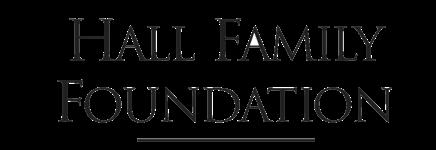

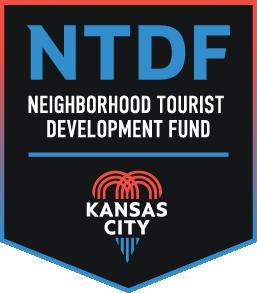


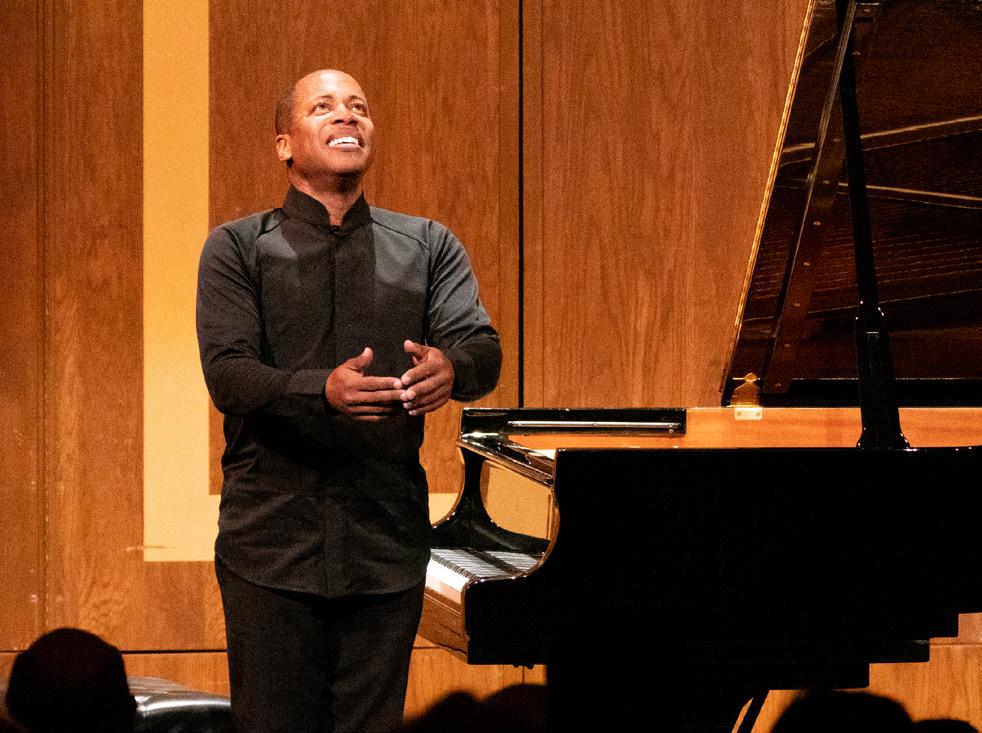

Engaging, enchanting, enthralling ...


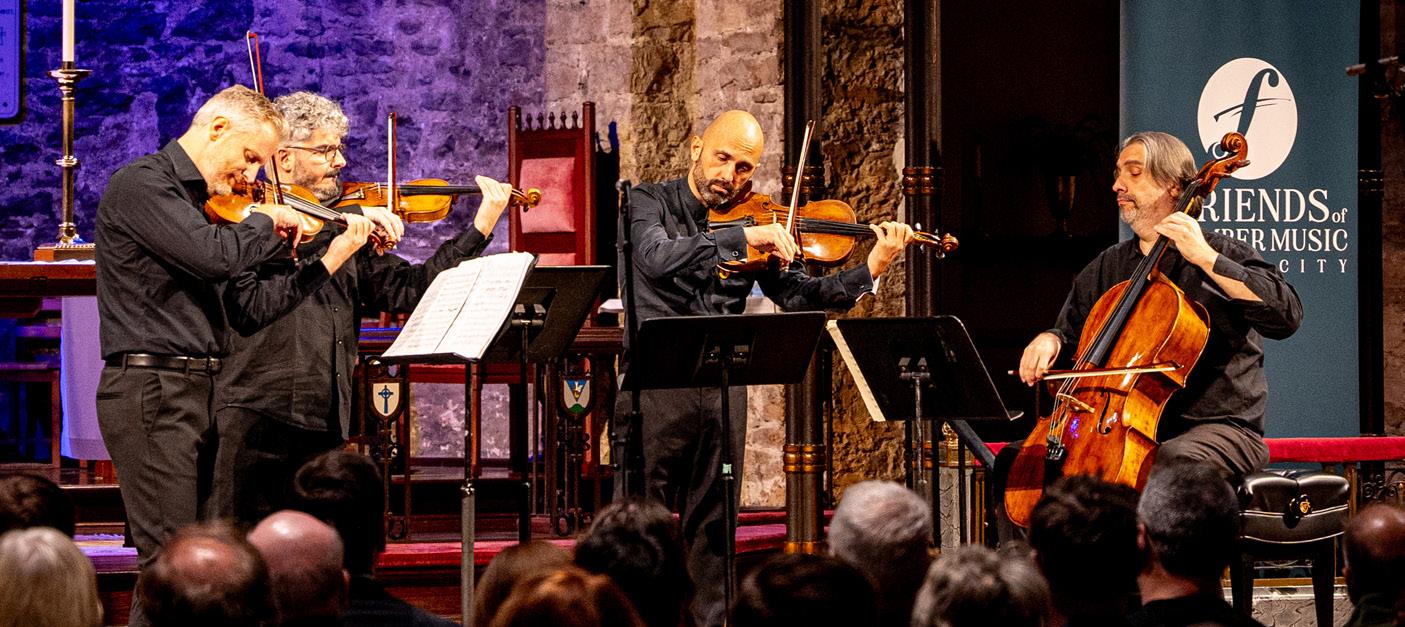

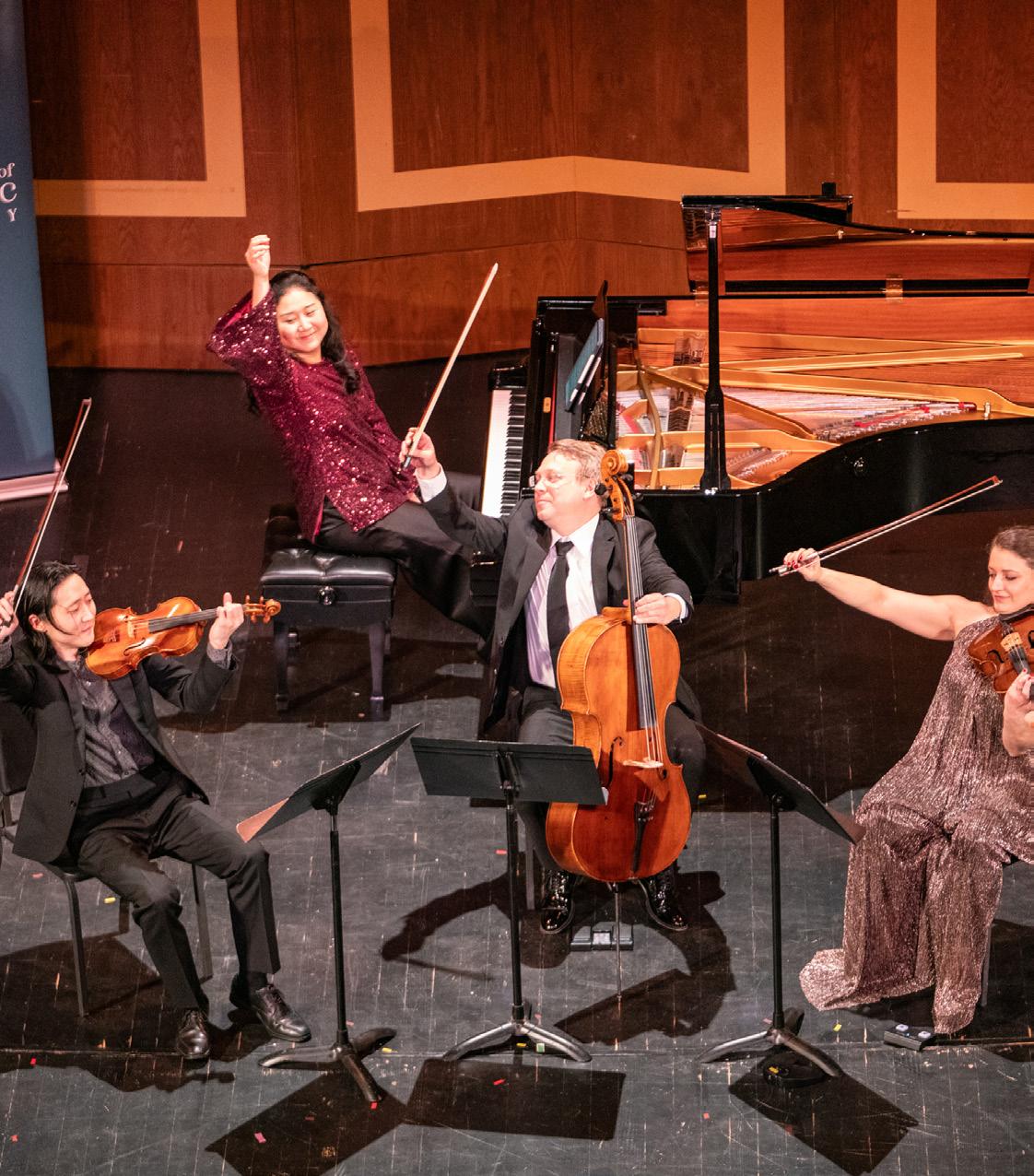


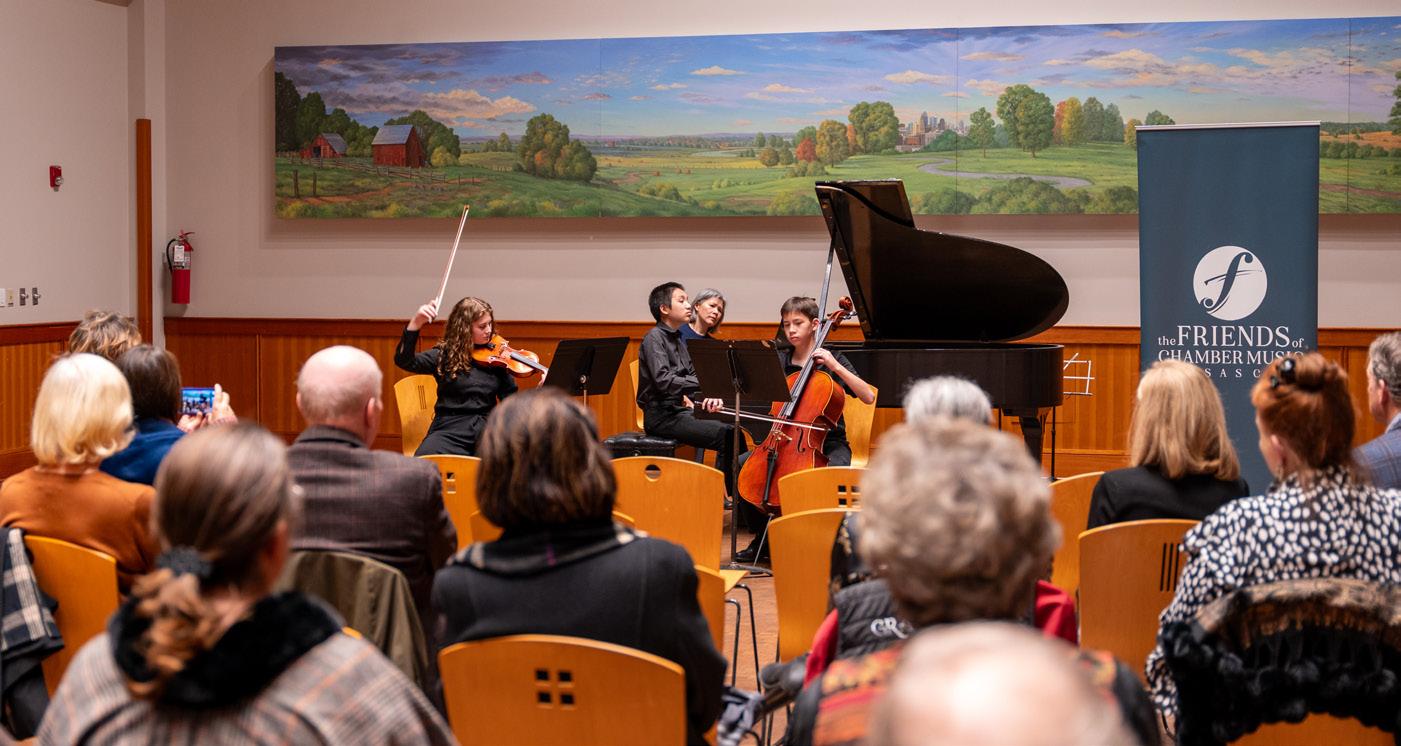


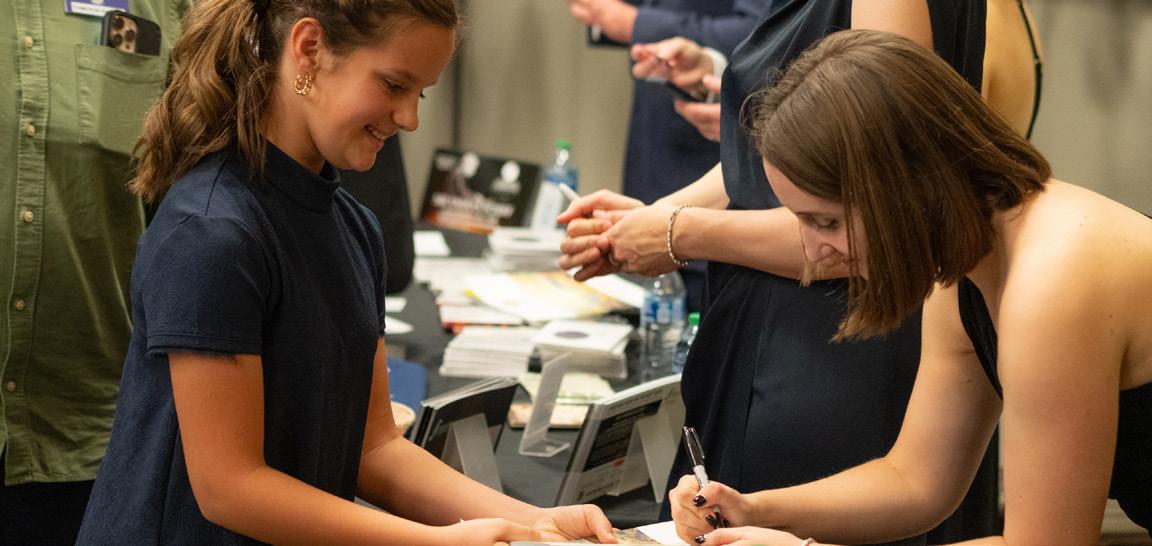



Engaging, enchanting, enthralling ...



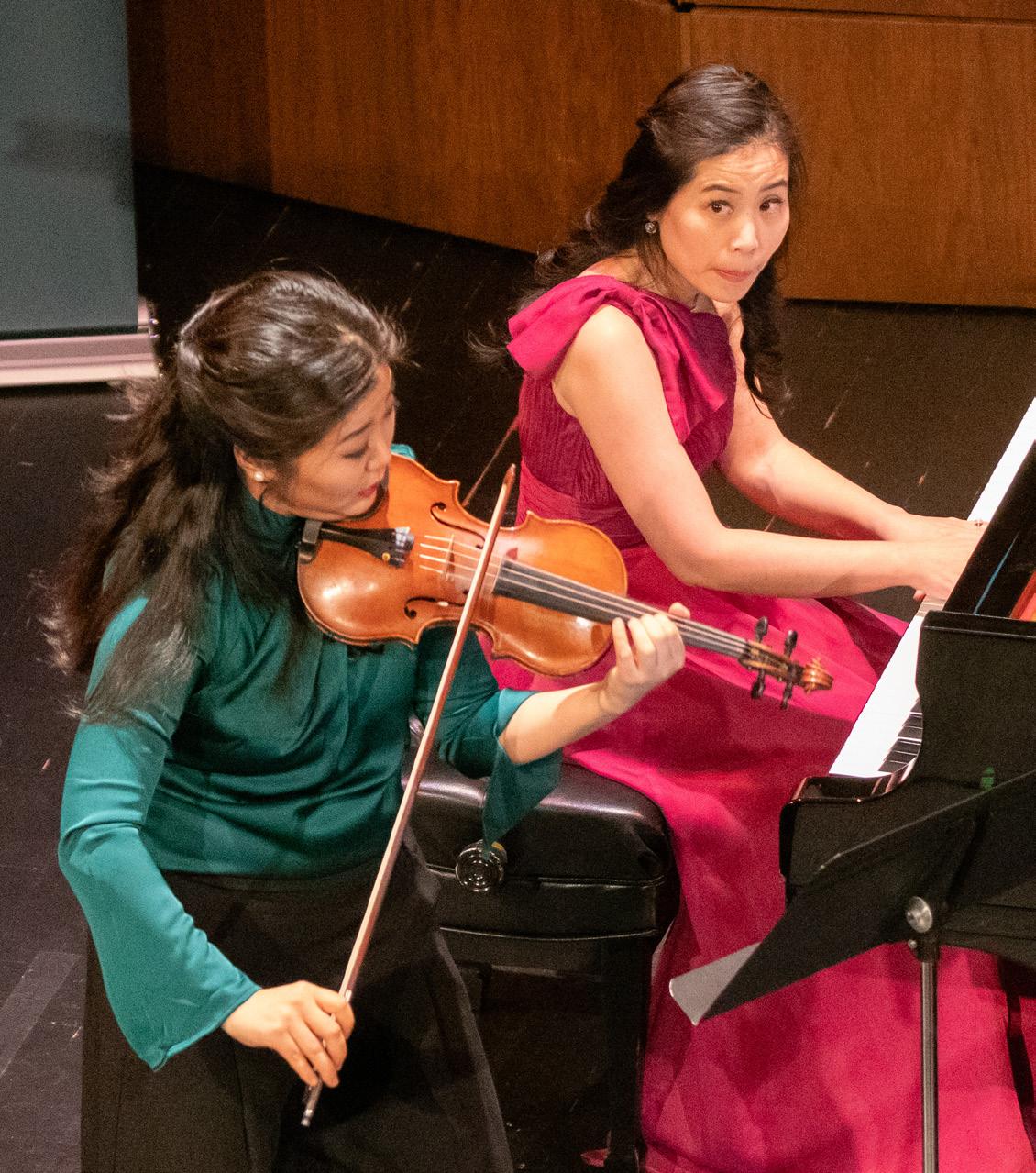
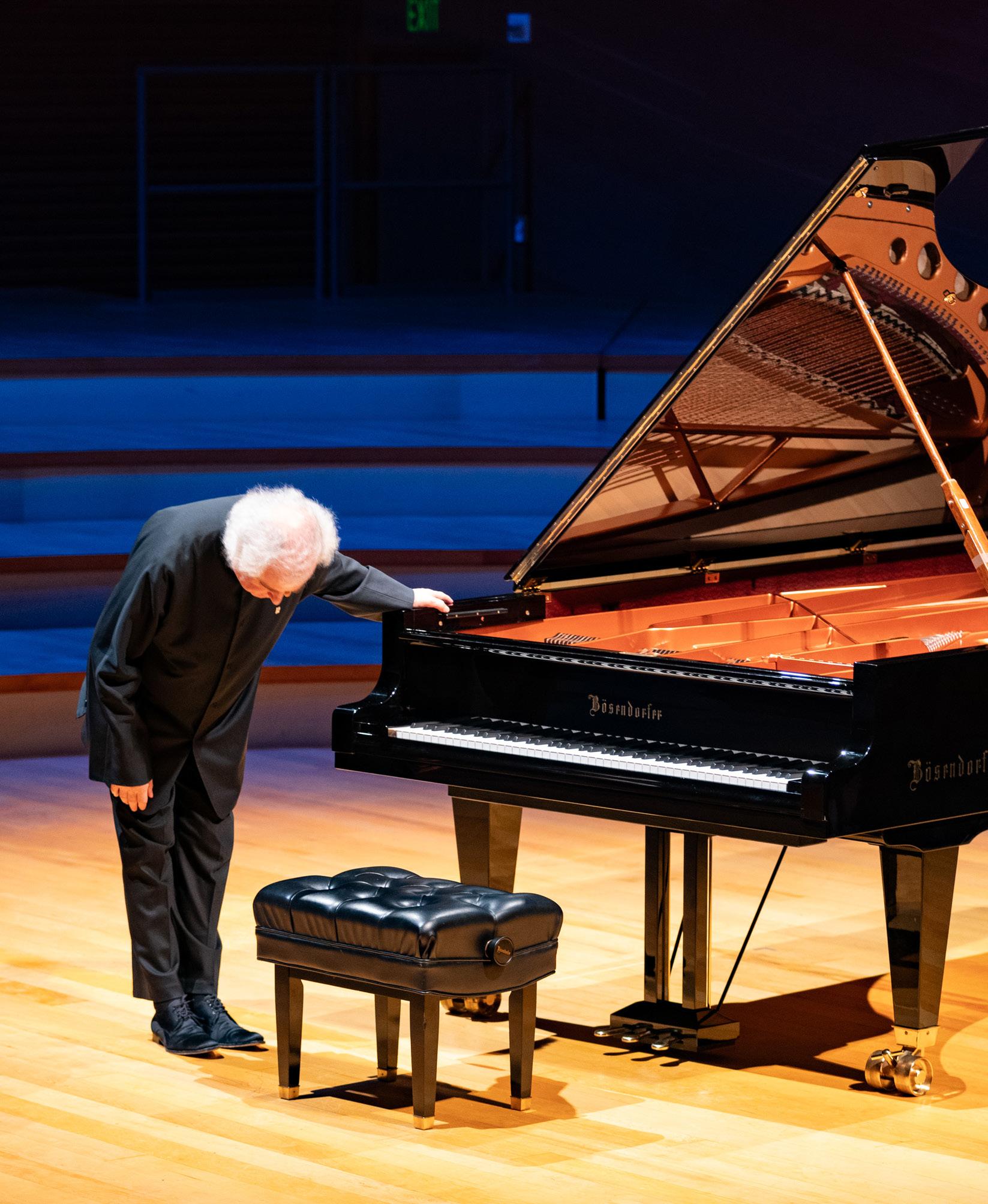



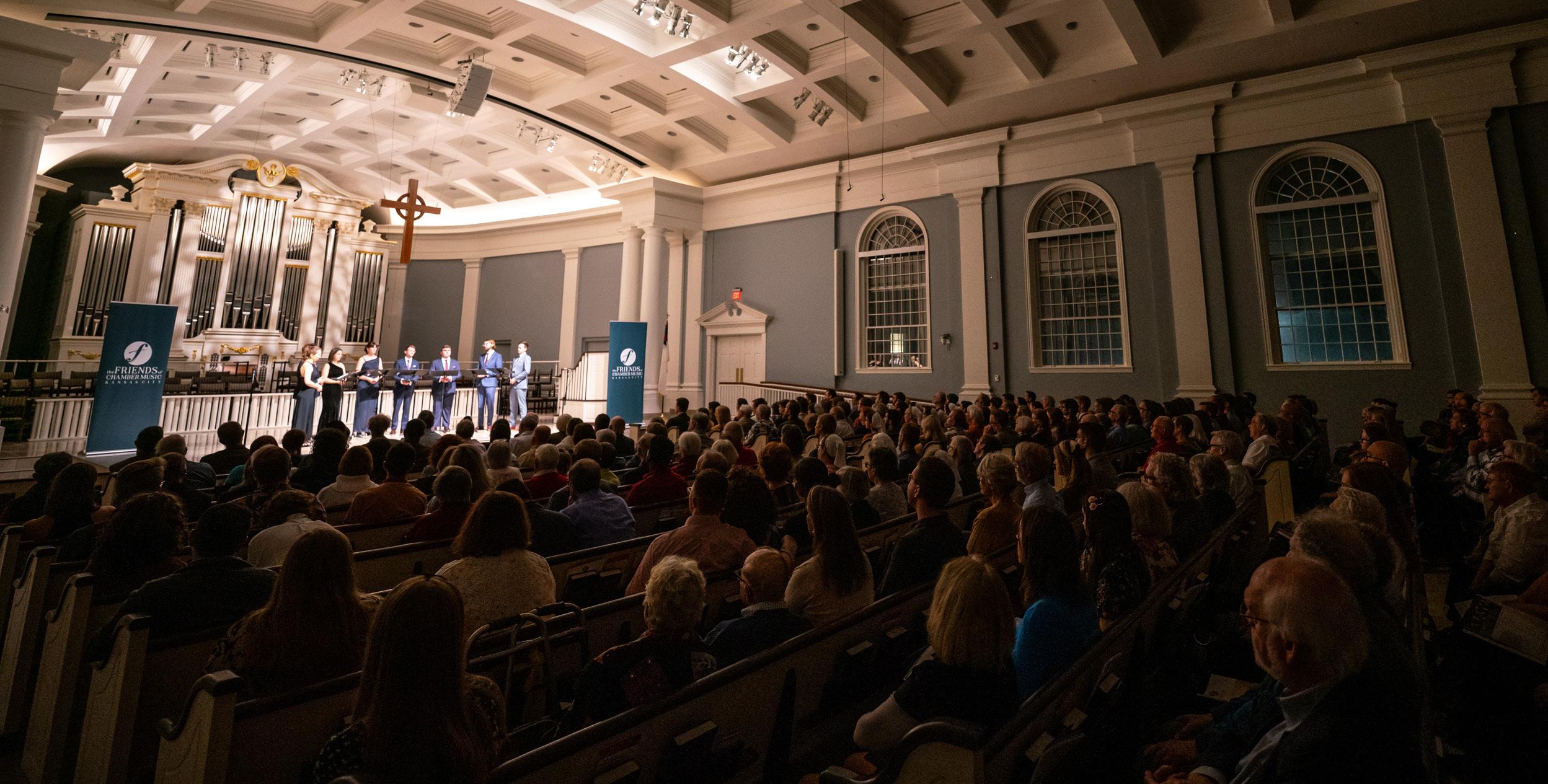


Harmony Project KC is transforming lives through the power of music!
This year, 375+ students will receive a premiere orchestra or band education at no cost.




TE DEUM CHOIR PRESENTS THE 2024-25 SEASON

Sacred choral music with intention
PEACEABLE KINGDOM
SEPT 21-22, 2024
A PRECIOUS CHILD
PALEST R INA
FEB 22-23, 2025



HAR M ONY OF CONNECTIONS
MAY 31-JUN 1,2025 DEC 16-17, 2024

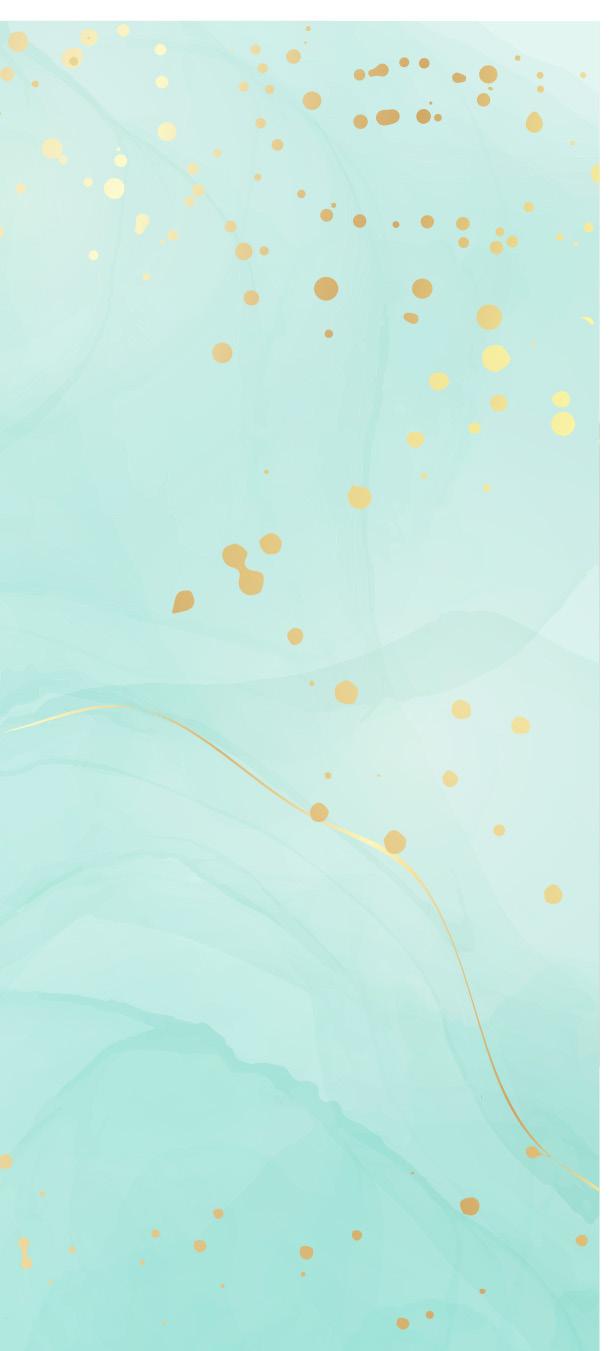

Absolute music Music that is not attached to text, drama, visual art, or any kind of representation.
Accompaniment The part or parts of music composition which supports a melody or principal part(s).
Adagio [It.] A very slow tempo.
Agitato [It.] Agitated.
Air An English or French song with rhymed poetry for solo voice and instrumental accompaniment; often in several verses and usually in the meter of a dance.
Allegretto [It.] A moderately fast tempo; often lighter in texture or character than an allegro.
Allegro [It.] A fast tempo.
Allemande [Fr.] A Renaissance and Baroque dance that was cultivated as an independent instrumental piece ca. 1580-1750. It became the first of the four core movements of the solo suite.
Andante [It.] A walking tempo.
Andantino [It.] Slighter faster and lighter than andante.
Arpeggio [It.] A chord whose pitches are sounded successively rather than simultaneously.
Ballade [Fr.] In the nineteenth century, a long, dramatic type of piano piece; the musical equivalent to a poetic ballad.
Barcarolle [Fr.] A song of the Venetian gondoliers, or a vocal or instrumental composition modeled on such a song.
Baroque The period or style in Western classical music extending from roughly 1600-1750. Music of this period was music characterized by strict forms, contrapuntal textures, and florid ornamentation. Prominent composers of the period include J.S. Bach, Vivaldi, and Handel.
Basso continuo [It.] An independent, continuous bass line in a piece of music that serves as an accompaniment to instruments or voices performing the melody. At a minimum, it consists of a keyboard instrument (harpsichord, organ, or a clavichord) and a bass instrument (viola da gamba, or a cello). In early Baroque works, a lute, guitar, harp, or theorbo may also participate as part of the continuo.
Basso ostinato [It.] A pattern of notes that is repeated over and over again during the course of a vocal or instrumental composition.
Bel canto [It. "beautiful singing"] Italian vocal style of the early 19th century characterized by lyrical, embellished melodies that show off a singer's voice.
Cadence A harmonic formula that concludes or resolves a musical phrase, section, or piece.
Cadenza [It.] An elaborate passage for the soloists in a concerto during which all other instruments are silent; usually near the end of a movement and often not written out by the composer but left to the performer to improvise.
Canon A piece, or moment in a piece, in which a subject or musical idea is imitated by one or more voices playing the same musical idea.
Cantabile [It.] Singing; songlike.
Cantata [It.] In the 17th and 18th centuries, a secular chamber work
for voice and accompaniment. The term also describes some pieces of Lutheran vocal music in the 18th century.
Cantillation The speech-like chanting of a liturgical text.
Cantus firmus [Latin, "fixed melody"] An existing melody, often taken from Gregorian chant, on which a new work is based.
Capriccio [It.] A humorous, fanciful, or bizarre composition, often characterized by an idiosyncratic departure from current stylistic norms.
Chaconne A Baroque form derived from a popular Latin American dance-song of the seventeenth century. The form consists of variations over a basso continuo.
Chamber music Music written for small ensembles and intended to be performed in more intimate spaces such as private or domestic spaces or in a small hall.
Chanson [Fr.] A French polyphonic song of the late Middle Ages and Renaissance.
Chant See plainchant.
Chorale Hymn in the Lutheran tradition.
Chord Three or more tones played simultaneously.
Chromatic From the Greek word for "color," the scale that includes all twelve pitches contained within an octave.
Classical (1) In Western classical music, the period or style extending from the early eighteenth century through the early nineteenth
century; (2) Art music, as opposed to folk or popular music forms.
Coda [It. “tail”] A concluding section of a composition or a movement, usually reinforcing the final cadence.
Coloratura Elaborate ornamentation using virutoso techniques such as runs, trills, and wide leaps to decorate a melody; operatic roles in which such music plays a major role, and singers of these roles are also called colloratura.
Concertante [It.] In 17th-century music, the combination of voices with instruments. The instruments do not simply support the voices but play independent parts.
Concertino A solo instrument or solo instruments playing with an orchestra.
Concerto A work for one or more solo instrument(s) accompanied by orchestra, often in three movements.
Counterpoint The combination of two or more melodic lines; the lines may proceed simultaneously and relatively independently.
Courante [Fr.] A Baroque dance movement in triple meter.
Cross-rhythm The shift of certain beats ahead or behind their normal positions in that pattern.
Development The development of a musical idea or ideas through variations or transformation; the middle section in sonata-allegro form.
Diatonic A scale with seven different pitches, made up of five whole and two half steps such as a major or minor scale.
Dissonance The perceived instability of a complex of two or more sounds; "clashing" sounds.
Divertimento [It.] An instrumental chamber music work in several movements; usually in light character.
Dolce [It.] Sweetly.
Dynamics The aspect of music relating to the degree of loudness or softness.
Espressivo [It.] Expressive.
Étude Literally a "study;" an instrumental piece designed to improve a player's technique.
Exposition The first section in a fugue, sonata, symphony, or concerto movement, where a subject or musical idea/theme is first heard or exposed.
Fantasia/fantasy A composition in no fixed form wherein a composer may follow freely his or her imagination.
Forte [It.] Loud.
Fortissimo [It.] Very loud.
French overture Type of overture that begins with a slow, majestic section followed by a faster second section.
Fret A piece of material placed across the fingerboard or neck and under the strings of some stringed instruments, limiting the strings to be played at a specfic pitch.
Fugue A composition, or section of a composition, in which the subject (initial melodic motive) is imitatively restated in successive iterations throughout multiple voices.
Galant A musical style in the 18th century that featured songlike melodies, short phrases, and light accompaniment.
Gigue [Fr.] A fast Baroque dance movement in binary form, usually in compound meter and usually the last movement of a Baroque suite.
Glissando [It.] A continuous movement from one pitch to another.
Grave [It.] Slow, solemn.
Grazioso [It.] Graceful.
Gregorian chant Named for Pope Gregory I, unaccompanied, monophonic music, codified in the 8th and 9th centuries and used as the basis for compositions in the Catholic Church for several centuries.
Harmony The simultaneous combination of notes.
Homophony Music in which one voice, carrying the melody, is supported by an accompaniment which is subsidiary to the melody; as opposed to monophony and polyphony.
Impromptu A title of a singlemovement composition, characterized by an off-hand style, as the result of sudden inspiration, but not necessarily of an improvisatory nature.
Intermezzo, also “intermedio” [It.] In 16th-century Italy, a short, light musical entertainment interpolated between more serious sections of more serious fare. In the 19th century, short, independent pieces composed by Brahms or Schumann among others.
Interval The distance between two pitches.
Kapellmeister [Ger.] The leader of a musical chapel or court ensemble which might provide both sacred and secular music.
Largo [It.] Very slow tempo.
Leggiero [It.] Lightly.
Lento. [It.] A slow tempo.
Libretto [It.] The text of an opera or oratorio.
Lieder [Ger.] German art songs.
Madrigal [It.] A secular vocal composition of the Renaissance and early Baroque.
Maestoso [It.] Majestic.
Mass The central service of the Roman Catholic rites, deriving from a ritual commemorating the sacrifice of Christ, usually made up of several sections that fall into two categories: the Proper (portions in which the texts change according to the liturgical calendar) and the Ordinary (portions in which the text never changes).
Mazurka A Polish folk-dance in triple meter with accents on the second or third beat; a stylized piano piece based on the danceMinuet/menuetto An elegant dance movement in triple meter.
Mode A type of scale, a schematic arrangement of pitches used as a basis for composition; used in music of the Medieval and Renaissance periods; also used in jazz and blues improvisation.
Moderato [It.] A moderate tempo.
Modulate To change from one key to another within a composition or movement.
Molto [It.] Literally "much" or "very;" used as a qualifier for tempo markings.
Monophony Music consisting of a single voice or line, for either one performer or an ensemble performing in unison, such as in chant. Most commonly found in music of the Middle Ages.
Motive [Fr. motiv] A brief musical idea too short to be called a theme.
Movement A complete and relatively independent part of a larger composition such as a sonata, quartet, concerto, or symphony.
Nocturne A short piano piece marked by an ornamented melody, lush accompaniments, and a contemplative mood; popular during the Romantic period.
Octave The interval made up of the first and eighth notes of a scale.
Office The daily services of the Roman Catholic rites; the practice of fixed daily hours of prayer.
Opus (abbr. Op.) "Work." The method of cataloging a composer's works usually indicating the order in which a composer's works were published, but not necessarily the order in which they were composed.
Oratorio An extended musical drama set to sacred text; often scored for vocal soloists, choir, and orchestra.
Ordinary Those parts of the Roman Catholic mass in which the texts do not change.
Ostinato Short musical pattern that persistently repeats throughout a piece or section of music.
Overture A composition intended as an introduction to a suite, opera, or other dramatic work.
Partita 1) In the late 16th and 17th centuries, a variation, usually on a traditional melody; 2) in the late Baroque period and early Classical period, a type of multi-movement instrumental suite, whose movements are based on dances that have become stylized and suitable only for listening.
Passacaglia A continuous variation form, principally of the Baroque.
Pedal point A sustained bass note over which contrasting harmony is played.
Phrase A portion of melody that has a distinct beginning and ending.
Piano [It.] Soft.
Pianissimo [It.] Very soft.
Pitch The highness or lowness of sound.
Pizzicato [It.] In string playing, the directive to pluck the strings of an instrument with the fingers or thumb.
Plainchant A sacred, unaccompanied vocal work with no harmony, only a single voice or multiple voices singing in unison.
Poco [It.] Little or less.
Polonaise A Polish dance in triple meter, or a piece of music in the style of a polonaise.
Polyphony Music combining several lines, each of which retains its identity as a line to some degree.
Prelude A piece or movement that precedes and introduces other movements of a larger work, such as a partita or a suite.
Presto [It.] Very fast.
Program music Instrumental music that tells a story.
Proper Those parts of the Roman Catholic mass in which the texts change daily with the liturgical calendar.
Psalmody The singing of Psalms in worship.
Recapitulation In sonata-allegro form, the third section of a piece of music which restates material from the exposition.
Recitative [It.] A vocal style designed for the speech-like declamation of narrative episodes in operas, oratorios, or cantatas.
Ricercar [It.] In the early to mid-sixteenth century, a prelude in improvisatory style; from the late sixteenth century on, an instrumental piece involving imitating subjects.
Ritornello [It. “little return”] A short, recurrent instrumental passage.
Romantic era In Western classical music, the period usually considered to have spanned the early to late nineteenth century.
Rondo [It.] Usually the final movement of a sonata, a quartet, or a symphony; a form prominent in the Classical period in which a main theme alternates with contrasting episodes.
Sarabande [Fr.] A slow, stately, highly ornamented Baroque dance in triple meter; usually part of an instrumental suite.
Scale A schematic arrangement of notes in ascending and descending order of pitch, used as the basis
for music compositions most notably from the seventeenth through the twentieth centuries.
Scherzo [It. “joke”] A movement of a sonata, symphony, or quartet usually written in a light, rapid style often with a contrasting trio section.
Semitone A half step; the smallest interval typically used in Western music.
Sinfonia [It.] In the late seventeenth and eighteenth centuries, the generic title for an orchestral piece used as an introduction, interlude, or postlude to an opera, oratorio, cantata, or suite.
Singspiel [Ger.] Literally "singing play;" a German genre of opera, consisting of spoken dialogue interspersed with songs, choruses, and instrumental music.
Sonata [It.] A composition for one or more instruments, usually in several movements.
Sonata-allegro form A large-form movement in three parts: exposition, development, and recapitulation; an ABA form most commonly employed in sonatas, string quartets, concertos, and symphonies.
Staccato [It.] Literally "detached;" a manner of performance in which each note is shortened and separated from the notes that follow.
Subject A melody or melodic fragment on which a fugue is based.
Suite [Fr.] An instrumental work comprised of different movements with some element of unity, often performed as a single work. The piece's unity may be derived from a common key, or from some thematic connections and overall form.
Symphonic poem A one-movement work of program music for orchestra that relates a poetic idea or story.
Symphony (1) A large-scale composition usually based on sonata form, usually in multiple movements written for orchestra; (2) a large-scale instrumental ensemble.
Syncopation Temporary disruption of a steady rhythm by placing a strong note on a weak beat.
Tempo The speed at which a composition is performed. Common tempo markings include (listed from slow to fast): largo, lento, adagio, andante, allegretto, allegro, vivace, presto, prestissimo.
Texture The overall quality of sound in a piece when all of its elements— tempo, melody, and harmonic materials—are combined.
Theme The principal melody in a composition or in a section of a composition.
Theorbo A large bass lute which was developed in the late sixteenth century especially for basso continuo.
Timbre Tone color; the character of a sound, as distinct from its pitch; the quality of a sound that distinguishes one instrument or voice from another.
Time signature The sign placed at the beginning of a composition or during the piece to indicate its meter.
Toccata An instrumental composition, often featuring several virtuosic sections, designed to show off the player’s technical capabilities.
Tonal In Western music, the organized relationship of tones with reference to a definite key center or tonic; generally, a work written in a specific
scale or key.
Tonic The first degree, or pitch, of a diatonic scale.
Tremolo [It.] The fast, unmeasured repetition of a single note or alternation between two notes.
Triad A chord consisting of three pitches, each pitch usually separated by the interval of a third or fourth.
Trill The rapid alternation of two tones either a whole or half step apart.
Tutti [It.] In a concerto, the ensemble, as distinct from the soloist(s); a passage for the ensemble.
Unison Simultaneous performance on the same pitch.
Variation The compositional technique in which a musical idea or theme is manipulated and repeated with various changes.
Viol Any of a family of fretted, bowed stringed instruments in use from the 16th through much of the 18th century.
Viola da gamba [It.] In the 16th and 17th centuries, a bowed stringed instrument played on or between the legs, as distinct from one played on the arm.
Vivace [It.] Lively; brisk.
Vivace alla marcia [It.] Lively, brisk; in the manner of a march.
Voice (1) The human voice; (2) a single part or line in an instrumental composition.
Note: These definitions are taken from The New Harvard Dictionary of Music, edited by Don Randel; The New Oxford Companion to Music, edited by Denis Arnold; and The New Grove Dictionary of Music, edited by Stanley Sadie; with additional edits by the Friends of Chamber Music staff .
BWV Bach Werke Verzeichnis, the catalog of the works of Johann Sebastian Bach, developed by Wolfgang Schmieder.
D The Deutsch Catalog contains Franz Schubert's compositions as compiled by Otto Erich Deutsch.
H H. Wiley Hitchcock's catalog of Charpentier's works: The oeuvres de Marc-Antoine Charpentier.
Hess A catalog of Beethoven's works compiled by Swiss musicologist and composer Willy Hess in 1957.
Hob The catalog of Joseph Haydn's works, compiled by Anthony van Hoboken.
S Franz Liszt's works, identified by S numbers, were cataloged by Humprey Searle in 1954.
WoO Werk ohne Opuszahl [work without opus number] refers to the catalog designation of some of Beethoven's works that were not assigned an opus number.

The newly restyled Kansas City Marriott Downtown offers sleek conveniences like onsite parking, superb food and beverage offerings, and luxurious guest rooms –just steps away from the area’s prominent destinations and theaters. Extend your evening and be uniquely entertained by Kansas City’s largest indoor video wall in BarCentral or at the new VOO Lounge+Piano Bar.
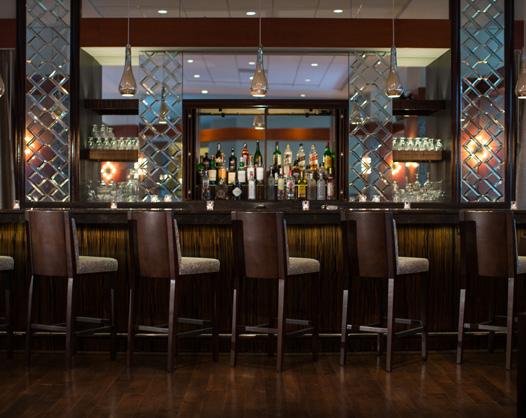













- Becky N. Lowry, MD Physician Internal Medicine
For me, there’s nothing more rewarding than the meaningful connections I make with my patients. Maybe it’s growing up in a small town where those personal values remain strong. Or maybe it’s the belief, shared with all of my co-workers, that people come first. Whatever it is, the opportunity to provide care is a privilege I never forget.
To schedule an appointment, call 913-588-1227 or visit KansasHealthSystem.com/Appointments.


